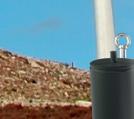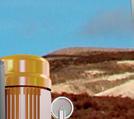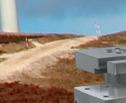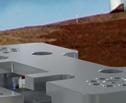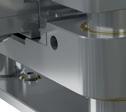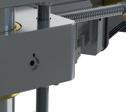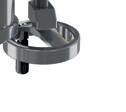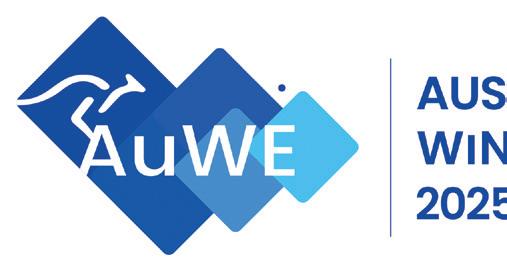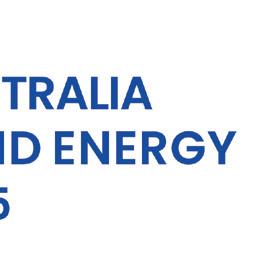


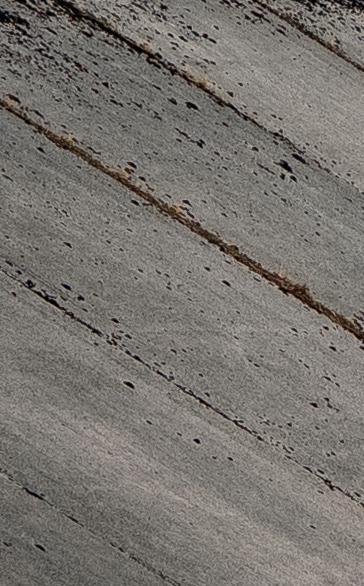






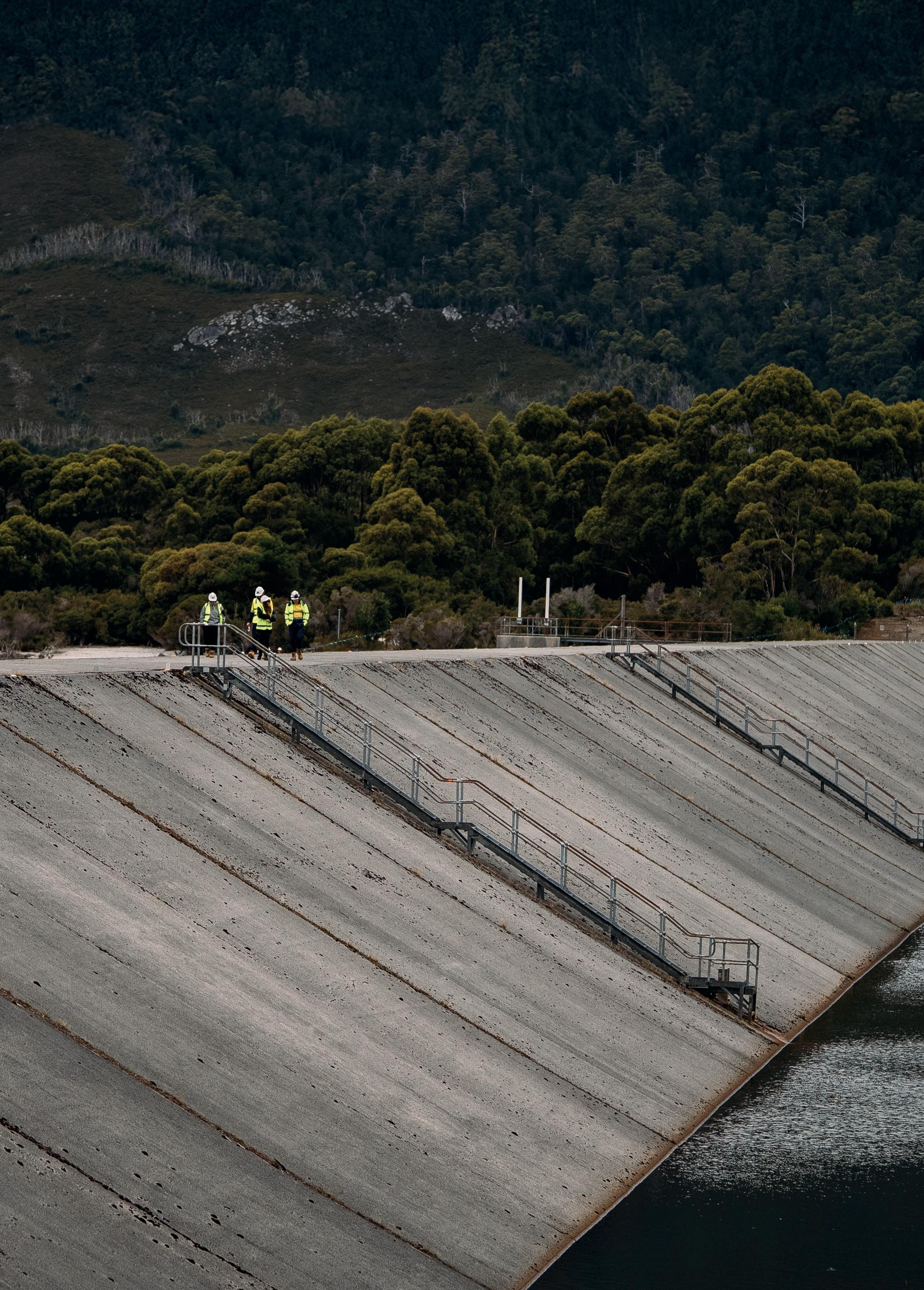











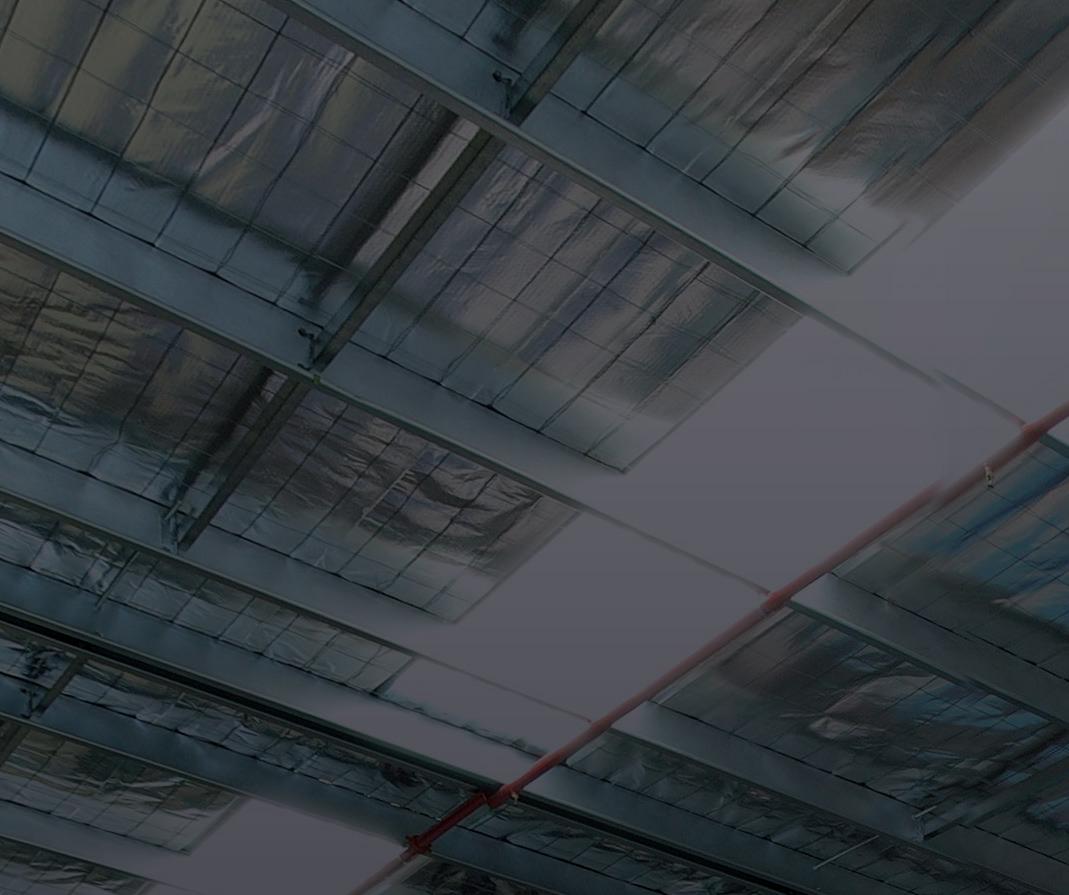
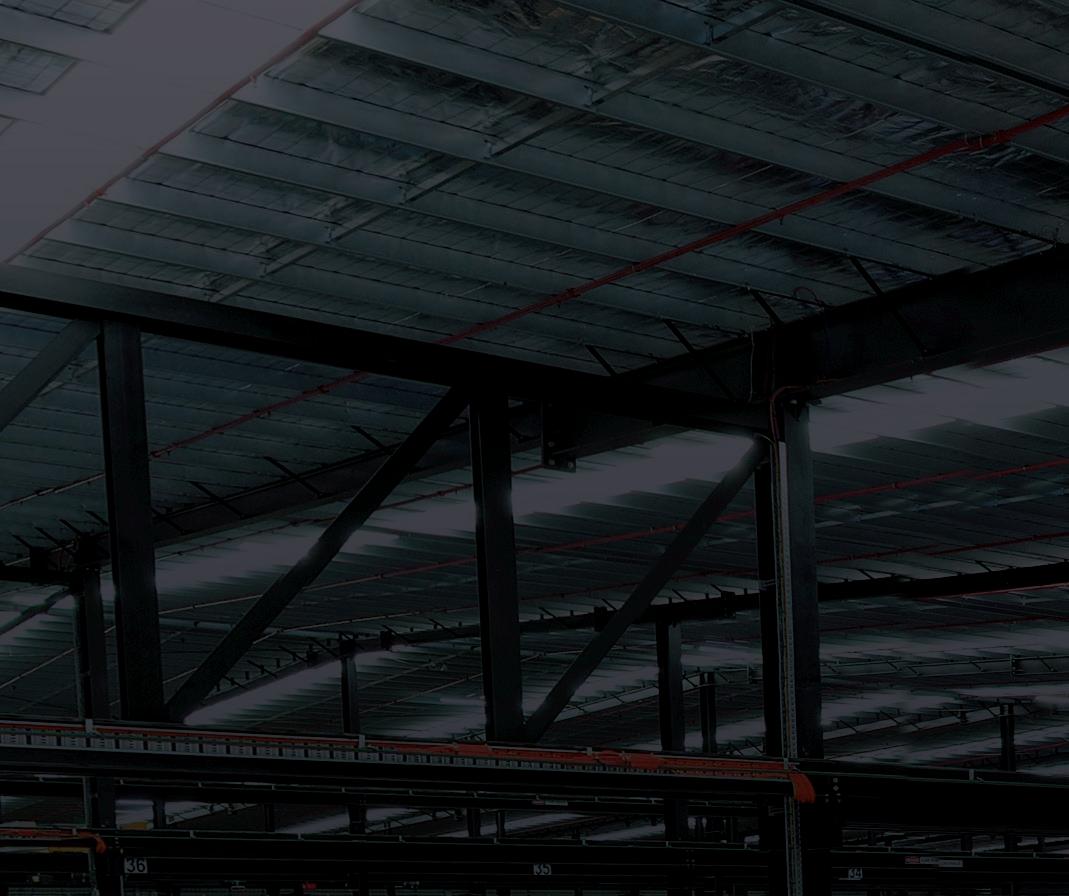
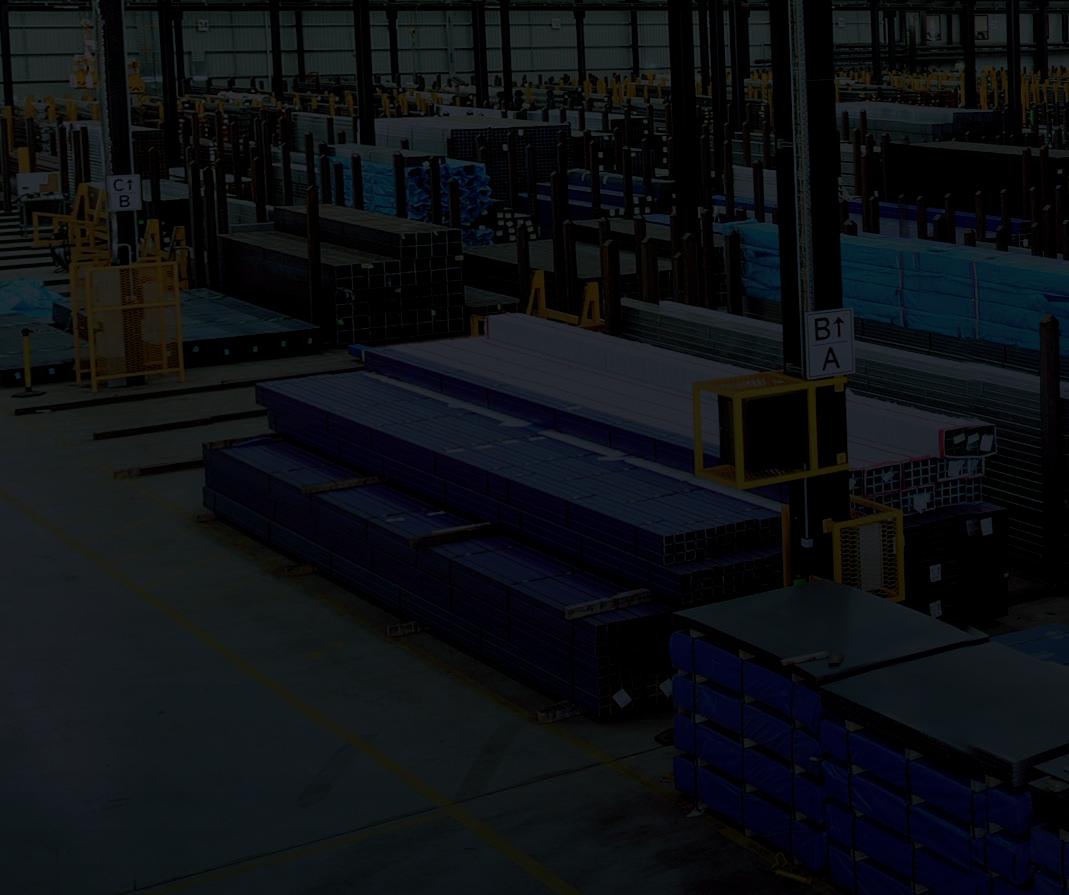
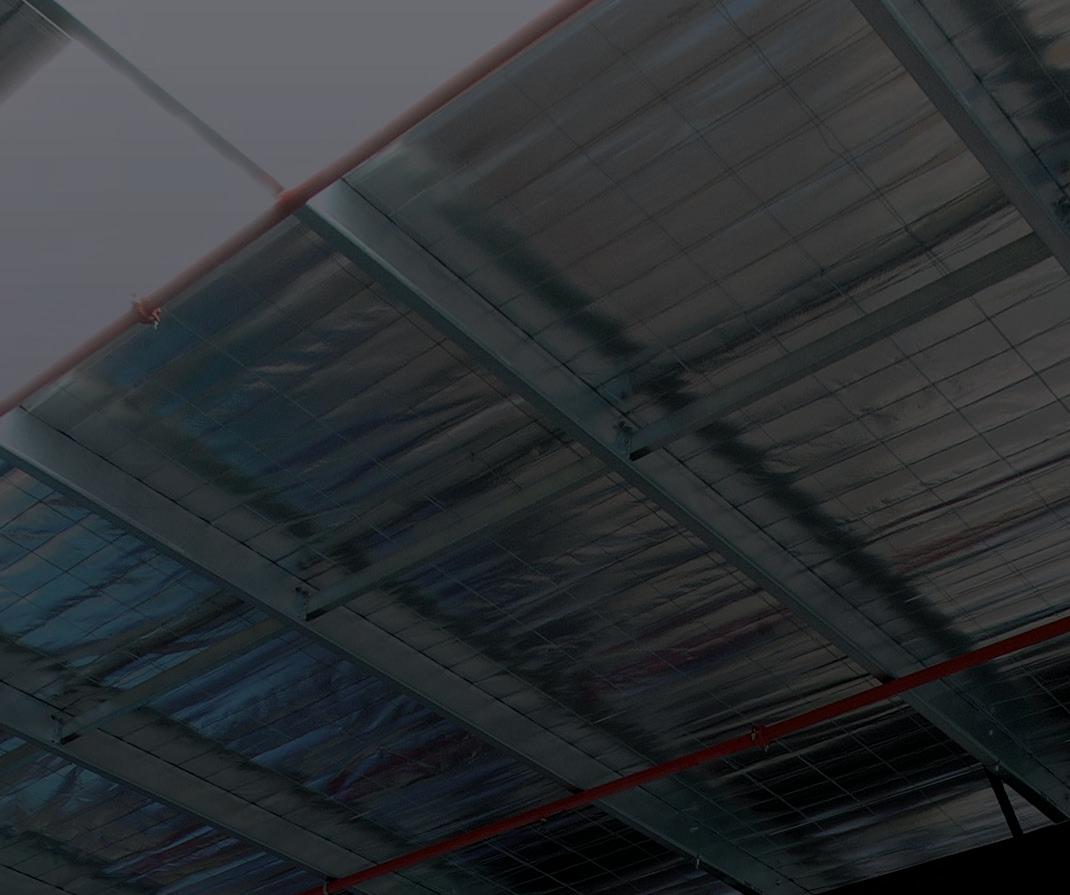
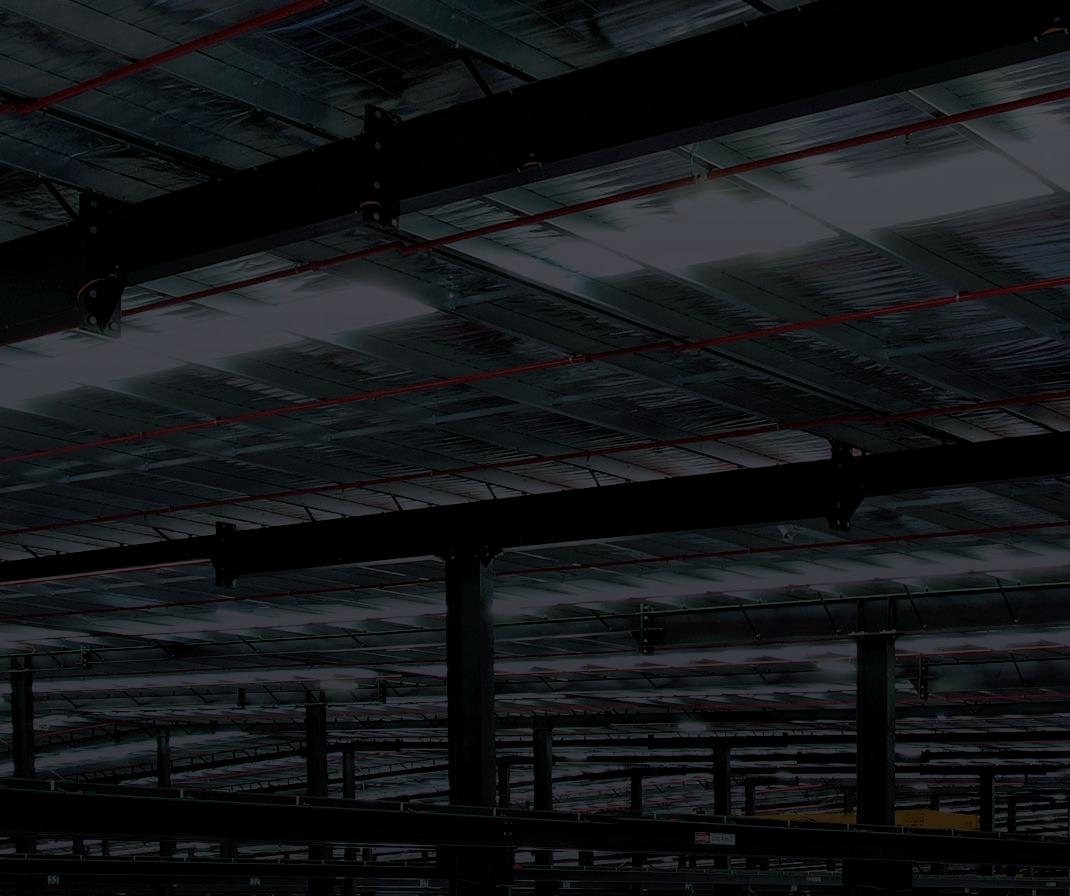







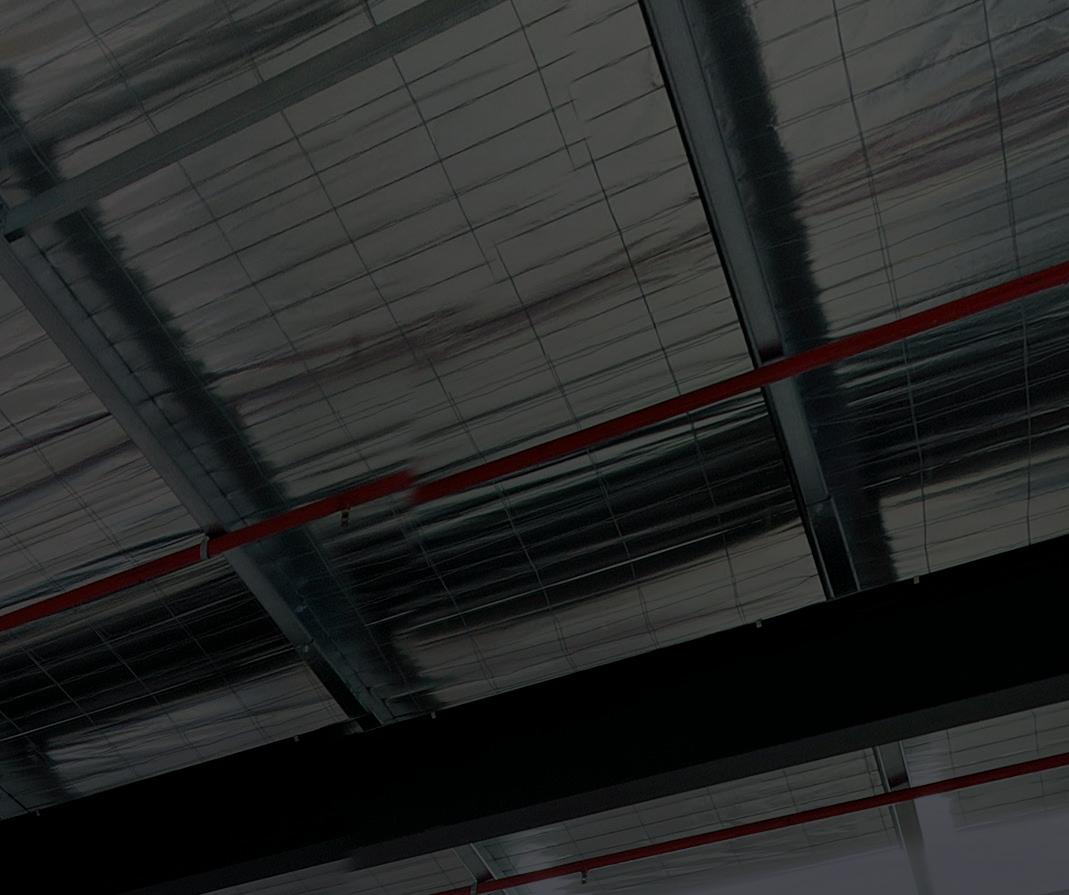
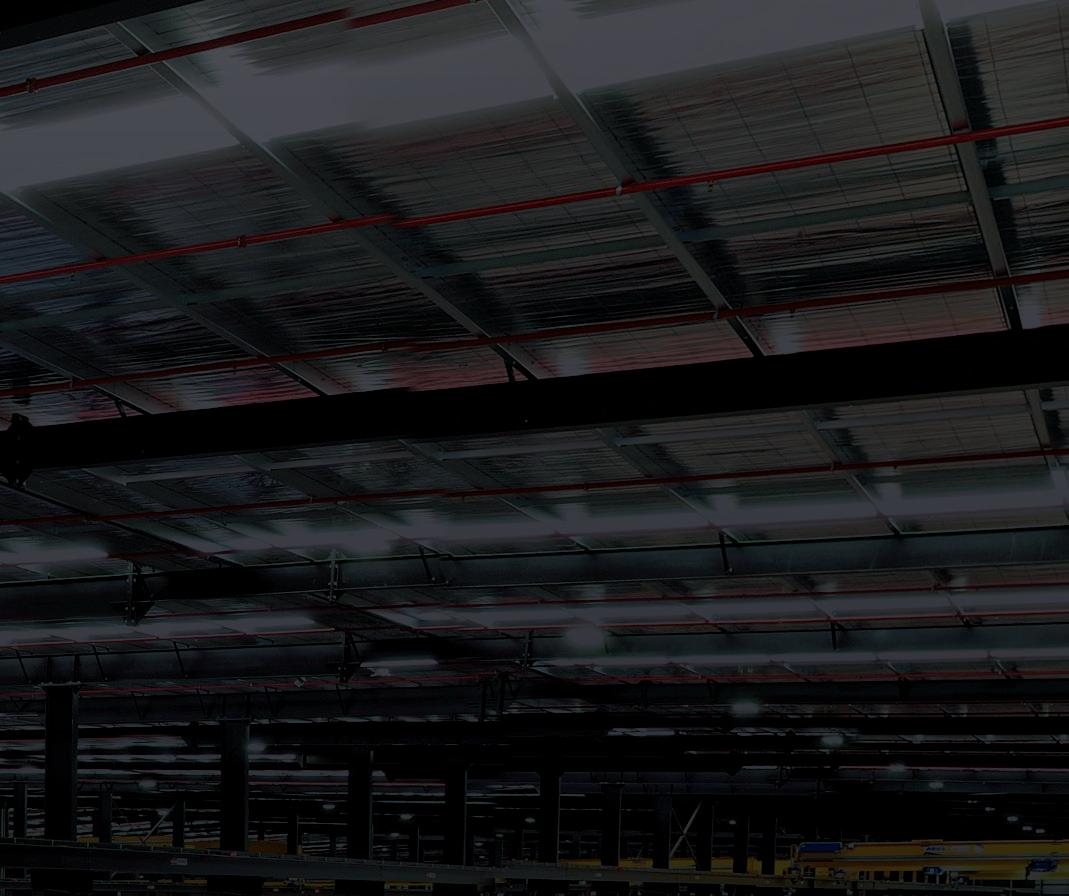
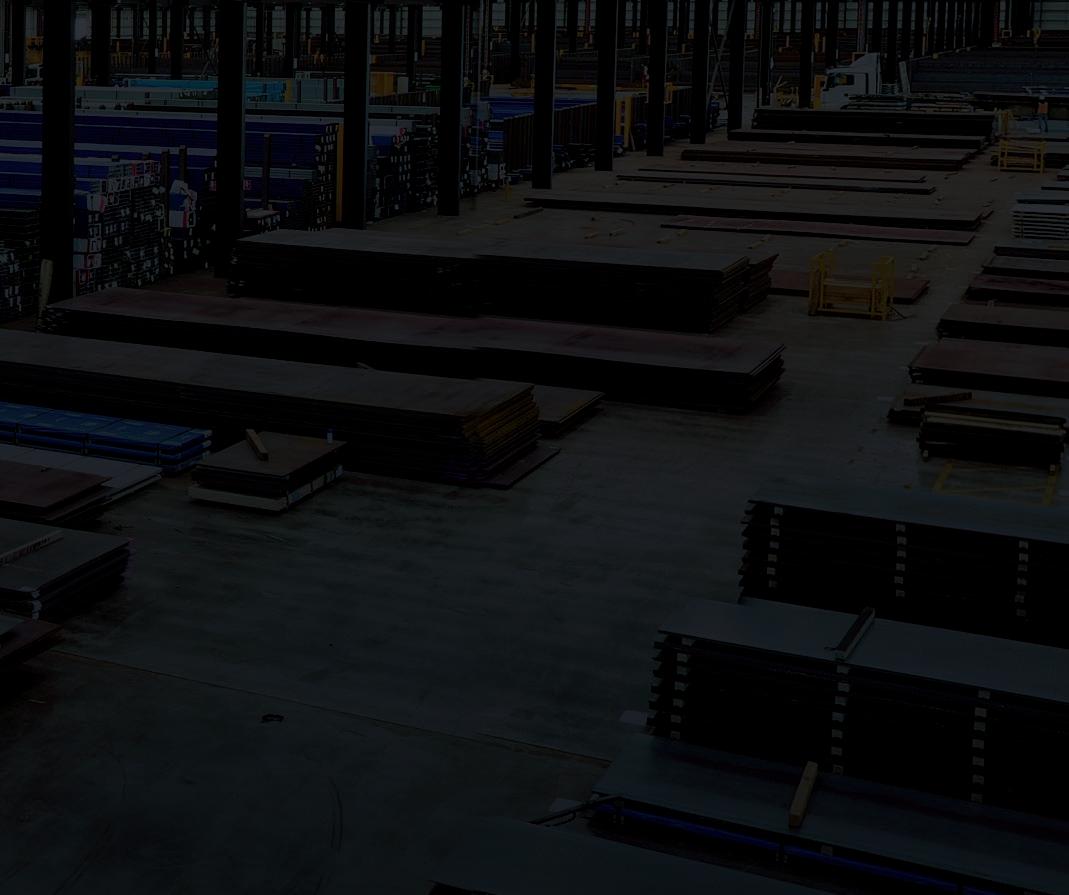

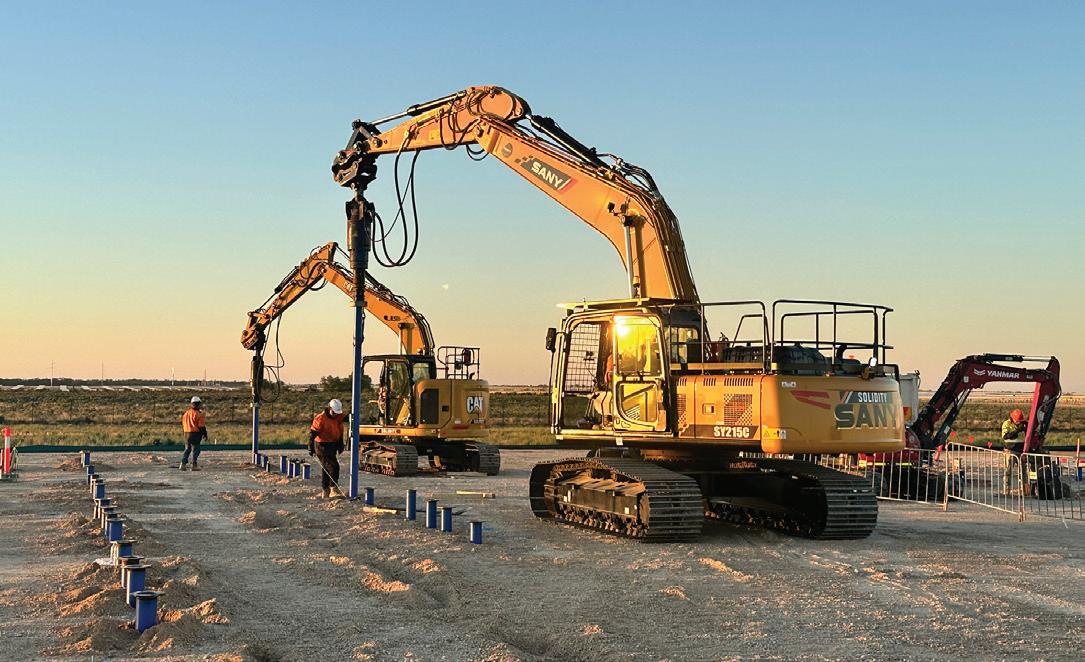
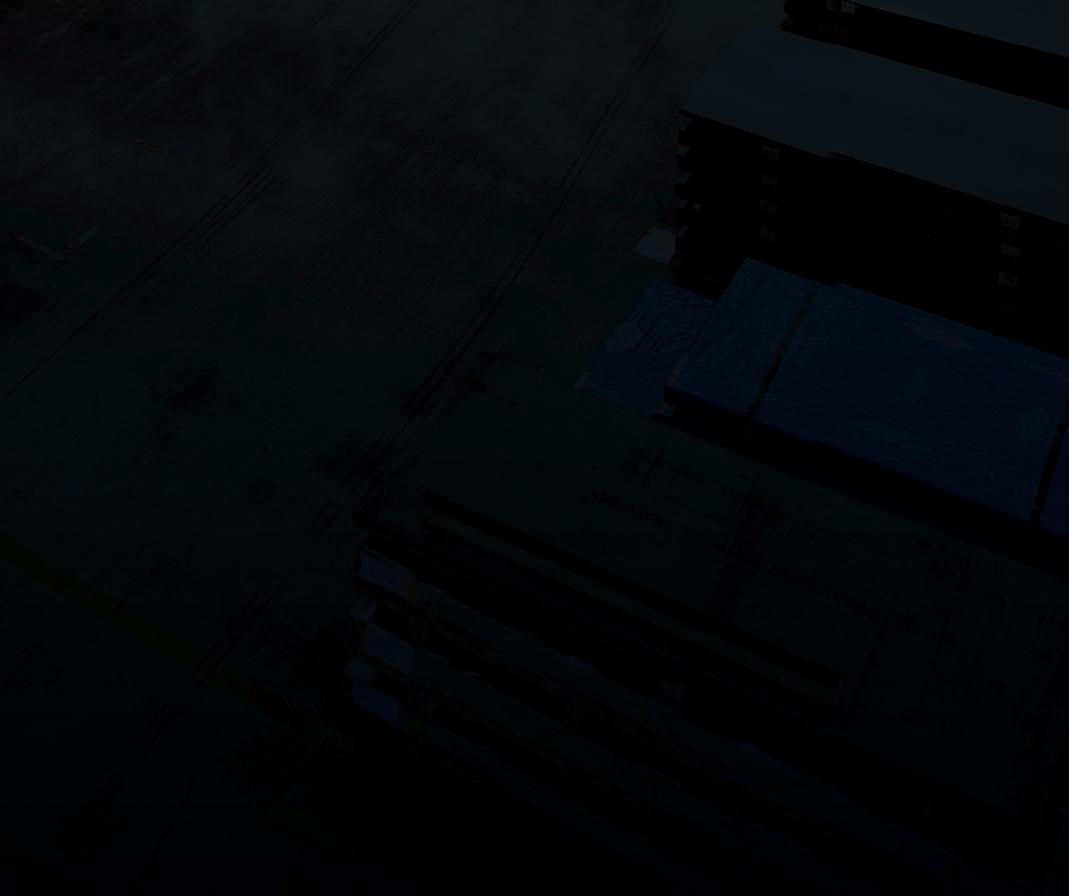















































As we head into the first weeks of winter, it’s hard to believe we’re already halfway through 2025 – what a year it’s been.
Since our last issue, Australia has taken to the polls for the Federal Election and, once again, energy took centre stage. With the two major parties presenting vastly different directions for the industry, there were many questions about what Australia’s energy future would look like.
changes that lie ahead. In this issue, Energy Consumers Australia CEO, Brendan French, shares his thoughts on the role of proactive planning as Australia moves away from gas, and how the government can guide consumers through the process.
Chief
Art Director Alejandro Molano
National Media Executive Brett Thompson
Client Success Manager
Louisa Stocks
Head Office
Prime Creative Pty Ltd
379 Docklands Drive
Docklands VIC 3008 Australia P: (03) 9690 8766 enquiries@primecreative.com.au www.primecreativemedia.com.au
Now that the result is in, it seems the sector will forge ahead on its current path, with the Federal Government standing by its existing policies. But there’s still a long road ahead for Australia to reach net zero, so to kick off our June issue, we share some of the industry’s key recommendations.
While promises about energy policies dominated the headlines in the lead-up to the election, conversations about the workforce powering the transition continued behind the scenes. According to Powering Skills Organisation, building the workforce of tomorrow will require the industry to cultivate a culture of lifelong learning, and in this issue we shed some light on what that might look like.
We also showcase some of Hydro Tasmania’s initiatives to inspire the next generation, as the utility works to engage students and young people with hydropower careers, helping lay the groundwork to secure the passion and skills needed to power the state for decades to come.
Supporting a strong, skilled workforce to build Australia’s energy future is crucial. Equally important, though, is ensuring consumers can navigate the
As consumers transition to more sustainable solutions, we turn our attention to one group that has largely been left behind: apartment residents. While Australia has long been a leader in rooftop solar adoption, thousands of people living in multi-tenant properties have been unable to harness the power of the Australian sun. We explore the barriers they face and highlight some potential paths forward.
We are also proud to partner with Australian Energy Week 2025 (17–20 June) for Energy June, and we’re thrilled to share some insights from some of this year’s top exhibitors. The event will run from 18–19 June at the Melbourne Convention and Exhibition Centre, and we hope to see you there.
Speaking of events, we’re also looking forward to attending Australia Wind Energy 2025 on 17–18 July at the Melbourne Convention and Exhibition Centre. If you’re attending, you can visit us in the media centre – we’d love to say hello.
We hope you enjoy reading this June issue of Energy as much as we enjoyed putting it together. If there’s a story, project, topic or challenge you’d like to see us cover in a future edition, please get in touch.
Sarah MacNamara Editor
If you have a story idea, tip or feedback regarding Energy, I’d love to hear it. Drop me a line at sarah.macnamara@primecreative.com.au , and don’t forget to follow us on social media – find us on LinkedIn, X or Facebook.
22
52


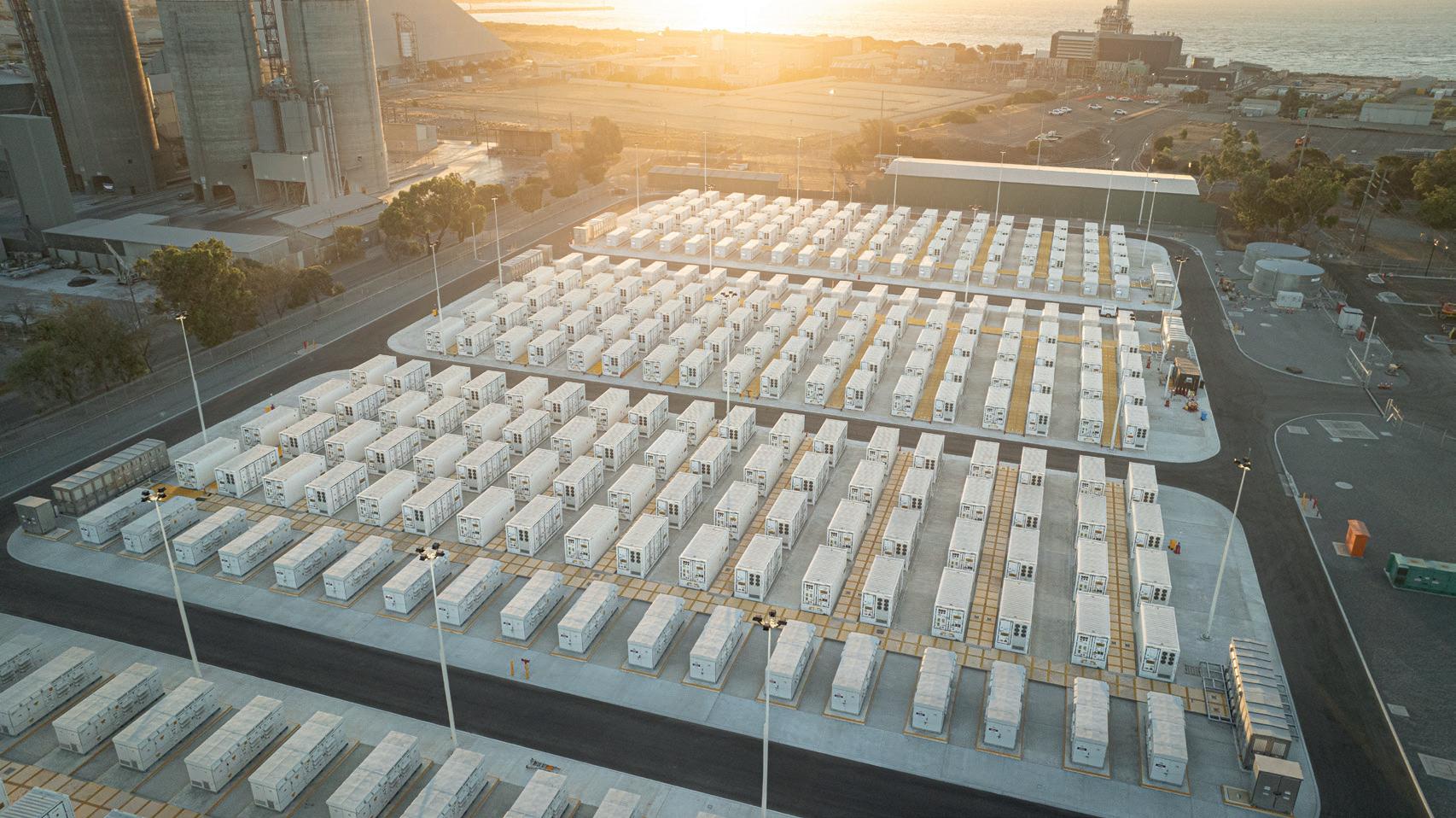

• Charge your battery for free — directly from the grid*
• Get paid when you use your battery*
• Get paid more for your solar*
GloBird Energy’s ZEROHERO plan is designed to maximise the value of every battery you install. With features that boost your customers’ return on investment, ZEROHERO makes it easy to demonstrate the real benefits of buying a solar battery system.
Partner with GloBird Energy today — and focus on what you do best: selling and installing batteries. We’ll take care of the rest..

As the dust settles on the 2025 Federal Election, the energy sector has offered its thoughts on what the results mean for Australia.

The 2025 Federal Election placed Australia’s energy future firmly in the spotlight, with the major parties presenting two different paths to keeping lights on around the country.
Clean Energy Council (CEC) Chief Executive, Kane Thornton, described it as “a referendum on renewable energy”.
For the energy sector, the result
largely signals continuity. The Federal Government is expected to continue with the steps outlined in its existing Net Zero Plan and Powering Australia strategy, continuing towards the 82 per cent renewables by 2030 target. The most notable change is the addition of the $2.3 billion Cheaper Home Batteries Program, expected to roll out from 1 July 2025, reducing the cost of a typical installed battery by 30 per cent.
With the election now officially in the books, the industry has shared some of its key priorities for the upcoming term of government.
According to Thornton, the Australian people reconfirmed their strong support for wind and solar backed by batteries, pumped hydro and a small amount of gas.
“It’s now time to leave the politics behind and get on with the job of rolling out renewable energy to deliver affordable and reliable power for all Australians,” he said.
The CEC encouraged the Government to ensure new policies maximise investor certainty and deliver lower power prices and benefits to regional Australia, as well as reform to environment and planning laws and reform to the energy market to ensure clearer incentives for new investment, including for long duration energy storage.
Thornton also called for the need to continue working together to educate and engage the public on clean energy.
“We look forward to working with the Federal Government and the next Australian Parliament to ensure strong, stable and effective policy for the transition to clean energy,” he said.
Australian Energy Council Chief Executive, Louisa Kinnear, said the country is in the middle of an eradefining energy transformation that requires policy stability, continuity, and long-term reform that can endure beyond election cycles.
“We encourage all members of the 48th Parliament to commit to working to deliver the energy transition for the benefit of Australians,” she said.
Kinnear said the energy system of 2050 will be delivered by wind and solar, backed by hydro, storage and gas.
“There is sufficient understanding across the energy industry about the critical factors that will deliver the lowest-cost transition. Now we just need consistent, enduring and coordinated policy.”
The AEC’s key energy priorities for the Federal Government include focusing on affordability, harnessing consumer energy resources, backing the National Electricity Market (NEM) review, prioritising system security, and ensuring gas supply for electricity generation and retail.
“We look forward to working with the Federal Government and the next Australian Parliament in support of strong, stable and effective energy policy.”
Energy Efficiency Council
The Energy Efficiency Council (EEC) believes the election result sets the stage for a big ramp up in ambition on emissions goals, efficiency and electrification.
Chief Executive Officer (CEO), Luke Menzel, said there are still a number of policies on efficiency and electrification still sitting on the to-do list.
“With the nation’s trajectory to a high penetration renewable energy system now locked in, any additional cuts in carbon emissions will need to come from the demand side,” he said.
Menzel nominated the electrification of homes, manufacturers and food processors as low hanging fruit.
“We have the technology to pair efficiency and electrification to decarbonise vast swathes of the Australian economy, but we’re yet to see the serious policy and investments we need to get it done,” he said.
Among EEC recommendations for the government are upgrades to homes for health, comfort and efficiency, supporting business energy upgrades, setting national energy performance targets, strengthening the role of the demand side in the electricity market, aligning and modernizing retailer energy efficiency schemes and accelerating commercial builder efficiency.
Menzel said acting on these policies quickly will be critical to driving down energy bills and ramping up Australia’s emissions reduction effort.
“We’re looking forward to working with the Federal Government to get it done,” he said.
The Australian Energy Producers Chief Executive, Samantha McCulloch, said the decisive election result provided an opportunity for energy policy certainty and stability in the next term of Parliament.
“Australia and our region’s economic growth and energy security needs reliable and affordable gas supply, which requires continued investment in new gas exploration and development.”.
McCulloch said the Federal Government needs to prioritise implementing actions from the Future Gas Strategy and addressing the regulatory delays and uncertainty in the environmental approvals system.
The AEP’s election platform calls for the Federal Government to boost Australian gas supply to ease cost of living pressures, restore Australia’s global competitiveness for investment, deliver real emissions reductions with gas and carbon capture, utilisation and storage, and remain a reliable energy partner.
“We look forward to working with the Federal Government on advancing
the shared goal of boosting Australian gas supply to ensure reliable and affordable energy for Australian homes and businesses.”
The RE-Alliance said the Federal Election result is an invitation to get renewables done right in the regions.
RE-Alliance National Director, Andrew Bray, said, “We now need to redouble our efforts to ensure the shift to renewables is actively contributing to the strength and resilience of our regions.
“Let’s take the opportunity to work with our communities to ensure that renewable projects are done right.”
Mr Bray said polling consistently shows that people in the regions generally support the shift to renewable energy, so long as it’s done in a way that benefits communities and minimises impacts on nature.
“We look forward to working with regional MPs from all parties on practical solutions that ensure regional communities have the information and resources to participate in and benefit from the energy shift that is underway across the country.”
Rewiring Australia said the election result paves the way for meaningful commitments, such as the Cheaper Home Batteries Program, to be implemented.
Rewiring Australia Founder and Chief Scientist, Saul Griffith, said the program will drive down power bills. “Upfront costs are a big barrier to entry when it comes to home batteries, so knocking 30 per cent off the price of installation is a great step in the right direction,” he said.
Rewiring Australia also said the continuation of the Federal Government’s policies will ensure the country remains on the path to achieving 82 per cent renewable energy by 2030.
“We are looking forward to working with the Federal Government to achieve its renewable goals,” Rewiring Australia CEO, Francis Vierboom, said.
“We also want to encourage the government to continue to accelerate electrification and bill savings for Australian households – including finance that works for low-income homes, a strategy for rental energy bills, and further incentives to drive down the upfront cost of electrification,” he said.
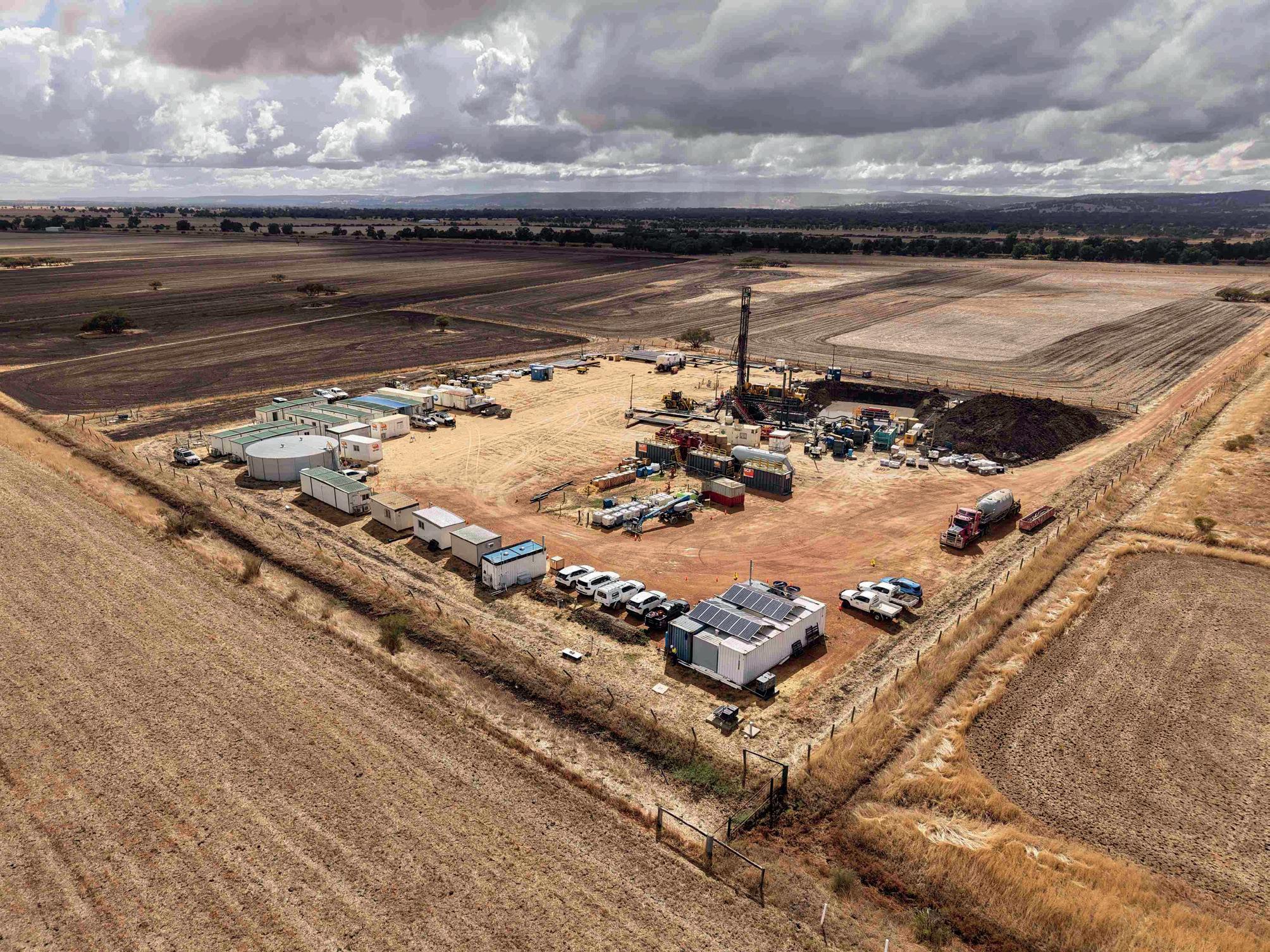
By Paul Cunningham, CSIRO
Just outside of Harvey in WA’s south-west, CSIRO has successfully completed its landmark Harvey 5 well drilling operation, marking a milestone for the future of carbon management.
CSIRO’s In-Situ Laboratory (ISL) became a hive of activity in March and April with the arrival of a large drilling rig and its associated support infrastructure.
Under the scrutiny of industrial, government and scientific observers from across Australia and around the globe, a CSIRO project team and drill rig, well construction and research partners successfully drilled more than 1000m below the surface, directly into and through a major fault zone.
But why?
Carbon capture and storage (CCS) is a carbon management method that injects carbon dioxide (CO2) deep underground in a dense phase under high pressure. Understanding the risks of CO2 leaking up to surface via a fault
is essential for industry and regulators to safely use CCS as a mainstream emissions reduction tool to help achieve upcoming net zero targets.
CSIRO’s energy research focuses on three major themes: accelerating the electricity transition; decarbonising the industry and transport sectors; and carbon management technologies, of which CCS is a part.
The Harvey 5 well drilling operation was a high-risk, high stakes, and high precision operation.
Fault zones often feature crushed, unstable material and rock formations with reduced strength, all of which can cause a drill rig to get stuck, resulting in an expensive failure.
CSIRO principal research engineer and ISL project lead, Dr Ludovic Ricard,
acknowledged that the program was “a little daunting”.
Harvey 5 is a CO2 injection well, and Harvey 6 – drilled in 2024 – is an adjacent monitoring well. Both wells cross the fault zone and are packed with various monitoring technologies.
The successful completion of Harvey 5 enables the next phase of fluid injection and monitoring programs in a major fault zone.
“Normally when planning projects, you avoid faults,” Dr Ricard said. “But we are trying to answer the question that everyone asks: how do faults behave in the CCS context?
“We are deliberately undertaking a worst-case scenario, drilling a well into a fault, and we plan to directly inject supercritical CO2 to see what happens.”
According to the International Energy Agency, CCS is one of a group of carbon-management technologies contributing to direct emissions reduction in key sectors and removing CO2 to balance unavoidable emissions.
As commercial-scale CCS projects increase, so does the interest in potential risks of CO2 reaching unmapped faults. However, field data can inform models and improve predictive forecasting of risks or impacts for regulators and project proponents.
That’s where the ISL comes in. It’s a collaboration between CSIRO and the Japanese Government’s Research Institute of Innovative Technology for the Earth (RITE), in conjunction with the Federal Department of Industry, Innovation and Science, and the WA Department of Energy, Mines, Industry Regulation and Safety.
With clearly stated emissions reduction goals, Japan is keenly interested in cutting-edge CCS research. The ISL provides contemporary, science-based evidence to inform cost-effective, safe and reliable CCS projects while providing a long-term field site for domestic and international education and training, capacity development and technology testing in the CCS environment.
Dr Ricard said the growth in CCS projects demands a deeper understanding of how CO2 interacts with these geological features.
“That’s why we are doing this,” he said. “There’s a lot of uncertainty which needs to be reduced to enable safe and cost-effective CCS projects.
“It’s not just about science. It’s also about education, economics and
community engagement because, in the end, community support is required, cost-effective monitoring systems would help with that, and the results and learnings need to be applicable to real-world commercial applications.”
CSIRO Energy Resources Program Research Director, Dr Damian Barrett, said the organisation has been at the forefront of CCS research and development over the past 25 years.
“Most CCS projects in Australia have sought CSIRO’s expertise at some stage,” Dr Barrett said.
“We have broad capabilities in the science that underpins carbon capture, utilisation and storage [CCUS] technology and a strong track record working on demonstration and operational projects.”
Through the ISL, international collaborations and research participation at Victoria’s CO2CRC Otway International Test Centre, CSIRO’s research experience and capabilities are wide-ranging. From large-scale demonstration projects to laboratory-scale experiments to dynamic modelling, the research is enabling substantial emissions reduction and provides a pathway for industry to adopt carbon management technologies at scale.
CSIRO has operated point-source CO2 capture pilot programs at power plants in Queensland, New South Wales and Victoria for more than a decade, generating valuable information on the technical, economic and environmental performance of leading absorptionbased technologies.
This work has also contributed to the development of an advanced capture technology, licensed overseas, with

international collaboration involving industrial partners from Norway, China, Japan and the US.
Another key research area for CSIRO is direct air capture (DAC), where CO2 is removed directly from the ambient air through chemical processes. This newer carbon management approach has emerging opportunities in Australia, Europe and the US.
CSIRO’s collaborative work to progress DAC includes Airthena, CarbonAssist and the Ambient CO2 Harvester.
Assessing the potential role of CO2 in a future low-emissions economy is also a central focus. In 2021, CSIRO published the CO2 Utilisation Roadmap, which explores the opportunities for Australia to support new industries and reduce carbon emissions with emerging CCUS technologies.
CO2 can be combined with other feedstocks such as hydrogen to make new low-emissions products and replace high-emissions materials like fossil fuels. This is a key component in CSIRO’s investigation into specific opportunities for CO2 utilisation in Western Australia and the Northern Territory as part of low-emissions CCUS hubs.
CSIRO published reports in 2024 to help inform the business case for a low-emissions hub at the proposed NT Middle Arm Sustainable Development Precinct near Darwin.
Additional work by CSIRO and the Global CCS Institute as part of the CCUS Hubs Study assessed the potential role of CCUS in decarbonising Western Australia’s industries.
These studies found CCUS hub models could deliver significant benefits as the technology can be implemented immediately, with potential to work across a range of emissions-intensive and hard to abate industries.
Back at the ISL, the site is being readied for the 2025–26 research program, in which fluids will be injected into and below the fault zone, generating a wealth of data about fluid movement and the performance of various monitoring technologies.
The keenly anticipated research results will be featured as part of discussions at the Greenhouse Gas Control Technologies Conference (GHGT-18), to be co-hosted by CSIRO in Perth on 26–29 October 2026 (ghgt.info).
For more information research, visit csiro.au/energy
From Brisbane to the rest of the world, NOJA Power is rewriting the rules of reliability.
s Australia continues to rewire its energy systems for a more sustainable future, the demand for safe, dependable switchgear across the medium-voltage network has never been greater.
Responding to the needs of Australia’s electricity sector is nothing new for Brisbane-based manufacturer NOJA Power. In fact, it’s business as usual.
The company’s latest innovation, the EcoLink, provides a practical solution for a longstanding industry challenge: delivering reliable recloser functionality on low network currents, particularly in regional and remote areas where reliability is a common concern.
The EcoLink is an innovative fuselink-mounted recloser designed to operate with as little as 0.15A of primary current. The fully self-powered uses supercapacitor technology, removing the need for batteries and reducing maintenance and environmental risk.
Designed as a direct replacement for traditional fuses, the EcoLink is easily retrofitted to most legacy fuse holders, making it a flexible solution for utilities looking to improve reliability on existing infrastructure.
What sets the EcoLink apart is its response time. The device is configured to interrupt faults in the same time as a conventional fuse, bringing a new level of reliability to even the most rural and remote distribution lines.
Importantly, the EcoLink places safety at the forefront of its design. A patented breaker interlock handle ensures the line current is interrupted with the internal vacuum interrupter before the device can be disconnected. This mechanism prevents external arcing, protecting equipment and operators.
As regional networks take on a larger share of the energy transition, the EcoLink is set to play a critical role in keeping infrastructure reliable and field crews safe, replacing legacy technologies that were not created for the modern energy system.
Designed and manufactured at NOJA Power’s Brisbane headquarters, the EcoLink stands as a prime example of Australian innovation solving energy challenges across the distribution network – all on local soil.
The focus on local manufacturing is central to the company’s ongoing success. While many companies can utilise overseas products or components, NOJA Power has made significant investments in its Brisbanebased production capacity.
The 2023–24 financial year (FY24) saw the company secure an additional


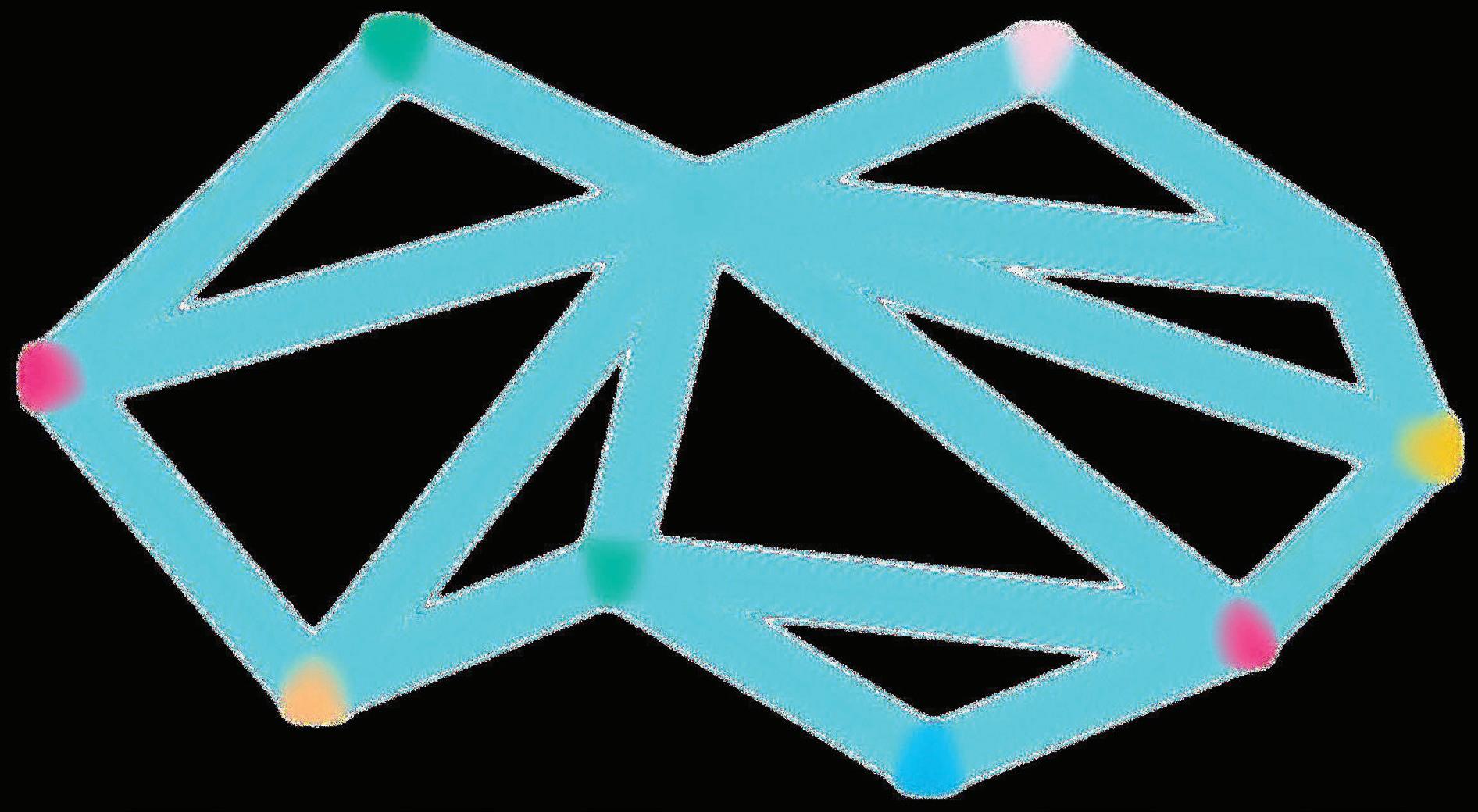






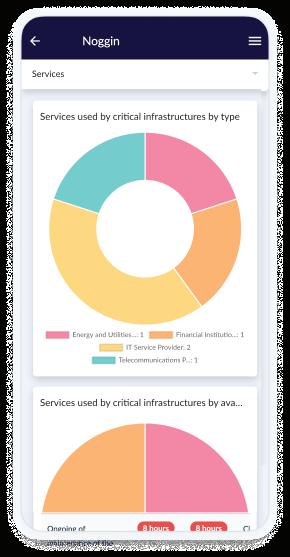
Threats to Australia’s critical infrastructure are on the rise, and policymakers have responded with legislation like the Security of Critical Infrastructure Act (SoCI) to keep assets safe and the country secure. To comply, critical infrastructure entities can turn to Noggin’s integrated resilience software, to help prepare for and respond to business disruptions and critical events.

The Noggin platform seamlessly combines 10 solutions into one, easy-touse system, with solutions for: operational and third-party risk management, business continuity, crisis & emergency management, operational resilience, and safety & security operations.


Learn why Australian critical infrastructure entities choose Noggin to strengthen their resilience against business threats: www.noggin.io
Field service teams are the lifeblood of a resilient energy network, but what happens when logistics can’t keep up? Droppoint has a solution.
In the race to modernise Australia’s energy infrastructure, much of the attention has focused on big ticket items such as grid upgrades, renewable integration and the sector’s digital transformation.
But there’s a quieter, less assuming challenge threatening to hold the industry back, and it’s hiding in warehouses and depots around the country – literally.
Inventory visibility is proving to be one of the most pervasive issues facing the sector – and it’s a challenge that leading field services provider Droppoint is actively working to solve.
Indeed, a 2024 survey from leading field services provider Droppoint found that 46 per cent of respondents in the utility sector experience challenges related to limited real time visibility into current inventory levels.
Utility respondents specified inventory visibility as a top challenge for them, more so than other industries, with almost half regularly losing time collecting parts of waiting at home for deliveries.
At first glance, this may seem like a small operational detail. But the inability to accurately track and manage critical parts and materials is causing avoidable delays, increasing costs and undermining service reliability as the industry is ramping up the energy transition.
Droppoint CEO, Jason Flanagan, said a lack of adequate operational visibility presents significant business risks and inefficiencies.
“Without clear insight into inventory status and movement, organisations are prone to challenges such as redundant stock holdings, unnecessary procurement, stagnant inventory, poor stock rotation and lost productivity

due to time spent searching for items.” With decarbonisation targets looming large and a growing pipeline of transmission infrastructure to be delivered, the stakes are higher than ever. Inventory gaps are no longer just an inconvenience – they’re an obstacle the sector can’t afford to ignore.
The rising cost of poor visibility Managing spare parts has been critical to energy operations for as long as they have existed, but it’s the scale and complexity of today’s energy network that’s changed.
With the renewable rollout now in full force, businesses are working across vast geographies with a growing diversity of assets.
Field service crews are responding to more sites more often, and in more dynamic conditions. Whether it’s planned maintenance, emergency repairs or rapid upgrades, they need the right parts, and they need them fast.
Without clear visibility, however, the entire operation slows. Missing or misplaced parts trigger a domino effect of rescheduling, increased overtime, additional freight costs and blown out project timelines. And that’s just the most obvious impact.
In response to uncertainty, some businesses overstock “just in case”, tying up capital in inventory that might never be used. Others rely on emergency deliveries, or have workers travel long distances to retrieve missing parts, wasting time, budget and energy.
Then there are the less tangible impacts: extended outages, missed service level agreement metrics, delayed deadlines, frustrated customers, and potentially even reputation damage.
In a sector tasked with powering the nation, even the smallest inventory management issues can have major consequences.
Poor inventory visibility also adds a constant layer of friction for field technicians, who work hard behind‑the scenes to keep the industry running smoothly.
Instead of focusing on critical tasks such as installation, maintenance and repairs, technicians can spend valuable time chasing parts – calling depots, driving between warehouses or improvising on site without the right materials.
Inventory visibility is a top challenge for utilities, but efficient logistics is crucial to delivering the energy transition. Image: surachetkhamsuk/stock.adobe.com


stretched thin by labour shortages, dealing with the consequences of poor inventory visibility wastes hours they don’t have.
As the energy transition accelerates and demand on these essential crews increases, smart, efficient logistics will be crucial to supporting field technicians.
Traditional inventory models based around static warehouses and rigid stock allocations are struggling to keep pace with the demands of today’s energy sector. A new approach is needed to guide the industry through Australia’s transition and into the future energy system. This means:
• real time visibility across all locations, from central warehouses to field vehicles
• smart forecasting tools that position parts where they’ll be needed most
• seamless logistics that deliver to technicians quickly and reliably, no matter their location.
These solutions will form the foundations of a responsive,
ready to lead Australia through its energy transformation.
As Australia and New Zealand’s leading field services inventory management software provider, Droppoint is helping businesses bridge the inventory visibility gap in the Australian energy industry.
The company’s approach is simple: get the right part, to the right place at the right time – every time.
Rather than relying solely on a traditional warehouse model, Droppoint combines digital material tracking, distributed logistics and a network of 24–7 pick up and drop off (PUDO) locations.
As a managed service provider, Droppoint partners with best in class carrier partners and storage providers to create custom logistics solutions to field service teams in the energy industry. With Droppoint, parts can be delivered close to homes, work sites or one of the 500 conveniently located
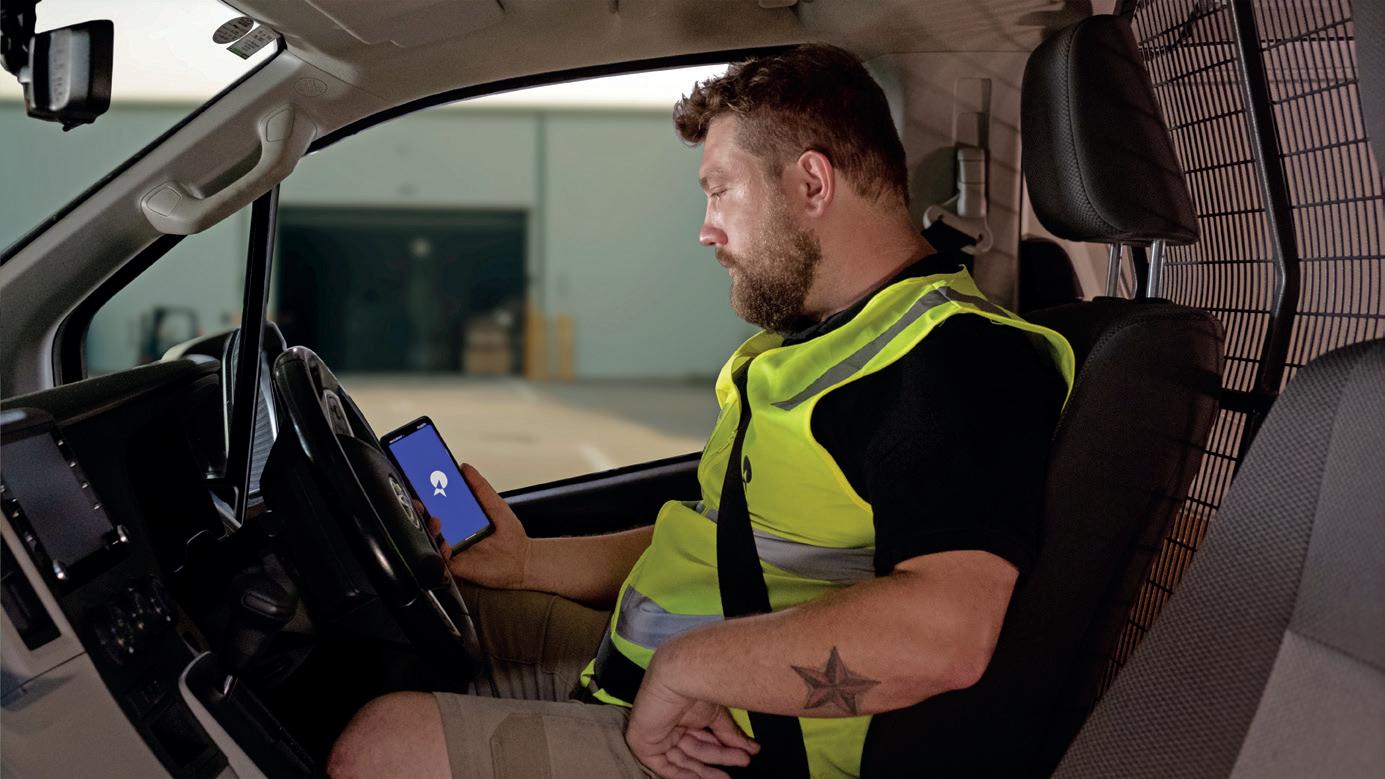
the need for technicians to return to a central depot or travel between sites.
The whole system is coordinated with the support of the Material Orchestration System (MOS), Droppoint’s purpose built logistics software. MOS brings transport, inventory and location management together to provide a single source of truth.
It allows managers and technicians to manage workflows at every stage of the part lifecycle. From the movement of materials to their use in repairs, MOS provides end to end inventory visibility, right down to the serial number.
“The energy sector faces the dual challenge of ensuring operational uptime while managing inventory efficiently,” Flanagan said.
“Droppoint excels where enterprise resource planning systems (ERPs) often fall short, delivering effective last mile visibility for inventory tracking from its source – depot or vendor – to the point of use.”
Built by field service professionals for field service professionals, MOS is designed to keep technicians working, not waiting.
It represents absolute visibility, marking a shift toward more proactive field operations in the energy sector.
Droppoint equips field service teams in the energy sector with the real time visibility and reliable logistics they need to keep Australia switched on.
For more information, visit droppoint.com.au or chat with the team at booth B6 at Australian Energy Week, from 18–19 June at the Melbourne Convention and Exhibition Centre.
As the energy landscape transforms, one of Australia’s most established equipment specialists is bringing its expertise to the sector.
For more than 80 years, Tutt Bryant has been synonymous with reliability, capability and scale in Australia’s industrial landscape.
With a national footprint across equipment hire, heavy lifting and parts and services, as well as its longstanding relationships with global original equipment manufacturers (OEMs), the company has supported many of Australia’s major construction and infrastructure projects. Now Tutt Bryant is entering a new chapter.
Through the launch of Tutt Bryant Power and its Go Green initiative, the company is now turning its attention to the energy sector, bringing its decades of experience to focus on the future of low and zero emissions technology.
Tutt Bryant National Business Manager – Sustainable Products and Innovation, Chris Leahy, said the expansion represents a natural evolution of the company’s existing experience and capabilities.
“Tutt Bryant is committed to promoting sustainability and decarbonisation in our area of influence,” he said.
decarbonisation journey, the Go Green initiative seeks to increase the sustainable products, services and solutions available to the market.
“We recognise that through our three operating divisions, we’re able to reach a broad spectrum of customers who currently have limited options to lower their carbon emissions,” Leahy said.
The company is committed to developing home-grown solutions tailored to Australian conditions by utilising its in-house capabilities, collaborating with local enterprises and tapping into its vast network of global OEM partners and suppliers.
“The Tutt Bryant Go Green initiative is a whole-of-organisation approach to leverage the expertise from all parts of the group to deliver practical, sustainable and cost-effective solutions,” Leahy said.
This is being realised in part through Tutt Bryant Power’s low and zero carbon equipment solutions, which are centred by three key product offerings:
Battery energy storage systems
From a mobile charging system

The SANY SPL210 BESS is engineered for simultaneous charging and discharging and is easily transportable.
suitable for industrial use, Tutt Bryant offers battery energy storage systems (BESS) suitable for machines and sites of all sizes.
The company offers a range of AJ Power diesel generators to suit a variety of applications, with options ranging from 10 kilovolt-amperes (kVa) all the way to three megavolt-amperes (MVA) – all powered by leading engines renowned for durability and low fuel consumption.
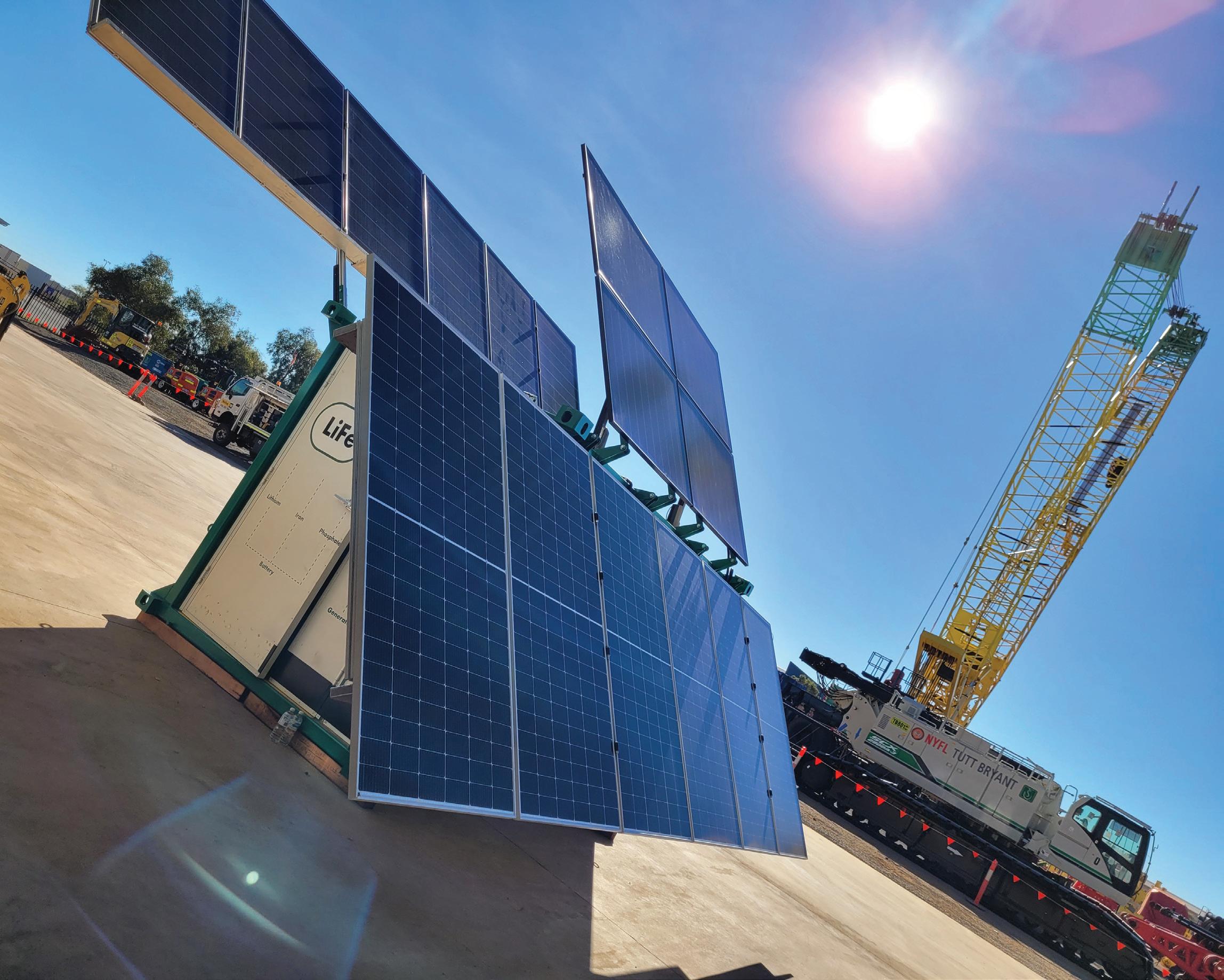

Tutt Bryant also offers customisable and scalable hybrid power systems such as the LiFePO4D, which enables customers to automatically switch between photovoltaic (PV) self-consumption, battery supply and diesel power.
Beyond power equipment, Tutt Bryant offers a range of other solutions under its Go Green initiative to support the energy industry, from ranging from electric cranes and plant equipment to initial energy monitoring, load profiling and turnkey project solutions.
Its services are backed by a national network of trained technicians, a significant parts inventory and the resources needed to keep projects running smoothly.
With a legacy built on innovation and capability, Tutt Bryant is now delivering the same strengths to the energy sector, laying the groundwork for a cleaner, greener energy future.
For more information, visit tuttbryantpower.com.au

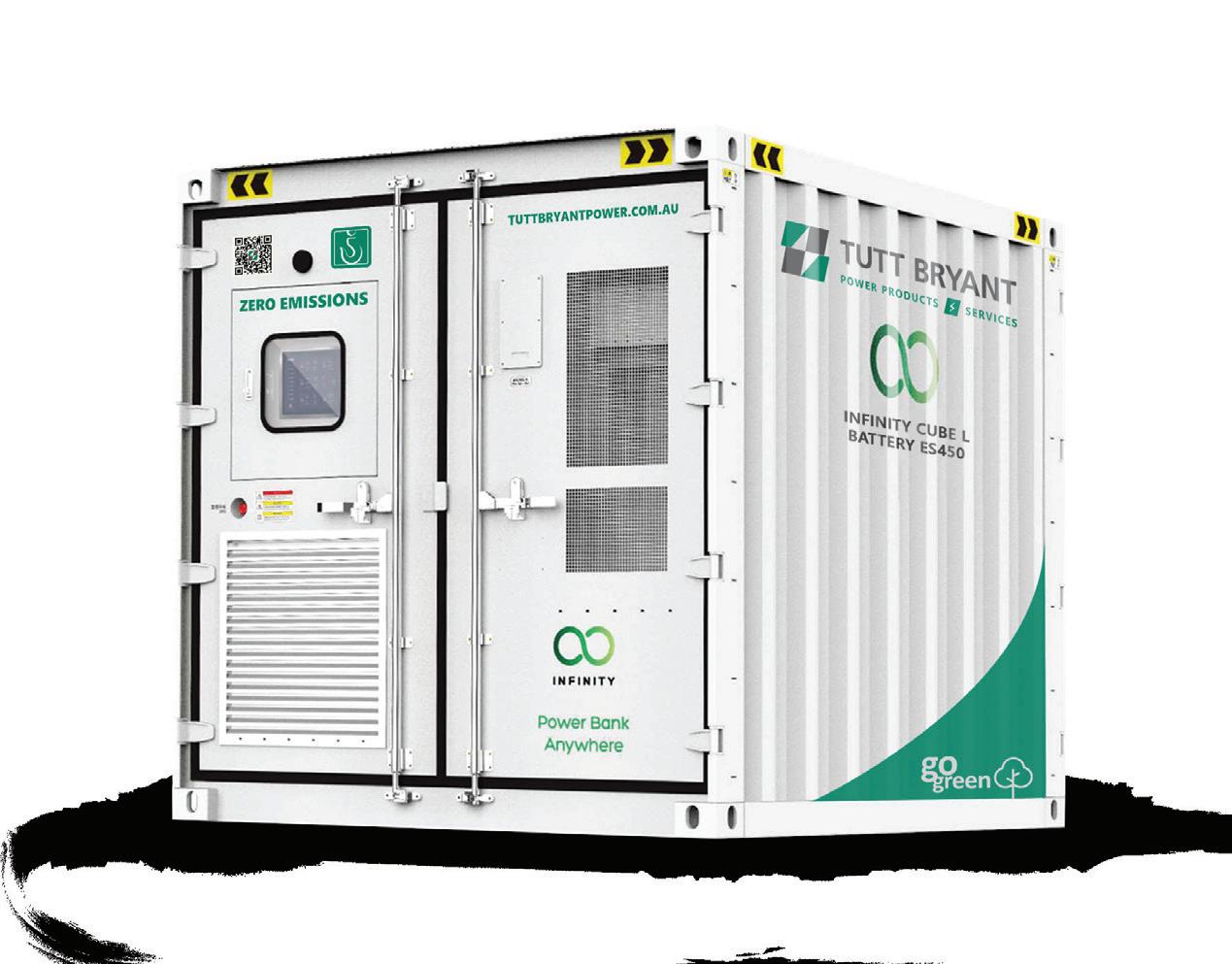
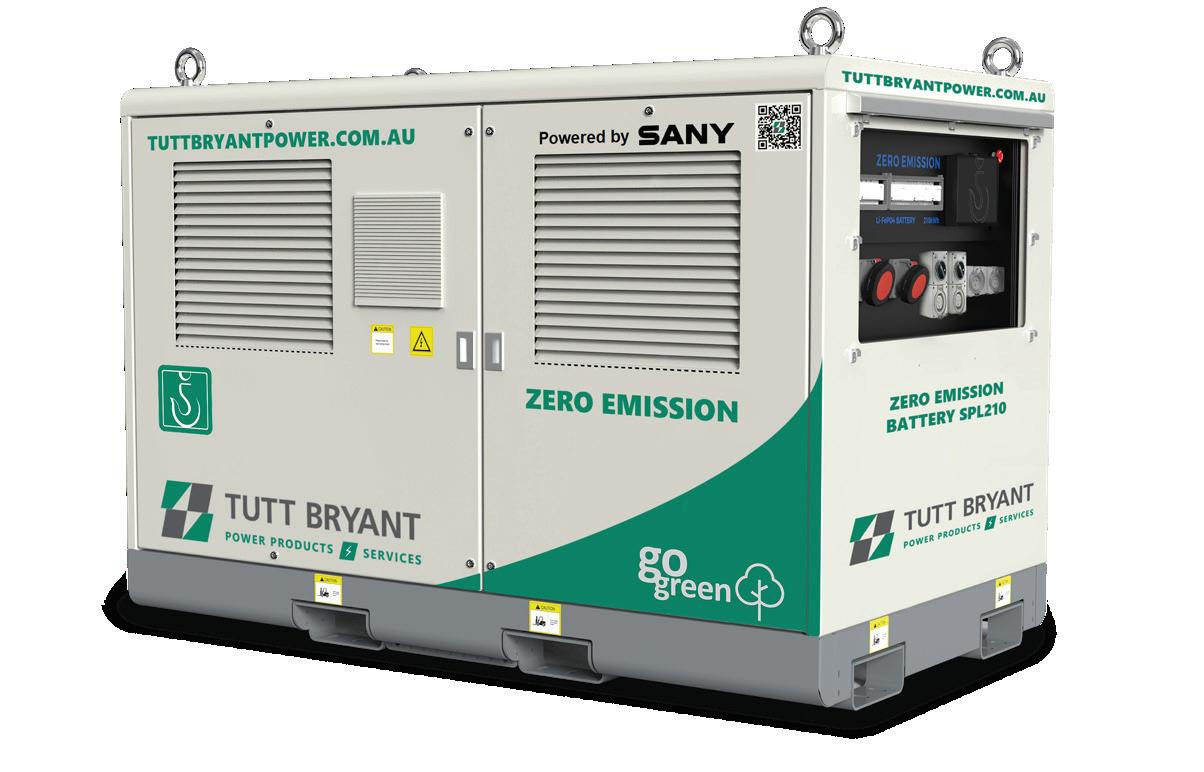

Whether you’re powering remote equipment or integrating renewables for your project, Tutt Bryant Power Products & Services delivers high-performance diesel, electric, or hybrid energy solutions.
OUR PRODUCT RANGE:
• Battery Energy Storage Systems (BESS) by Sany and Infinity Cube
• Renewable & Hybrid Energy Systems (LiFePO4D)
• AJ Power Stage V Diesel Generators with a 94% reduction in HC and NOx, with a 97% reduction in PM
Engineered for reliability. Built for Australia.

Smarter asset inspections are helping utilities inspect their assets with greater speed, accuracy and safety.
Images: Unleash live
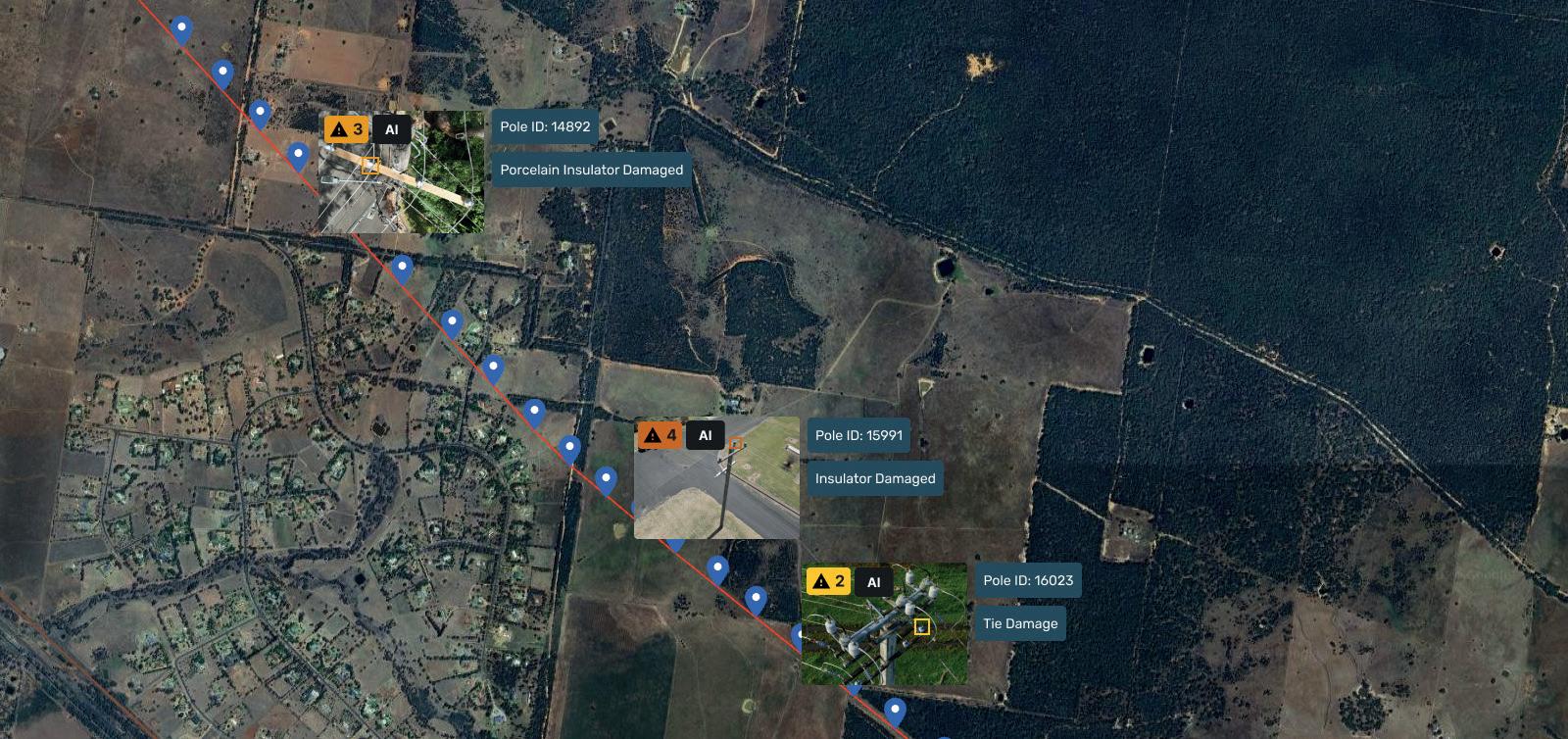
The energy sector is working hard to meet the dual pressures of climate resilience and operational efficiency, and one company is leading the charge in critical infrastructure inspection.
As energy providers seek smarter, faster ways to monitor their assets, Unleash live has become a force in real-time video analytics and drone automation, and has been named a finalist in the 2025 Australian Financial Review’s AFR AI Awards in the productivity and efficiency category.
Energy sat down with Unleash live Group Chief Executive Officer, Hanno Blankenstein, in the lead up to Australian Energy Week (17–20 June) to learn how artificial intelligence (AI) and automation are redefining infrastructure management, from powerlines and transmission towers to wind turbines and solar farms.
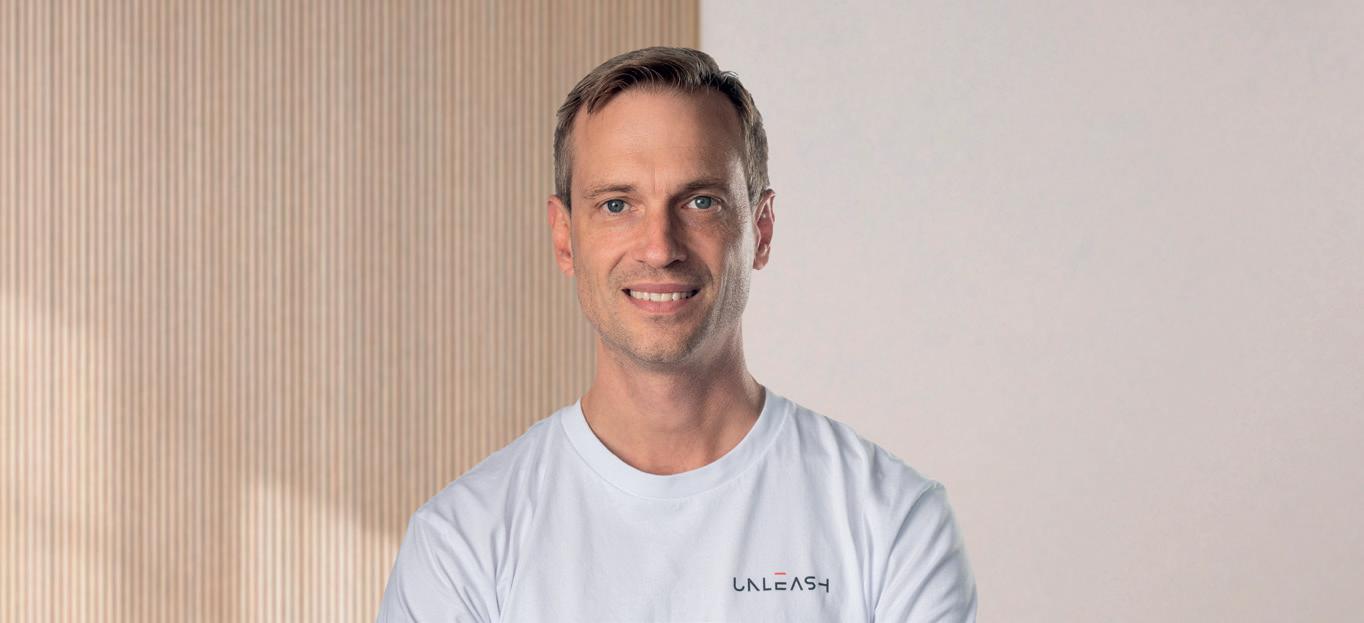
management processes using machine learning, cameras and drone automation.
towers, substations and other assets with greater speed and accuracy and, importantly, without putting crews at risk. The results speak for themselves: lower inspection costs, faster fault detection, reduced downtime and improved safety. We do this across a range of sectors within energy, including fault detection on large solar farms, wind turbine blade condition assessment and industrial machinery.
Essentially, we can automate and speed up any manual visual inspection process that takes up precious time.
How is Unleash live’s platform helping the energy sector?
The challenges faced by utilities have not changed. Safety, reliability and efficiency continue to drive the agenda, with many investing in drone technology.
That’s where we come in.
Simply put, we automate the data collection and analysis for asset
Our platform connects virtually any camera to real-time, machine-learning AI apps that produce insights such as condition assessments. For utilities, that ranges from fast, automated image capture via drones, to computer vision machine learning models that improve fault detection on widely dispersed, costly-to-maintain assets, and enterprise resource planning (ERP) reporting of the network condition. It means utilities can inspect thousands of poles, wires,
What can we expect in your new video case study at Australian Energy Week?
We’re excited to showcase a case study featuring one of Australia’s largest utilities, serving more than three million customers in bushfire-prone regions. This client has completely transformed its inspection process using autonomous drones and our Autofly technology. Previously reliant on helicopters, this utility now conducts faster, quieter and more precise inspections using drones,
cutting costs and dramatically reducing bushfire risk.
We’re screening the full video at our booth and discussing how other networks can adopt this scalable model.
Can you tell us about Autofly and how it fits into your technology stack?
Autofly is at the heart of the productivity gains realised by customers such as Endeavour Energy and many other utilities worldwide. As a connected ground control station (GCS) application, Autofly supercharges pilots by providing efficiency capabilities that aren’t available in standard GCSs, such as DJI’s Flighthub2. These include one-click capture of pre-defined assets for fast, repeatable and structured data collection; zero latency live streaming to any browser for real-time remote collaboration; and real-time synchronisation of media assets.
This is enabled through a purposebuilt cloud-based media management tool, specifically designed to integrate with our machine learning applications and your ERP systems to analyse and generate insights from the assets inspected.
We have flown millions of assets many thousands of automated flight kilometres, achieving benefits such as three times the number of fault detections, an 80 per cent reduction in CO2, and a 78 per cent reduction in time using automation and
reporting when compared to manual drone flights.
Can you tell us more about the use of AI?
Unleash specialises in a branch of AI known as computer vision. We’re focused on the end-to-end pipeline, from capturing the images and video right through to analysing and reporting the data. This means we work with very specific datasets. Unlike broader large language model fields such as ChatGPT that use publicly available material as training data, we accelerate our customers’ capture of high-quality imagery in a structured and automated manner, which results in high performance machine learning models specific to our customers’ datasets.
We know there can be concerns about security and privacy when using third-party AI tools, so I’d like to highlight here that Unleash offers the option for our customers to wholly own their models.
I might be biased, but if you ask me, Unleash is the ultimate digital pipeline for delivering vision-based data insights – and it’s deployable across an unlimited number of use cases. Our customers find this pretty powerful.
What makes Unleash live stand out in the energy tech space?
For the Australian market, quite a lot. Our headquarters are in Barangaroo, Sydney, and since 2016 we’ve worked with
many of the industry’s leading players. This has given us a wealth of expertise addressing local cybersecurity, critical infrastructure, and SOCI-related matters. We understand the regulatory environment and can add a degree of ‘local insight’ to our offering.
I’d also like to reiterate that although Unleash is a software company, our key focus is using data analytics to drive productivity and efficiency gains in operational workflows.
What are you looking forward to most about Australian Energy Week this year?
We’re looking forward to meeting energy leaders, field teams, and asset managers at the show to hear about the challenges they’re facing in asset management.
You’ll be able to visit us at booth A2 to view the full case study, see the latest DJI M4 drone, and talk with our team, including Hamid Fardoost, our ANZ CEO, and Richard Braithwaite, our Field Solutions Specialist.
We’re proud of our impact in delivering real productivity gains and safer infrastructure.
The future is predictive, and we’re helping the energy sector get there.
For more information, visit unleashlive.com/utilities, or chat with the team at booth A2 at Australian Energy Week from 18–19 June at the Melbourne Convention and Exhibition Centre.

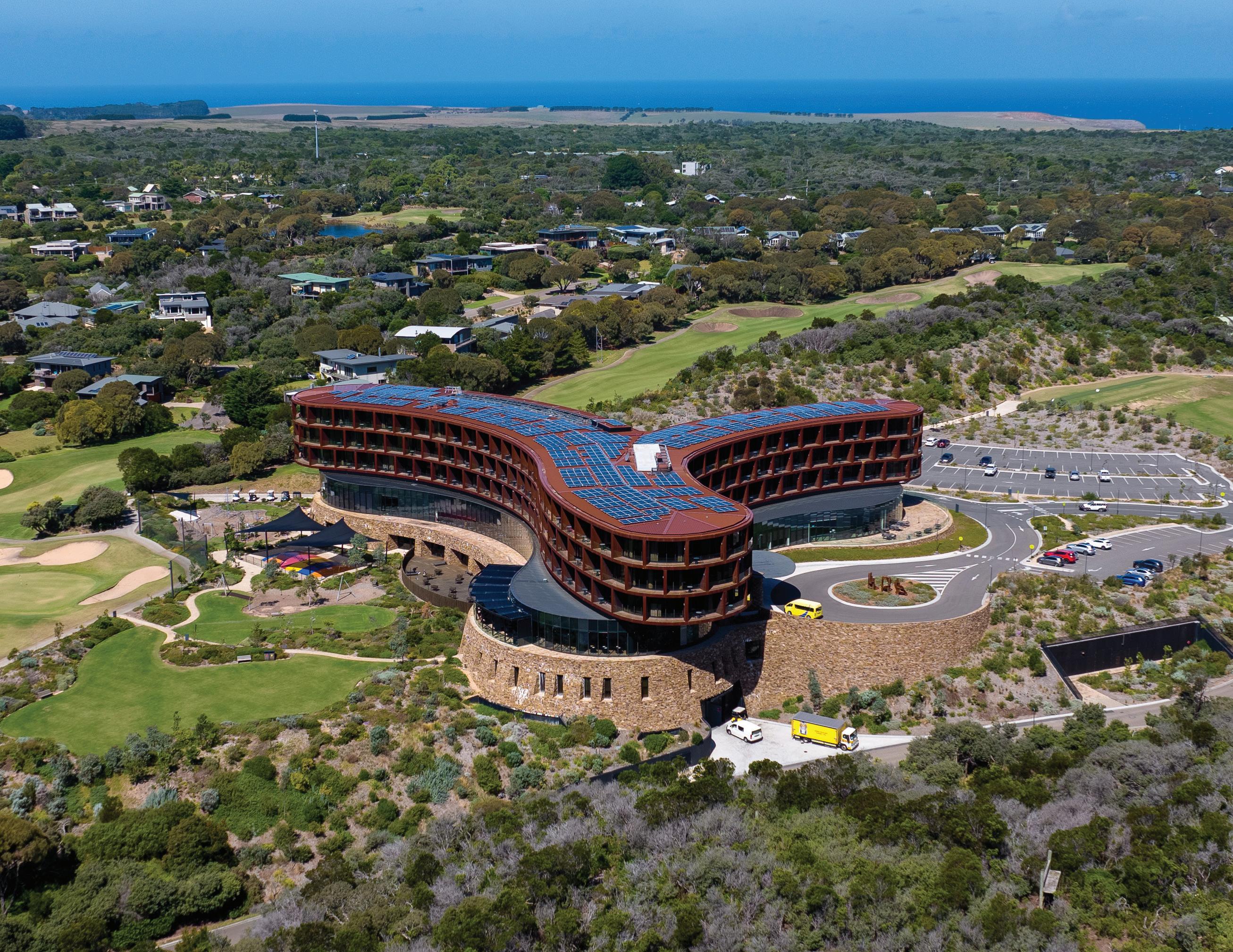


As Australia’s regulatory landscape evolves and maintaining compliance is becoming increasingly complex, Brave Energy is helping businesses stay ahead with smarter, more responsive solutions.
Many energy businesses operate under an assumption that compliance must be built into their core business systems – designed into platforms like billing, CRM and metering from the outset.
While this approach may seem logical, it can become limiting for Australian energy market participants, particularly those working with international software providers. The fact these systems are often developed for larger overseas markets means Australian regulations are unlikely to be considered in the base design.
The cost of getting it wrong and falling foul of regulators is high, and it’s a key reason leading software provider Brave Energy is committed to helping the sector stay in compliance.
Recent breaches in Australia have resulted in record-setting fines, a trend that is expected to continue as more regulatory changes impact all areas of the country’s energy market.
Both the Australian Energy Regulator (AER) and the Essential Services Commission (ESC) in Victoria have broad enforcement powers.
Beyond monetary penalties, they can revoke or suspend licences, make legally binding agreements to remedy breaches and subject companies to court action and injunctions. They may also publicly report compliance breaches on public registers or through media releases, leading to potential reputational damage.
However, the AER and the ESC also play key roles in shaping the future of energy policy, aiming to create stronger consumer protections and compliance frameworks.
With 20 years of experience in the Australian energy market, Brave Energy is familiar with the dynamic and ever-evolving nature of the industry. The company said it has noticed a
significant shift in regulatory strategy in recent years, from reactive enforcement to proactive oversight. This includes an increased focus on using data analytics and risk profiling, and targeted strategies to address the areas of greatest regulatory risk, like life support registrations, hardship, disconnections and billing accuracy.
The company said it is seeing a trend of retailers being encouraged to self-report breaches, which is reflected in annual reporting on areas such as wrongful disconnections, embedded networks and life support protections.
Strengthened consumer protections are also shaping the regulatory landscape. Brave Energy pointed to the ESC’s Payment Difficulty Framework and Life Support Registration Guidelines as examples of the greater regulatory emphasis on customer protections.
Transparency is another tool being used more frequently to drive
compliance, according to Brave Energy. Regulators are publishing comparative performance reports covering billing errors, complaint rates and disconnections on retailers, alongside public registers of breaches, naming non-compliant companies and detailing the actions taken against them.
Collaboration is increasing, too. Regulatory bodies like the Australian Competition and Consumer Commission (ACCC) and the Australian Energy Market Commission (AEMC) are engaging with consumer advocacy groups, retailers and metering companies.
The goal is to co-design rules that are fit for purpose and enforceable, especially as the market navigates the integration of distributed energy resources (DER), smart meters and digital platforms.
With all of this in mind, the dilemma facing energy market participants is how to minimise the cost and complexity of compliance without compromising the ability to choose the best fit systems for their operations.
If businesses weren’t limited to software with compliance pre-built, how would their IT strategies change? Could they choose from a broader range of systems without being locked into rigid regulatory frameworks?
If those questions were asked of Brave Energy, it would say the solution is decoupling compliance from core business systems. Rather than built-in compliance, the company advocates for centralised compliance.
Brave Energy believes this approach ensures consistent rule application, eliminating the risk of different systems interpreting rules in different ways.
But what does this look like in practice?
Compliance as a service (CaaS) is an emerging best practice solution in heavily regulated industries such as energy. These models, Brave Energy said, are all about modularising, centralising and automating compliance logic, so it can be reused across systems.
Indeed, Brave Energy’s CaaS operates as a centralised engine of microservices that manages compliance requirements on behalf of other systems, such as billing, CRM, metering and customer portals.
Rather than embedding rules in each system, Brave Energy’s CaaS module: • maintains the latest regulatory rules, whether related to general market
like best offer messaging, life support registration or customer data right compliance
• applies configurable business logic with rules based on specific requirements, such as a customer’s eligibility for disconnection
• uses smart automation for key compliance processes such as customer consent logging, life support registration checks and disconnection warning periods
• enables the addition of validation rules to ensure data integrity, preventing non-compliant actions such as disconnecting customers in hardship without proper review
• logs and audits all decisions, with reporting dashboards providing real-time visibility into risks such as bill correction timelines or missed life support registrations.
Regulation in the energy market is expensive. However, the cost of getting it wrong is significantly more expensive. A key benefit of CaaS systems is that they are less expensive to maintain; instead of adjusting every downstream system when rules are changed, only the central module needs to be updated. They’re also faster and easier to implement, with streamlined API integrations.
Importantly, CaaS models enable businesses to be more responsive. Whether it’s a new billing rule from the ESC or updated life support protections from the AER, regulation changes are
compliant with every new rule change.
Founded 20 years ago by two Australian energy industry experts, Brave Energy helps businesses in the sector meet compliance challenges head on.
As a proudly Australian company, Brave Energy possesses extensive expertise in the local energy landscape, honed over its decades serving the industry. All of the company’s solutions meet Australian energy industry regulations and compliance requirements.
Brave Energy combines deep industry knowledge and a passion for software development to provide intuitive and reliable software that accurately captures and automates data, allowing energy market participants to rapidly adjust to regulatory changes and streamline market interactions.
Trusted by some of the country’s largest energy players, Brave Energy allows energy businesses to automate complex regulatory processes, reduce risk and stay ahead of the constantly evolving market.
For more information, visit braveenergy.com.au or chat with the team at booth D2 at Australian Energy Week from 18–19 June at the Melbourne Convention and Exhibition Centre.



Achieve regulatory compliance with Brave’s SaaS centralised platform, which abstracts compliance away from your other business systems, ensuring faster set-up via APIs, a faster, centralised response to regulatory change, and a lower operational cost structure.
Wind energy is set to play a significant role in Australia’s clean energy transition, but it takes more than a breeze to keep the turbines spinning.
Wind is one of Australia’s fastest growing renewable energy sources, with the Australian Energy Market Operator (AEMO) finding it accounted for 42 per cent of new capacity registered in 2023–24.
But delivering clean wind energy isn’t just about installing turbines. It requires community support, sustainable operations and keeping downtime to a minimum.
Svendborg Brakes, a Regal Rexnord brand, is helping operators rise to the challenge.
“The material is designed to meet strict global environmental standards,” Sinclair said. “It is also corrosion resistant and produces less dust than traditional friction materials.
“Not only does this minimise contamination to the local environment; it also reduces health risks for maintenance personnel.”
Once operational, regular maintenance is critical to keeping turbines delivering clean energy, but accessing the brakes themselves – a typical wind turbine has up to eight brakes, each weighing between 60–200kg – represents a major hurdle.
Regular maintenance is critical to the delivery of wind energy to Australia’s grid. Image: kelvn/stock.adobe.com
To streamline the process, Svendborg Brakes lifting and installation tool allows brakes to be safely lowered to the floor, serviced and then reinstalled, all without heavy manual lifting. In addition to improving safety, Sinclair said the tool can reduce service time by up to 50 per cent, bringing them back online as soon as possible.
Resurfacing yaw brake discs is another common maintenance task, one that previously required disassembling the nacelle or using cranes. However, Svendborg Brakes’ disc resurfacing tool removes this need entirely.
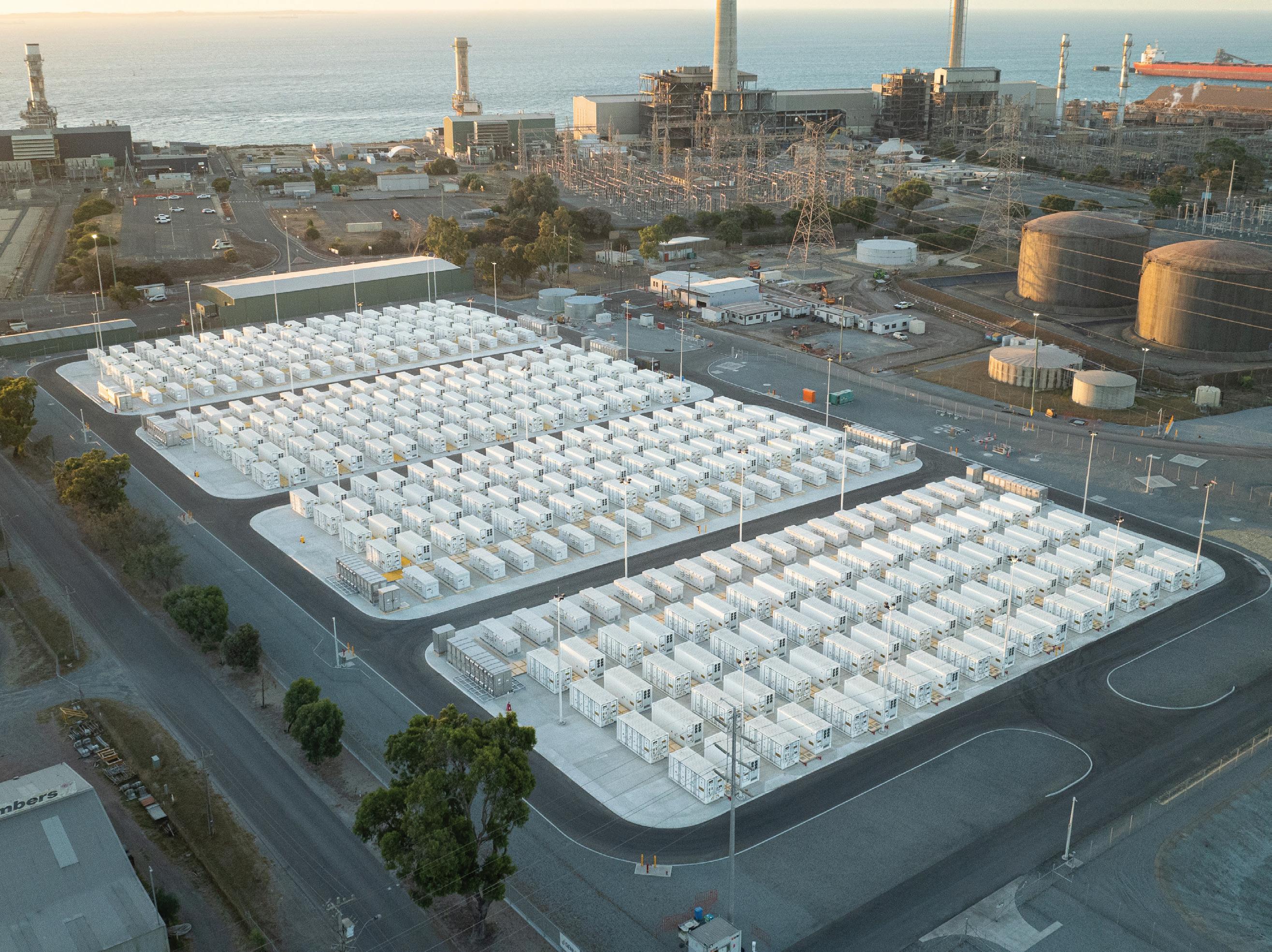
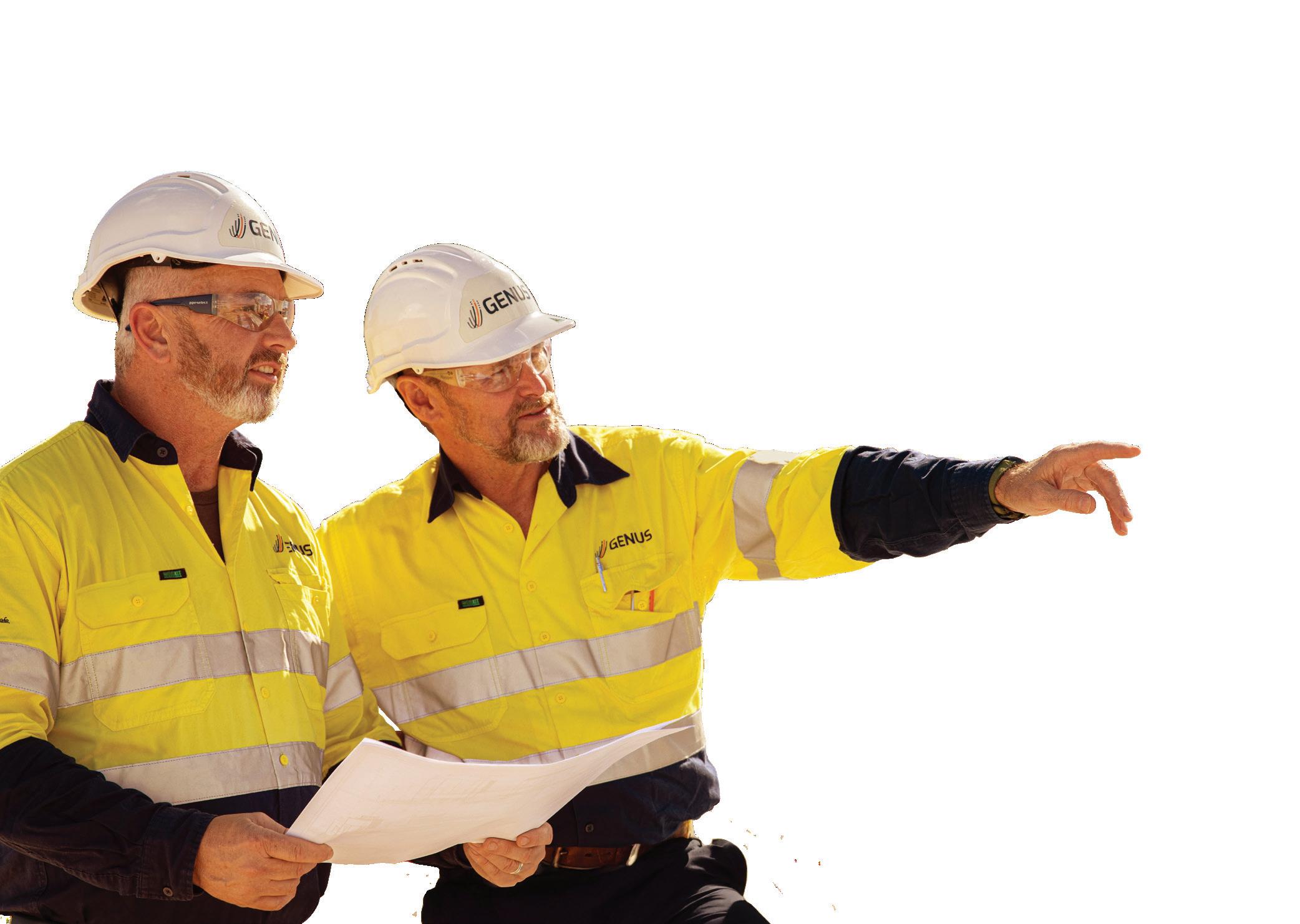
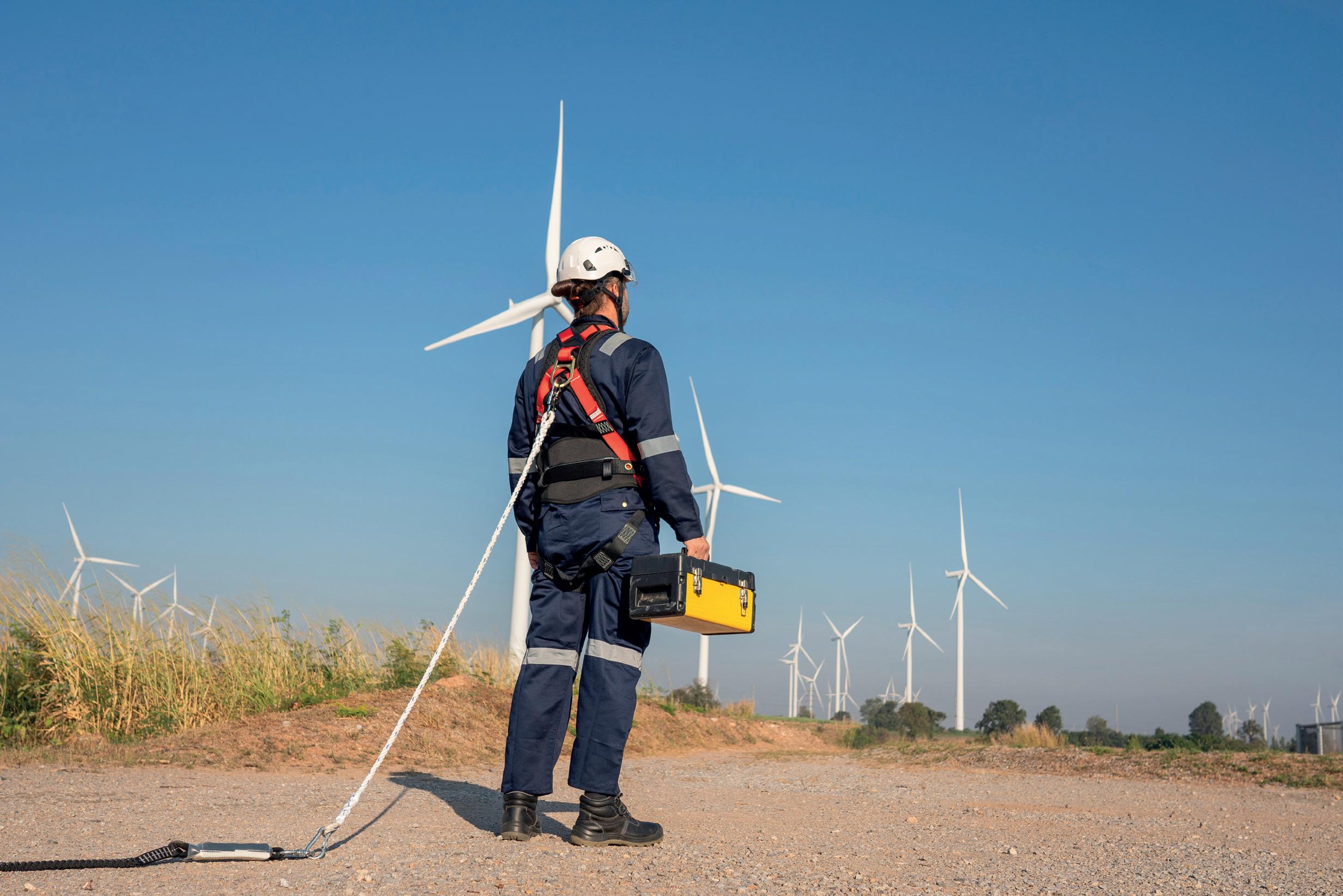


At Genus, we’re not just building power and communications infrastructure; we’re shaping Australia’s future. From transmission lines and substations to communications solutions and renewable energy, we design, construct, and maintain the systems that keep the country moving forward.
We’ve become one of Australia’s fastest-growing infrastructure companies, winning landmark projects and setting new industry standards.
Our difference? A challenger mindset, hands-on approach, and commitment to our people. That’s The Genus Way, and it’s driving our mission to be Australia’s contractor of choice.
In a nation sculpted by vast distances vulnerable to nature’s fury, reliable telecommunications are more than a convenience – they’re a lifeline.
When bushfires paint the sky crimson, floods engulf communities, or cyclones unleash their wrath, the ability to communicate is paramount. It’s the thread that connects emergency responders, families, and communities, a vital artery in the face of adversity.
Decon Corporation understands this fundamental truth, and the company has poured its expertise into a self sufficient solution designed to fortify Australia’s telecommunications resilience: the Smart Power Cell.
Imagine an unfaltering telecommunications network, even when the main power grid fails. This is the promise delivered by the Smart Power Cell.
The transportable, off grid power solution is a revolution in resilience.
It combines a suite of renewable energy technologies, including high efficiency solar panels and optional wind turbine, with a long lasting sodium metal chloride battery.
During daylight hours, the solar panels harness the sun’s energy, powering critical telecommunications infrastructure. As night falls, the sodium metal chloride battery seamlessly takes over, ensuring uninterrupted operation, charged throughout the day by the solar array.
But the Smart Power Cell goes beyond renewable sources.
Recognising the unpredictable nature of disasters, it incorporates a backup diesel generator – a failsafe capable of supporting a site for an impressive four to six weeks without refuelling.
This self sufficiency is vital in remote and disaster stricken areas, where resupply may be delayed or impossible.
Crucially, the Smart Power Cell eliminates the need to send personnel into potentially hazardous and unpredictable scenarios for refuelling, prioritising the safety of human lives. It allows for the continued operation

of mobile towers, data centres, and communication hubs, meaning vital information can still be sent, and received, for prolonged periods.
Decon Corporation’s commitment to reliability extends beyond deployment. The company proactively monitors every Smart Power Cell 24/7, ensuring optimal performance and rapid response to any potential issues
This constant vigilance guarantees that Australia’s telecommunications infrastructure remains protected, even in the most challenging conditions.
The Smart Power Cell is designed for rapid deployment, its modular nature allowing for quick installation in remote and disaster stricken areas. This adaptability is crucial in restoring communication swiftly, minimising the impact of disruptions.
The system’s advanced controls stabilise power flow, protecting sensitive telecommunications equipment from damaging voltage fluctuations and surges, extending operational time during prolonged outages. This extended operational time provides a crucial
window for emergency services, and for communities to get vital information.
Decon Corporation understands the unique needs of Australia, especially the remote communities who often bear the brunt of natural disasters.
The company’s Smart Power Cell is designed to provide the reliability needed to keep these communities connected, and to provide energy independence and reliability.
Decon Corporation is committed to ensuring that all Australians remain connected, regardless of the challenges they face. The Smart Power Cell is evidence of the company’s dedication to building resilient and dependable telecommunications infrastructure.
Decon Corporation is also committed to Australian manufacturing and the creation of Australian jobs and is proud to be manufacturing the Smart Power Cell locally with the Australian‑made certification, building sovereign capability.
For more information, visit deconcorp.com.au



From education programs to apprenticeships and a graduate program, Hydro Tasmania is building the workforce it needs to power the state into the future.
On a crisp autumn day at Strathgordon in the south-west of Tasmania, a group of young people are walking across the top of Edgar Dam, one of the walls that holds back Australia’s largest water storage.
It rains more than half the year here, but today the sun is shining for the second day of the Edgar Dam Work Exposure Program, a collaboration between Hydro Tasmania and Workskills Tasmania that aims to introduce young people to careers in the hydropower industry.
It’s a career path many in the group haven’t considered before, including 18-year-old Sophie Sproule, who said the program had sparked her interest in a future as a maintenance assistant.
“It’s opened my mind a lot because you don’t realise how many jobs there actually are within the one industry,”
she said. “I would like to try out a maintenance assistant role. I think there are lots of different opportunities within that.”
to tour a power station, participate in speed careering and shadow staff members at the Edgar Dam Upgrade works.
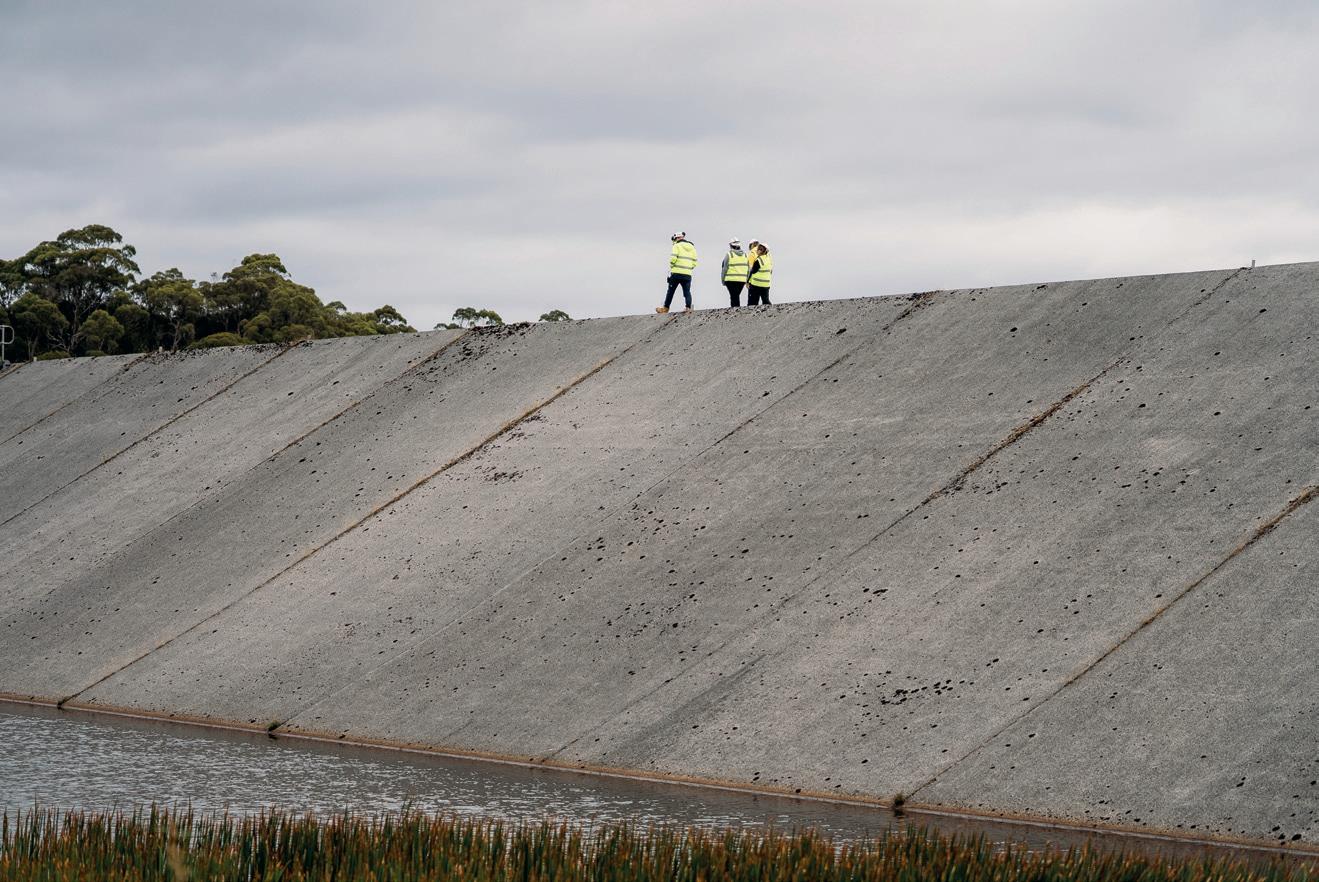

the Tarraleah hydropower scheme and pumped hydro at Lake Cethana underway, the program is just one of the ways Hydro Tasmania is working to ensure it has the workforce it needs to help meet future energy demand.
Hydro Tasmania Project Manager Oliver Giudici said the workshop focuses on introducing participants to different roles within the business.
“It’s not every day you get an upclose look at an infrastructure project of this size, or the chance to explore a power station,” Giudici said.
“This program is designed to provide young people with insights into a range of trades and professional roles and give them the confidence to try something new.”
The obstacles to entering the renewable energy sector emerge early in life.
With entrance to many energyrelated university degrees requiring prerequisite subjects for maths and science, Hydro Tasmania said an important part of the solution is ensuring students have options when applying to university.
The utility took a critical step in encouraging science, technology, engineering and mathematics (STEM) studies with the 2017 launch of its education program Generation Hydro.
Generation Hydro runs free activities for primary and secondary school students, including school visits, power station tours and hands-on interactive tasks that get young people excited about STEM.
The program is focused on increasing awareness of STEM industries facing skills shortages and encouraging students to study STEM throughout school and into their careers.
Hydro Tasmania is also taking steps to tap into an important talent pool that has historically been left out of STEM industries – women.
One of Generation Hydro’s activities is Girls in Power, a workshop series that aims to engage young women in grades nine and 10 in fun and inspiring STEM activities and experiences.
Girls make up only one quarter of year 12 enrolments in information technology, physics and engineering subjects, according to the Federal Government’s STEM Equity Monitor.
Hydro Tasmania Manager of Engagement Programs Sarah Metcalf said the Girls in Power program aims to introduce young women to the possibility of a career in STEM.
“Women are still underrepresented in STEM industries, including the renewable energy sector. We want to encourage more young women to take up STEM subjects in years 11 and 12 and
consider careers in our industry when they graduate,” she said.
“We need young women to feel they belong and can achieve great things in our sector. One way we can do this is to introduce them to STEM subjects from a young age and encourage them to follow these pathways at university.”
Attracting and retaining staff
Hydro Tasmania runs an annual graduate program to help university students get their foot in the door, with each participant guaranteed a job at the end of their two- or threeyear program.
Participants are exposed to different areas of the business through six-month rotations before settling into one.
The program offers a wide range of career options for graduates, with positions in civil, electrical and mechanical engineering, business, information technology, commercial, environmental science, legal and accounting.
Hydro Tasmania Executive General Manager of People and Corporate Affairs, Ruth Groom, said the program was the first step for many graduates in a long and rewarding career.
“Our graduate culture is collaborative and hands-on and the program gives graduates the chance to learn about the possibilities that await them with a career at Hydro Tasmania,” Groom said.
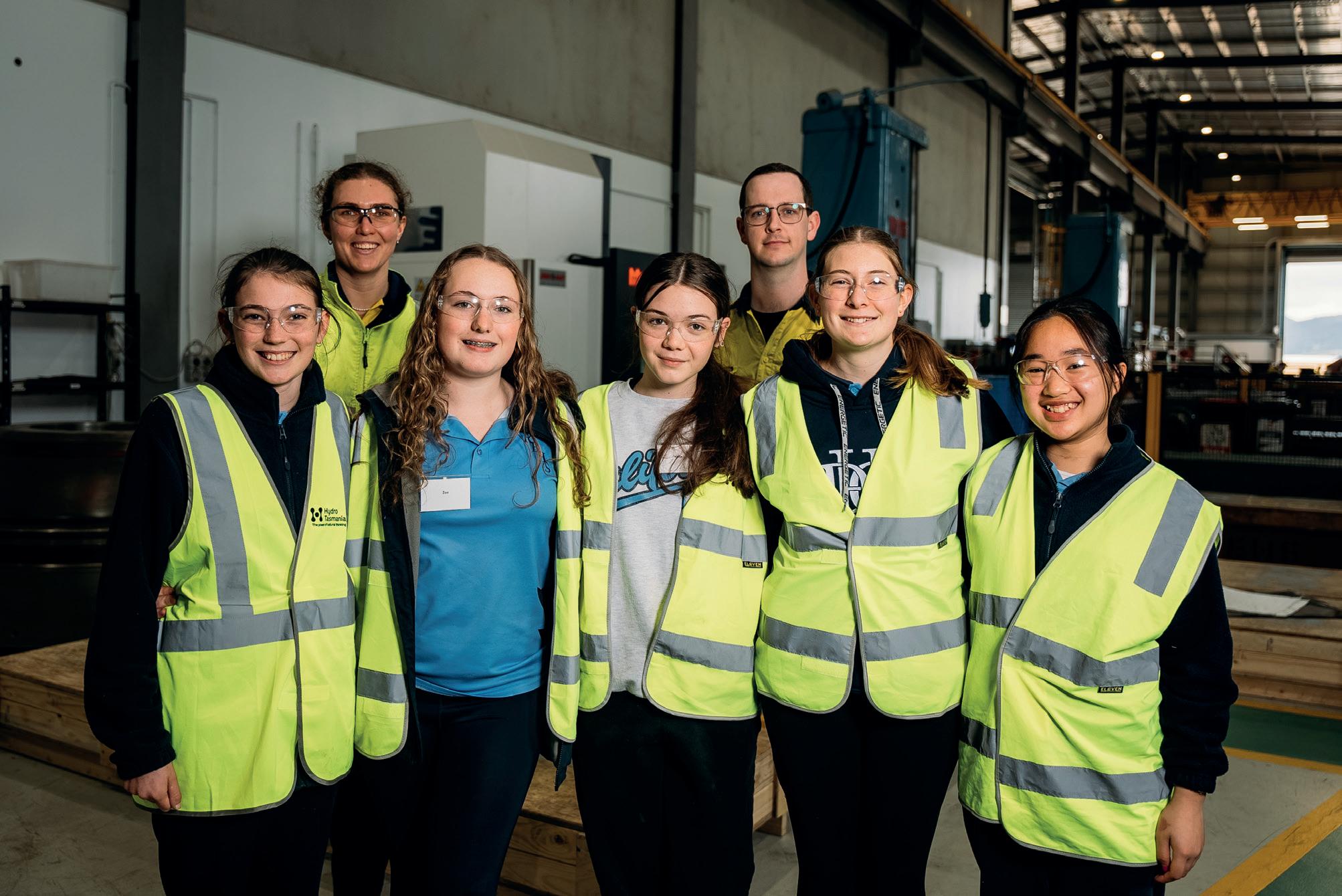
“Many of our senior leaders started their rewarding careers in the graduate program.”
Mechanical Engineer Zali Steiner recently completed the graduate program, and she said it gave her the opportunity to explore different areas of the sector and the diverse roles engineers play.
“From strategy and risk to handson maintenance, I gained valuable problem-solving skills while working with cutting-edge and historic machinery that powers communities across the state,” Steiner said.
“The best part has been the variety of work, incredible locations, and collaborating with passionate, skilled people every day.”
Graduate Environmental Analyst Annalise Ball said the graduate program had a great balance of field and office work, and provided access to expert mentors and professional development opportunities.
“Two years in, I feel confident and ready to step into a permanent role with hands-on experience and a diverse skill set,” Ball said.
Hydro Tasmania said its power stations couldn’t run without its maintenance assistants and mechanical and electrical fitters, and there are exciting career pathways for people who take on these positions.
In addition to the utility’s graduate program, Hydro Tasmania offers maintenance assistance traineeships and apprenticeships for mechanical and electrical fitters.
On King Island and Flinders Island, which are not connected to a mainland electricity supply, the apprenticeship program extends to diesel mechanics and lineworkers.
During a four-year apprenticeship, apprentices work side-by-side with experienced tradespeople across Tasmania on routine maintenance and large-scale projects at power stations.
The utility also covers the cost of each apprentice’s TAFE course and tuition fees.
Hydro Tasmania supports its tradespeople to develop their career with the utility and many people who started as an apprentice have gone on
to become power station operators
Production Supervisor Jeramy Whitehouse-Summers started his career with Hydro Tasmania as a lineworker and electrical apprentice before working his way up to power station operator and then to his current role, where he manages a team of 13 employees on King Island.
“Hydro Tasmania has really supported and encouraged me throughout my career,” Whitehouse-Summers said.
“When I started my linesworker apprenticeship with Hydro Tasmania, I never expected I’d one day be working as a production supervisor and managing a team.
“I’ve grown up on King Island and have a great sense of community pride,” he said.
“Supplying power to the community is a great passion of mine, as it is for the rest of the team.”
For more information on careers and pathways with Hydro Tasmania, visit hydro.com.au/education/ secondary/career-pathway-options

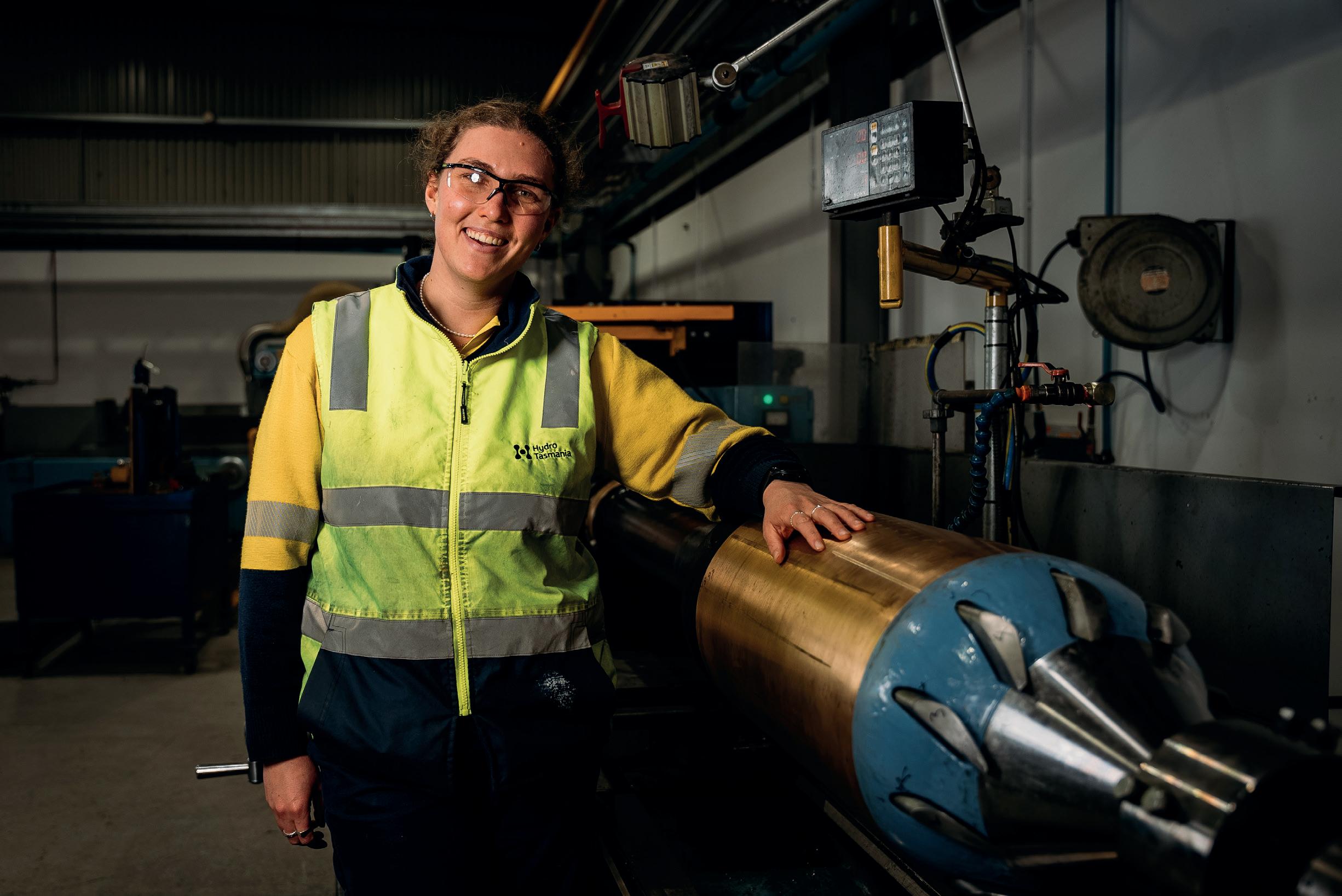


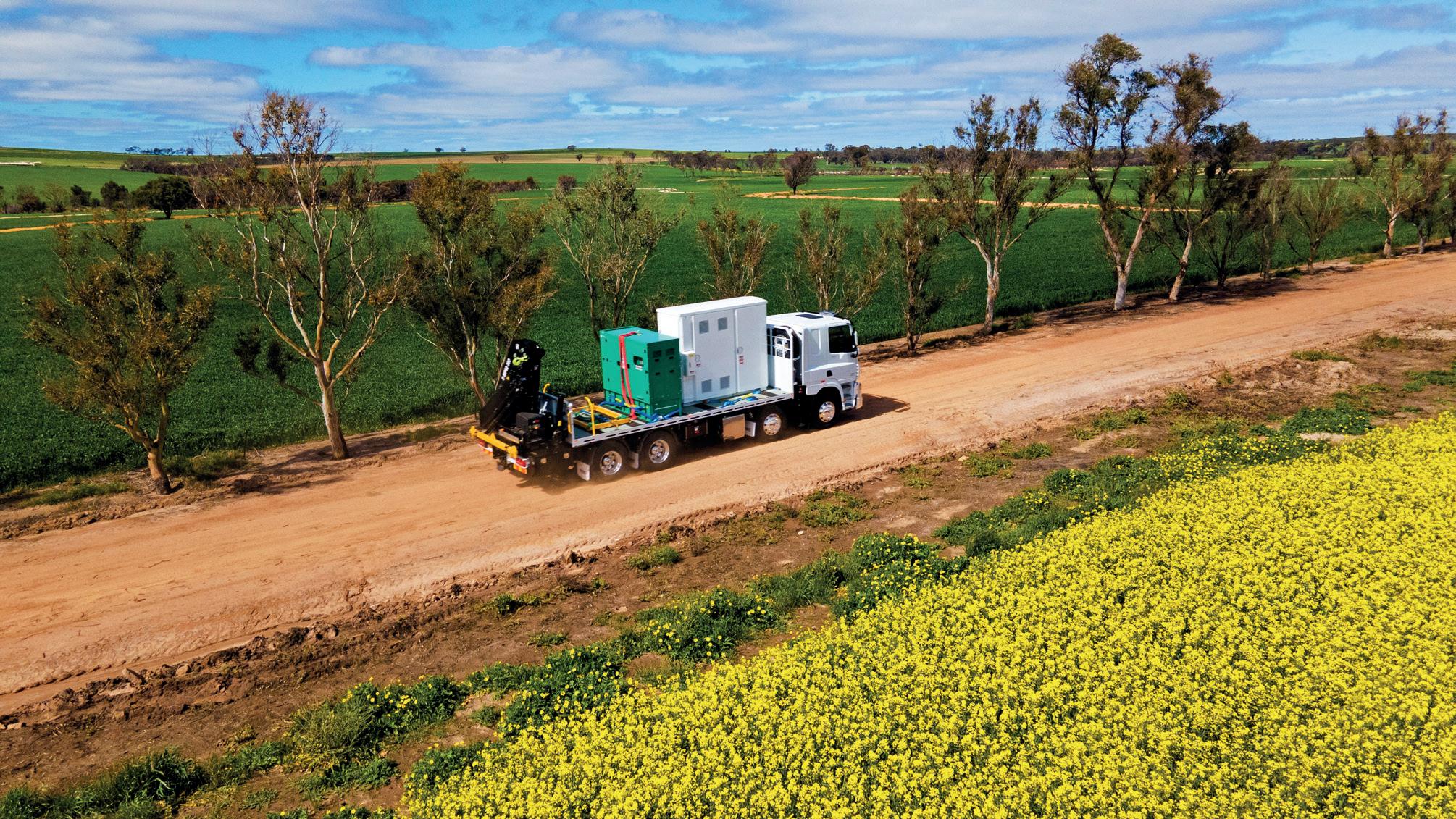
Pacific Energy is helping to shape Australia’s future energy system with its stand-alone power systems, designed and manufactured right here in Australia.
In Australia’s vast and often remote landscapes, stand-alone power systems (SAPS) have been a beacon, offering a safe and reliable off-grid alternative to the country’s vast fringeof-grid network.
Pacific Energy is playing a major role in developing and deploying SAPS nationwide. The company’s Managing Director Renewables, Daniel Jackson, said these systems are more than just a remote power solution.
“SAPS will play a critical role in Australia’s future energy mix,” he said.
While SAPS uptake has typically been driven by the need for greater power supply reliability, Jackson said the key drivers are evolving as the renewable transition continues.
“More clients see the CO2 reductions that can be made by the large quantities of fossil fuels that SAPS can displace,” he said.
Indeed, replacing a diesel generator with one of Pacific Energy’s SAPS can lead to a 70 per cent reduction in CO2 emissions.
The benefits have been proven by early adopters, Jackson said, like Western Australia’s power utilities, who have been rolling out SAPS in bushfire prone areas at the end of long, isolated spurs to great effect.
Now, the versatility of SAPS is extending beyond remote utility applications. Pacific Energy is seeing a trend of miners and private industry replacing traditional mobile generators with smaller scale, rapidly deployable SAPS.
“This is because these self-contained units can be quickly deployed virtually anywhere, providing assurances against fuel insecurity and price fluctuations and helping clients to reduce their Scope 1 emissions,” he said.
This also extends to the National Electricity Market (NEM), with Pacific Energy seeing east coast providers do the same.
Jackson believes WA’s continuing large-scale adoption of SAPS provides east coast operators with the confidence to continue pursuing the
technology, seeing that it can meet their cost-saving and reliability objectives.
Staying ahead in the rapidly evolving energy sector means keeping innovation at the centre of all operations. “At Pacific Energy, innovation is central to our product development,” Jackson said. “It’s how we continue to stay ahead of the curve.”
SAPS engineers and technicians at Pacific Energy have an ongoing review program for new technologies that emerge in the space, which helps the company determine if and how they could be integrated into its platforms to enhance reliability, functionality and efficacy for end users.
“We also make significant investments into research and development as an organisation, with a particular focus on SAPS development,” Jackson said. This approach has led to the development of the Pacific Energy Centre of Expertise, which is dedicated to exploring new technologies and
innovating processes that the company can adopt across its product and services offering.
One key outcome has been a range of rapidly deployable SAPS the company is rolling out for mining and commercial clients, the smallest of which can be installed and providing power within 60 minutes.
Pacific Energy has been continually refining its SAPS platform over the past six years as it works to deliver more than 300 units for Western Power’s Stand-alone Power Systems Program.
“These improvements mean our SAPS can cater to a wide array of customers, load profiles and functional requirements with very few changes to the design,” Jackson said.
“We have some of the most experienced SAPS experts in the country on our team, from engineering and design through to construction, installation and operations.”
The company’s SAPS are manufactured by a specialised team of locals in a purpose-built Perth workshop. “Our specialised facility is one of the largest of its kind in the world,” Jackson said. “It’s kitted out with advanced manufacturing technologies, meaning we can produce units to a consistently high standard, quickly and at scale.”
Pacific Energy is committed to local manufacturing, which Jackson said not only ensures high-quality, cost-effective production but also supports job security.
“Our Perth facility means we can play a central role in strengthening and diversifying local skills and building up a strong foundational workforce for Australia’s energy and manufacturing sectors,” Jackson said.
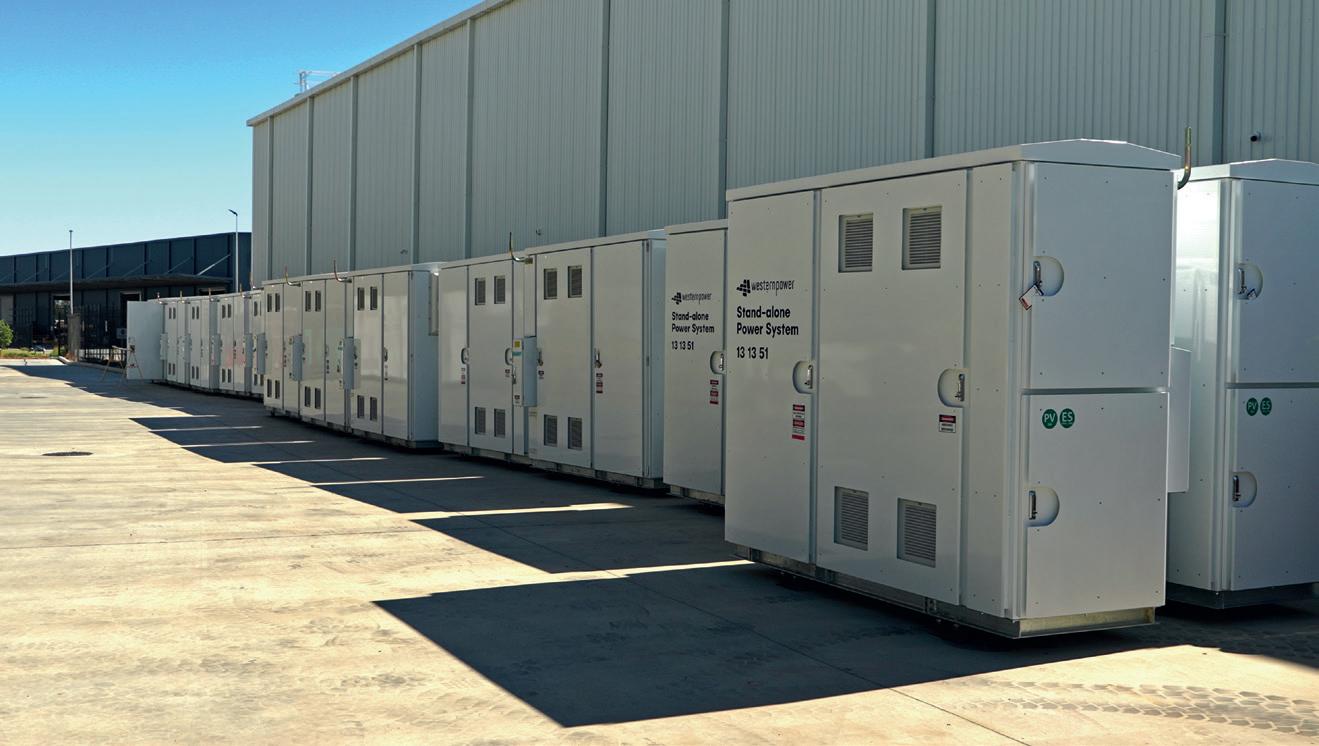
Pacific Energy secured a $2.4 million grant from the WA Government’s Investment Attraction Fund in 2023, aimed at creating local jobs and securing new investment opportunities that strengthen the state’s economy.
“The grant, plus our own dollar-fordollar investment, has enabled us to advance the capacity and output of our SAPS by improving automation, safety and production efficiencies,” Jackson said.
Keeping up with the demand for SAPS requires Pacific Energy to turn over high-quality units quickly and at scale. The company relies on a large workforce of skilled professionals, but the capabilities required are in high demand across the sector.
Jackson said Pacific Energy is passionate about contributing to the essential pipeline of skilled talent required to transition Australia to a clean energy future. The company has developed an apprenticeship program that offers fabrication, mechanical and electrical apprenticeships that expose

apprentices to many aspects of the business before participants become qualified tradespeople.
“We’re also developing an educationto-employment program that is building relationships with schools and fostering a pipeline of interest in the manufacturing and energy-generation sectors,” Jackson said.
The program is already providing on-the-job training for participating students while they’re still attending school. It also offers internal progression opportunities to junior and unskilled employees, supporting them with maths tutoring that prepares them for apprenticeship applications and further career development.
Jackson said there is potential demand for thousands of SAPS across the country as the tech continues to evolve, costs reduce and clients see more success stories.
“At the current rate of interest, private industry could supersede the deployment of utility SAPS in terms of volume and opportunity,” he said.
“Whether it’s replacing diesel generators in remote locations, powering construction and road crew applications, or even supplying power to festivals and events, SAPS have great potential across the NEM.
“And there are plenty of learnings that we can apply to accelerate the rollout.”
WA’s SAPS rollout has set a strong example for the rest of country as it begins to follow suit, and as demand grows across the NEM, Pacific Energy is ready to support both utilities and private industry alike with its proven, locally manufactured SAPS.
For more information, visit pacificenergy.com.au
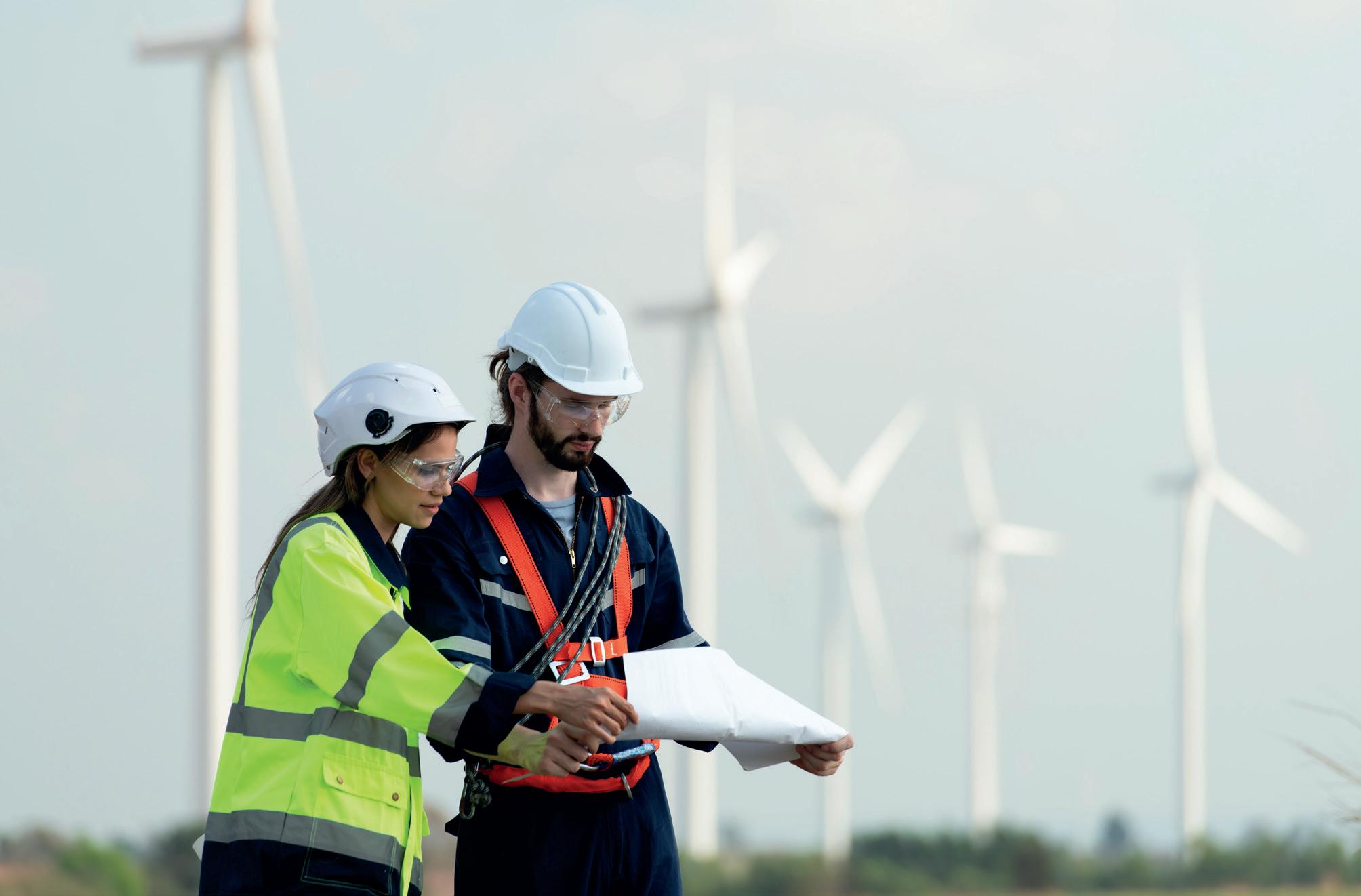
Renewables may power the grid, but people are powering the transition. Supporting the workforce will be key to Australia achieving its net zero goals.
When it comes to change, there is perhaps no other industry going through it quite like the energy sector.
The core technologies that underpin the industry have been undergoing a significant transition over the last 20 years. Legacy generation and storage technologies, which have evolved steadily for decades, have been challenged by the rise of renewables and the broader electrification revolution.
While large-scale, centralised fossil fuel generation used to be the norm, a range of renewable technologies now contribute to Australia’s energy supply – from utility-scale wind and solar to pumped hydro, biogas and hydrogen.
At the other end of the spectrum, small-scale commercial and domestic solar installations also play a role in the energy mix, and micro-grid systems are becoming increasingly popular through the use of home batteries.
The sector is being further diversified by the electrification of the automotive industry, the rise of home and industrial automation, and a growing need for digital skills related
to the Internet of Things (IoT) and the interconnected systems on which these technologies rely.
The changes to the sector have also affected the workforce.
Powering Skills Organisation (PSO) – one of 10 jobs and skills councils established by the Federal Government – has been tasked with managing this as the transition continues. The organisation oversees the training for apprentices entering the energy sector and is responsible for managing the expansion of the workforce as the industry continues to evolve.
With so much change happening, PSO CEO, Anthea Middleton, understands as well as anyone that there’s a lot of work to be done.
“After all, if business is booming, we need workforce power to deliver it. And that is where the real struggle comes in,” she said.
“The sector is battling not only the volume of work from these projects and changes, but also the conundrum of how to provide the workforce with the skills and knowledge to install, maintain and repair these technologies in an informed and, most importantly, safe manner.”
PSO believes that for Australia’s energy transition to be successful, it is not just the technologies the sector works with that need to transform, but also the sector’s cultural approach to learning.
“By embedding lifelong learning into the cultural ethos of the energy sector, its employers and workers, we can successfully meet the future needs of the Australian industry and the public,” Middleton said.
The energy sector is evolving rapidly. When industry first turned its focus to the sector’s growing workforce needs a decade ago, the idea of net zero didn’t form even part of the discussion.
By 2022, however, the Federal Government had legislated the Climate Change Bill, committing to emissions reduction targets of a 43 per cent reduction of 2005 levels by 2030 and net zero by 2050.
If you ask PSO, the enduring workforce shortages in the Australian energy industry put these ambitions in jeopardy.
Jobs and Skills Australia currently estimates that expanding production

of renewable energy beyond our own domestic requirement would see Australia onshoring green manufacturing and would require an additional 42,500 electricians by 2030, with almost 100,000 additional electricians by 2050.
PSO estimates that Australia needs to grow the volume of new energy apprentices by 40 per cent above current levels to meet demand. In August, the organisation will release its ‘2025 Energy Sector Workforce Plan’, a blueprint to respond to the industry’s workforce, skills and training needs.
Middleton believes the report will help guide governments in making decisions about the energy sector, and the workforce and skills it requires.
“The transition to net zero and the corresponding technological advancement will impact every aspect of the workforce,” she said.
“The skill requirements of the energy workforce are already broadening, with indications that current specialisations like commissioning, data analytics, cybersecurity, system integration and even ozone-friendly refrigerants will become core skills into the future.”
Middleton said the same about soft skills.
“They’ll help workers liaise with increasingly savvy customers who are keen to embrace automation, real-time energy forecasting, grid integration and other consumer energy systems,” she said.
According to the Australian Computer Society’s ‘Technology Impacts on the Australian Workforce’ study, automation presents a relatively low risk for job loss or reduction in the energy sector.
However, the impact of technology and role augmentation is more significant.
PSO said this highlights the importance of ensuring the energy workforce is adaptable and allows workers to continually develop their skills and knowledge, formally and informally. But this reality poses its own unique challenge.
How can a workforce trained in traditional energy systems and training products that have remained relatively unchanged for 20 years pivot to a future defined by automation, IoT, artificial intelligence and sustainability?
The answer is not in singular retraining initiatives, according to PSO, but a cultural shift within the industry towards continuous, lifelong learning.
Though it is not a new principle, PSO said lifelong learning is something the energy sector is yet to truly embed within its broader industry culture. Staying ahead of technological trends and changes in the field and building on existing knowledge will be the key to ensuring workers are suitably skilled for the future, the organisation said.
PSO argues the solution is not shorter, more condensed training, but rather the quality delivery of

From apprenticeships to advanced tech skills, training is the key to a future-ready energy workforce.
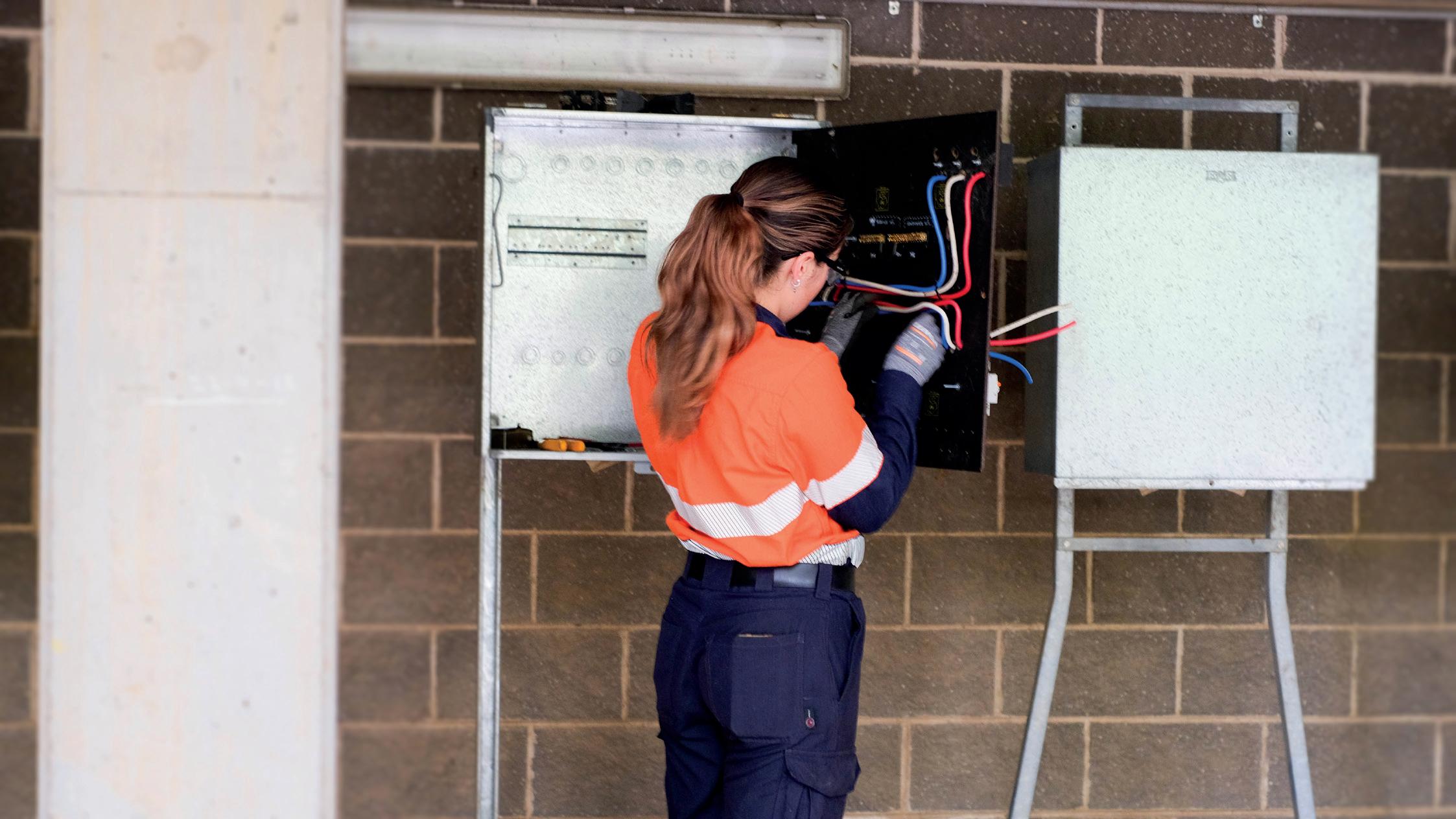
foundational skills and ongoing learning and professional development to keep pace with change. This should also include embedding processes for peer-to-peer knowledge sharing and mentoring in the workplace.
Middleton said when lifelong learning is truly supported by the energy sector, and not seen as a burden, workers become more agile and adaptive.
“They will drive the adoption of new technologies, innovation and increased productivity through smarter practices and a more intelligent, tech supported approach,” she said.
By embedding lifelong learning within the industry’s DNA, PSO believes there’s opportunity to empower and engage workers in the change taking place around them, making a positive impact on attraction and retention to the sector.
Although some of the key skills, knowledge and culture will inevitably be dispersed throughout the industry by more experienced members of the workforce, the bulk of formal training will continue to sit within the vocational education and training (VET) system.
The issue, PSO said, is that the enduring labour shortages and the associated increased workload on the existing workforce can result in training being perceived as unnecessary – and even as a burden – by the industry and workers themselves.
In addition, the VET system is battling labour shortages of its own, with the volume of workers having largely plateaued since roughly 1986, despite significant increases in enrolment and initiatives like fee-free TAFE. PSO said this has led to critical training gaps in pre-apprenticeship, apprenticeship and post-trade levels.
While the organisation agrees non-accredited and original equipment manufacturer training has a role to play, it argues a strong, quality-focused, effective VET sector remains vital.
But how can the sector achieve a culture of lifelong learning and impart the skills required for Australia’s energy future if the VET sector doesn’t have the capacity to train the workforce?
“In short, we can’t address one and not the other,” Middleton said. “The two are inextricably linked.
“When we talk about embedding lifelong learning in the energy sector, that must also include imparting knowledge, encouraging skilled workers to contribute to the training of the next generation – whether it be as a formal educator, or informally within the workplace.”
PSO is undertaking a number of projects to help get this up and running, including updating training packages, looking at the cultural changes required in certain locations and determining which skillsets are required for different qualifications. The organisation said embedding lifelong
learning and building the workforce Australia’s energy sector needs is not a task for a single entity or organisation.
“Government, industry, workers, the training sector and PSO all have a strong role to play,” Middleton said.
According to PSO, collaboration and the sharing of knowledge and resources will foster the right conditions for success. The organisation said each party will need to carefully consider the available opportunities to contribute to a new learning culture, commit to developing inter-relationships and collaborate to secure the skilled energy workforce Australia needs.
The energy industry is at a pivotal moment, with technological advancement and the transition to net zero redefining every aspect of the sector. To meet the challenges ahead, PSO feels Australia must build a workforce that is not only skilled but perpetually learning.
Embedding lifelong learning is not optional, the organisation said, but essential. It is the key to ensuring a successful, inclusive and sustainable energy transition. And it is how the organisation sees the future vision of Australians powering the nation to achieve net zero is upheld.
“If we get this right, the energy workforce of the future won’t be a casualty of technological and net zero disruption,” Middleton said. “It will be its champion.”

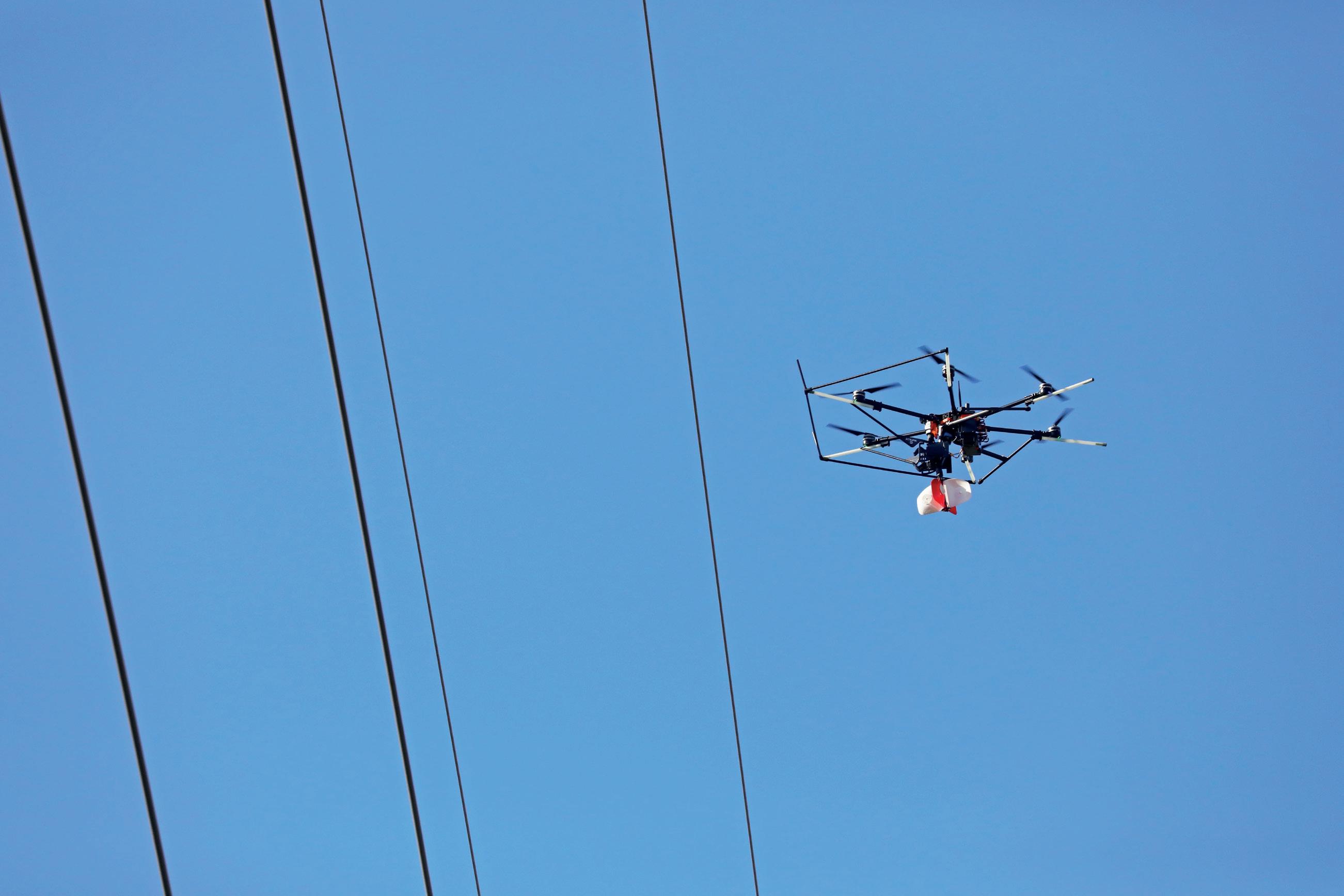
With the national commitment to expand the energy grid to support renewables, V-TOL Aerospace is working to ensure this essential infrastructure is protected.
ustralia’s energy networks are rapidly expanding, with new transmission infrastructure stretching further and higher to support the renewable energy transition. But as infrastructure increases, so too do the risks – to the assets themselves, and to the people and wildlife around them.
Like other critical infrastructure, transmission towers and powerlines are vulnerable to corrosion, extreme weather and wear, but their size and elevation introduce additional hazards.
High above the ground and often in isolated areas, these assets can be all but invisible in poor conditions. Even on clear days, powerlines can be difficult to see from the air, but at dusk and dawn, or during cloudy, wet or smoky conditions, they effectively disappear.
This is a particular risk for low-flying agricultural aircraft and ground crews working in close proximity to powerlines.
Accidental contact with live wires can cause electrocution and serious injury, as well as infrastructure damage, fires and power outages – all at great cost to wildlife, utilities and communities.
Addressing this critical challenge requires dedication and skill, and utilities are looking to experts like V-TOL Aerospace to protect their people and assets.
Marking the problem
Aerial safety markers are a proven way to make infrastructure more visible and
prevent collisions. Under the Australian Standard AS 3891:2021, aircraft warning markers are required where low-level flying operations take place, but installing them is no easy feat.
Marker installations have traditionally relied on helicopters, cherry pickers or hot stick live line methods. These approaches, however, can be expensive and dependent on weather, and they often carry significant safety risks for the crews involved.
In many cases, installing markers also means shutting down a section of the network, disrupting supply and increasing operational costs. And in some environments, installation may be unfeasible due to cost or difficultly accessing the site, leaving potentially vulnerable lines unmarked. This is where drones are changing the game.
Drone use has advanced rapidly across the energy sector in recent years. Initially used for inspections and imaging, drones are increasingly employed for other complex tasks, from line stringing to asset maintenance and even aerial marker installation.
Replacing helicopters with drones means utilities can reduce cost, avoid emissions and eliminate many of the safety risks associated with working near live infrastructure.
Drones can also provide access to previously unreachable areas, unlocking new levels of visibility, all while crews remain safely on the ground.
Robotic revolution
V-TOL is taking drone-based marker installation to new heights with ROTA-FIX, a robotic drone platform that enables the safe, precise installation of hazard markers on live transmission and distribution infrastructure.
Working in partnership with Balmoral Engineering, the inventors of the ROTAMARKA and Rota-Flag hazard markers, V-TOL created a first-in-class robotic platform for the energy industry – one that removes human contact from the installation process entirely.
Weighing in at just 15kg, ROTA-FIX is a lightweight electric alternative to helicopter installation. The system has been rigorously tested for safety and performance within energised environments and meets operational standards for use around live infrastructure.
The electric drone has been field-tested and has demonstrated that it is safe to operate within energised infrastructure, meaning there are no shutdowns required.
Using ROTA-FIX to install markers provides a number of benefits.
• Improved safety – eliminates human exposure to live electrical assets
• Fewer weather restrictions – drone crews can wait on-site for bad weather to clear for a fraction of the standby cost of a helicopter
• Cost efficiency – significantly lower operational, deployment and redeployment costs than a helicopter
• Lower emissions – a 1–2t twin engine helicopter consumes upwards of 600L of jet fuel per hour
Since its launch, ROTA-FIX has been deployed on a range of transmission assets across Queensland, Victoria and New South Wales.
V-TOL used ROTA-FIX to position and mark critical Powerlink transmission line infrastructure near the emergency services helipad at Origin Energy’s Darling Downs Power Station in Queensland. A similar demonstration for Powerlink at Swanbank Power Station Precinct showed the drone’s effectiveness in windy, variable conditions that would have delayed helicopter installation.
In Victoria, V-TOL completed five projects for Powercor and AusNet, including challenging installations over a river crossing and waterway in northern Victoria, and mountainous locations in the state’s south. One project near a pelican habitat saw markers installed to protect wildlife and deflect low-flying agricultural aircraft
South Wales, installing hazard markers on elevated electrical transmission infrastructure within the Holsworthy Military Area, a complex environment with strict safety measures and defence requirements.
Safer, smarter networks
Beyond improving visibility and safety, V-TOL’s ROTA-FIX also offers considerable digital intelligence in the asset installed.
Each installed marker is recorded by ROTA-FIX at the point of attachment. Information such as ROTAMARKA type, position, date and time of installation is uploaded from the drone to be recorded on a digital twin or asset management system, providing greater accountability for utilities, who can visualise where, how and when the asset was installed.
To complement the opportunity to install a Marka, V-TOL is also working on a smart device to collect and transmit data in-real-time to a Digital Twin platform. As part of this, sensors
The Digital Twin platform offers real-time and eventually predictive insights using advanced data analytics to measure current and future network performance. This is particularly important during high-risk periods such as storms, floods fires and other natural disasters.
With the implementation of smart devices with supporting artificial intelligence, utilities can view live conditions across their networks, respond to emerging threats and make better-informed decisions that reduce risk and improve reliability – from any handheld device.
As Australia’s energy networks grow more complex, physical and digital visibility will be critical to a safer, more reliable grid.
By combining robotics, data and innovation, V-TOL is revolutionising the way utilities and energy companies protect their infrastructure, while prioritising the safety of their people and communities.

Australian businesses are embracing solar, and virtual power plants hold the key to unlocking its full potential. So the question for these businesses is: what’s next?
The rise of solar and wind generation is re shaping the economics of energy, driving changes in how power is produced, priced and consumed for business.
In 2024, Australian businesses invested in solar like never before, with a record breaking 1GW installed on commercial buildings across the country.
But generation alone isn’t enough. To fully realise the value of solar, businesses need smarter, more responsive systems that can store energy, optimise usage and respond to market conditions in real time.
That’s where virtual power plants (VPPs) come in.
By linking assets such as solar and battery storage, VPPs create a single, unified energy network, optimising how and when energy is used.
Battery storage isn’t just about backup power or solar soak up – it’s a strategic asset that helps businesses take control of their energy future.
Linking the solar and battery storage assets of a business together can support decarbonisation efforts, while benefiting operationally, contributing to a cleaner, more resilient and cost‑effective energy system.
RACV Commercial Energy Solutions (CES) is among the first to show how this works at a commercial scale.
In 2024, the organisation launched the VPP at its Torquay and Inverloch resorts in Victoria, aggregating two 500kW batteries. Together, the batteries provide a total capacity of one megawatt – the storage equivalent of approximately 20 average electric vehicle batteries.
The cutting edge technology uses algorithms and automated systems to determine the best times to store and sell energy, transforming solar systems into a flexible, revenue generating asset.
RACV CES Head of Commercial Energy, Tim Nichols, said the system
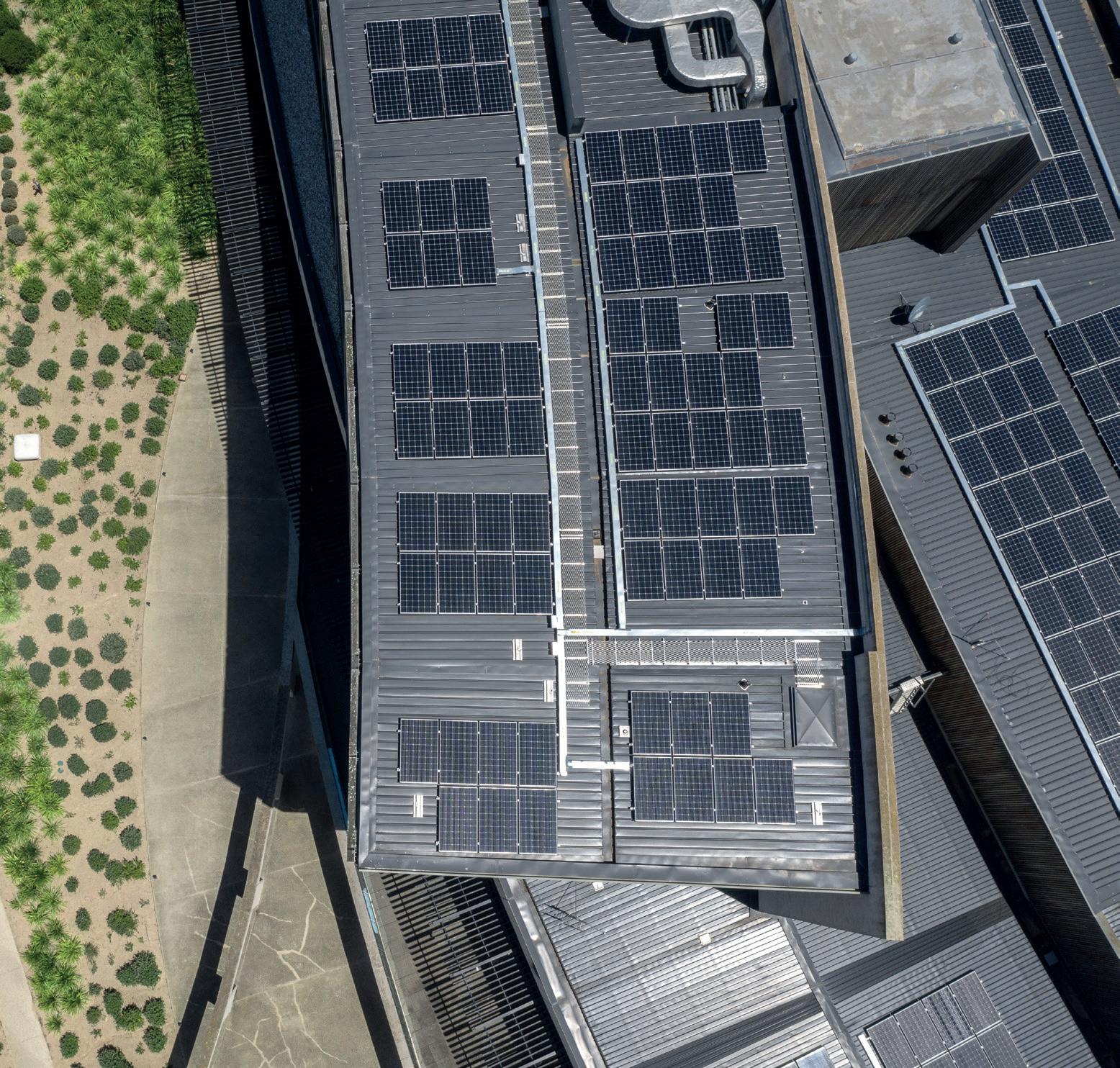
has delivered clear commercial benefits for the company. “The VPP has allowed us to manage energy costs and generate revenue, all while contributing to grid stability by feeding energy back into the grid during periods of high demand,” he said.
Following the successful rollout, RACV CES is now offering the same VPP product to help other businesses cut costs and contribute to a cleaner energy future.
For businesses looking to implement a similar solution that combines solar energy storage while maximising its value, a call to RACV’s commercial energy team is a must. The organisation can deliver a specifically‑tailored, end to end solution
for any business. With RACV CES’s VPP, businesses can turn new and existing renewable investments into dynamic, responsive energy assets. And it’s not limited to just solar and batteries – other controllable assets, such as heat pumps and flexible energy loads, can also be integrated if they meet the VPP’s requirements.
RACV CES offers more than just a VPP. It offers a pathway for businesses to reduce energy costs, unlock new revenue and contribute to a stable energy future.
For businesses ready to take the next step, the future is now with RACV.
For more information, visit racv.com.au/vpp


THE WORLD’S MOST ADVANCED AUTORECLOSING OUTDOOR CIRCUIT BREAKER SYSTEM
MEDIUM VOLTAGE OUTDOOR SWITCHGEAR FOR CONNECTING RENEWABLES AND PRIVATE INFRASTRUCTURE




THE WORLD’S FIRST SOLID DIELECTRIC INSULATED LOAD BREAK SWITCH WITH VISIBLE INTERNAL ISOLATION
CUTOUT MOUNTED RECLOSER –A RELIABLE ALTERNATIVE TO MV FUSES


By Senior Vice President MSSSI, Enterprise Resilience and Security Sales, Motorola Solutions, Jeremy Smith
As cybersecurity threats surge, Australia can look to international approaches shaping a more resilient energy future in other parts of the world.

One of the most dynamic sectors in the country, Australia’s energy industry is integral to the national economy.
The oil and gas industry alone supports around 80,000 jobs across its entire value chain, and renewable energy opens up a range of global market opportunities.
What’s more, the products that the industry delivers are essential for the functioning of society – powering our homes, hospitals, transport networks and beyond.
That criticality goes a long way in explaining why energy is so vulnerable to cyberattacks, even when compared to other critical infrastructure sectors. In fact, the Australian Signals Directorate’s
Australian Cyber Security Centre ranked electricity, gas, water and waste services as the most reported critical infrastructure sector – representing a staggering 30 per cent of the cybersecurity incidents the Directorate responded to in FY2023–24.
High-profile cyberattacks on leading energy providers only serve to back up this data.
Of course, Australia boasts a robust framework for managing critical infrastructure security, thanks to the Security of Critical Infrastructure Act 2018 (SOCI).
But Australia isn’t the only country dealing with constant attack attempts on its critical infrastructure assets – peers in the US, UK and the EU
face similar – and often even greater –levels of threat.
So what can energy providers in Australia learn from the frameworks other countries have developed to mitigate these security risks?
The pointy spear of regulation tends to be incident reporting.
Like the SOCI Act, the Cyber Incident Reporting for Critical Infrastructure Act (CIRCIA) requires critical infrastructure organisations in the US to report cyber incidents to the Cybersecurity and Infrastructure Security Agency.
CIRCIA also mandates reporting of ransomware payments, too – a

Australian energy providers can learn from global compliance best practice to protect their assets from cyberattacks. Image: peerawat/stock.adobe.com
requirement that was only added to SOCI Act with the passage of last year’s Cyber Security Act 2024.
One of the more forward-thinking provisions of CIRCIA, in my opinion, is the establishment of the Cyber Incident Reporting Council (CIRC). The Council’s mandate is to coordinate, deconflict, and harmonise federal incident reporting requirements, of which it found 52. This led to a proposed model definition for reportable cyber incidents, including timelines and reporting triggers, as well as recommendations on how to align the content of cyber incident reports and update and supplement those reports after the first incident notification is made.
Incident notification is important at the response stage of a cyber incident. Mitigation efforts are essential well ahead of time, though.
One of the most significant efforts that energy providers can undertake is developing a resilience plan to detail the measures taken to prevent, respond to and recover from an incident. In the EU, that step is mandated by law, thanks to the Critical Entities Resilience (CER) Directive, equivalent to the SOCI Act.
The Directive, which came into force in January 2023, aims to strengthen the resilience of critical entities against threats such as natural hazards, terrorist attacks, insider threats, sabotage and public health emergencies.
More specifically, the Directive requires critical entities such as energy providers to carry out regular risk assessments – no fewer than every four years. Identified risks must then be addressed through appropriate technical, security, and organisational measures.
Meanwhile, the resilience plan itself must focus on the precise measures taken to prevent incidents from occurring based on risks identified.
The plan must also include provisions for: (1) ensuring adequate protection of critical infrastructure; (2) addressing the impact of and recovery from incidents; and (3) guaranteeing adequate employee security management.
In addition to the CER Directive, the EU has also promulgated the Network and Information Security (NIS2) Directive to deal specifically with threats to the network and information security of its critical infrastructure organisations. This Directive requires entities to take an all-hazards approach to the security risk management of their network and information systems.
Some measures critical infrastructure organisations must take include:
• policies on risk analysis and information system security
• incident handling
• business continuity and crisis management
• supply-chain security
• security in network and information systems acquisition, development, and maintenance, including vulnerability handling and disclosure
• policies and procedures to assess the effectiveness of cybersecurity risk-management measures
• basic cyber hygiene practices and cybersecurity training
• human resources security, access control policies and asset management
• the use of multi-factor authentication or continuous authentication solutions.
The final jurisdiction I’ll cover is the UK, where the government is expected to introduce its landmark Cyber Security and Resilience Bill later this year.
Interestingly enough, this Bill seeks to align the country’s existing Network and Information Systems (NIS) Regulations with the EU’s NIS2 Directive, while making it essential for regulated entities to follow best practices to ensure cyber resilience.
Acknowledging the importance of third parties in critical infrastructure protection, the Bill will also bring managed service providers who offer core IT services into scope, with the hopes of enhancing the security of IT infrastructure and reducing the risks of cyberattacks.
In a similar vein, the Bill will enable the government to set stronger supply-chain duties for operators of essential services and relevant digital service providers, while also giving regulators the power to identify and designate specific critical suppliers.
Indeed, for Australian energy providers, there’s much to learn from global compliance best practice, particularly as attacks on energy assets increase.
At Noggin, we recommend introducing flexibility to critical infrastructure security risk management programs and procedures, to account for changing practices and new global compliance drivers.
For that reason, I’d also recommend investing in integrated resilience software to give your critical infrastructure risk management program the flexibility it needs.
Solutions such as Noggin’s empower energy providers to meet evolving compliance obligations by enabling their teams to work together to anticipate and manage threats, conduct preparedness activities, effectively respond to disruptions, and continually learn from insights to strengthen resilience.
For more information, visit noggin.io

When it comes to renewable infrastructure, strength isn’t just in the steel –it’s in the partnerships that bring projects to life.
Steel is integral to the energy transition. From wind turbines and solar farms to large-scale storage projects, it provides the strength and reliability required for this infrastructure. Much like steel forms the structural foundation of energy infrastructure, strong partnerships form the foundations that make their delivery possible.
This was the case at the Limondale battery energy storage system (BESS), which was enabled by a partnership between Calibre Steel and Solidity.
The landmark project aims to support New South Wales’ grid by soaking up excess renewable energy and storing it until it’s needed most. As the first successful project in the state’s inaugural Long Duration Storage Long-Term Energy Service Agreements, it represents a step forward in the NSW energy transition.
Comprising 144 lithium-ion batteries, the BESS can store up to 400 megawatt-hours (MWh) of clean energy. But before any of them could be installed, the site needed a strong foundation: 864 helical piles, each
engineered to withstand a range of structural stresses.
Solidity, which was engaged to lead the design, fabrication and installation of the piles, turned to Calibre Steel to supply the all-important steel plate and ensure it met its structural requirements – and the partnership played into the project’s success from day one.
Solidity Managing Director, Brodie Houghton, said the company places a strong emphasis on local partnerships that align with its values of quality, reliability and supporting Australian manufacturing.
“Calibre Steel stood out as a trusted supplier with proven capability to deliver high-grade Australian steel within the tight timeframes the project demanded,” he said.
Calibre Steel Customer Relationship Manager, Maddie Dharmapala, said once the partnership was locked in, the first step was engaging with Solidity to understand the project’s drivers, pain points and engineering requirements.
“Having that early engagement and scope clarity helped us understand where our steel plate fit in the broader
deliverables of the project,” she said. “It allowed us to align with Solidity’s strategic priorities, and become a solutions partner, rather than just a supplier.”
Houghton agreed that this was a critical first step.
“The clear communication and shared commitment to delivery was the key to the project’s success,” he said.
To support the heavy weight of the battery units, the helical pile foundation was designed to meet strict structural and geotechnical requirements.
Each battery required six helical piles, engineered to withstand the compression, tension, and lateral forces they would be subject to upon the project’s completion.
The piles were fabricated with 139.7mm shaft diameters. The lengths and helix configurations were determined through geotechnical analysis, with Solidity ensuring the piles had maximum load-bearing capacity while also remaining efficient to install.

Produced at Solidity’s in-house manufacturing facility in Victoria, the piles and pile caps utilised high-quality steel supplied by Calibre Steel. The company provided TRU-SPEC steel and grade 350 steel plate in thickness of 12mm, 16mm and 20mm.
Solidity’s decision to use TRUSPEC steel was driven by the company’s commitment to using Australian-made steel.
“For a project like Limondale BESS, which is at the forefront of Australia’s energy transition, it was essential that the foundations were as local as the ambition,” Houghton said.
Importantly, Houghton said, using Australian-made steel also ensures compliance with project standards, traceability of materials, and alignment with government and client expectations around sustainability and economic contribution.
As a tier one distributor of Australian steel, Calibre Steel worked closely with TRU-SPEC steel manufacturer BlueScope to supply the steel.
With only 60 days to complete the project, Solidity and Calibre Steel
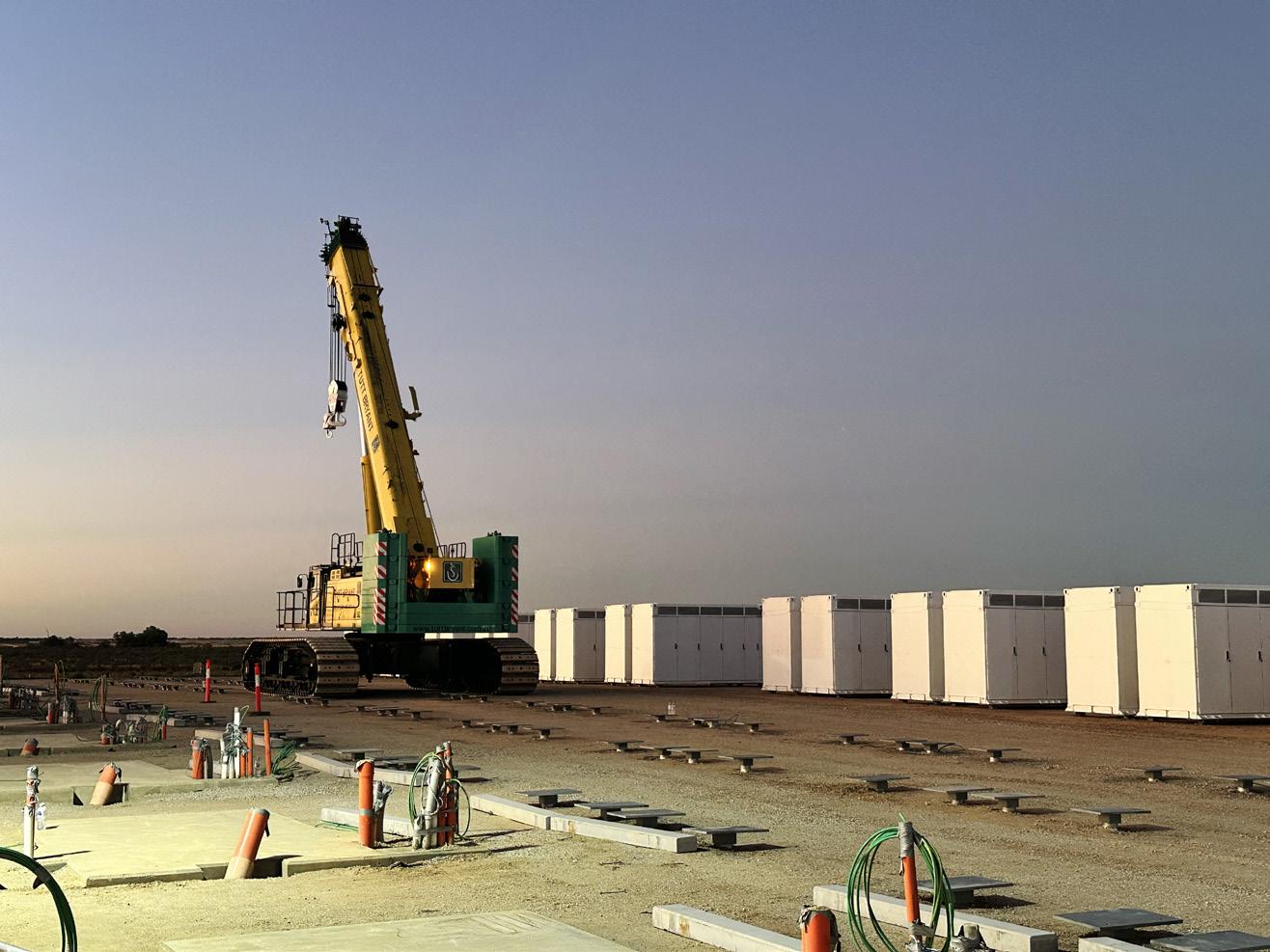
worked side-by-side to ensure the deadline was met.
Solidity streamlined its manufacturing and installation workflows, running a just-in-time fabrication model that made use of reliable supply.
“Calibre Steel was instrumental in this,” Houghton said. “The team understood our timeline constraints and delivered ahead of schedule, allowing us to keep momentum on site and meet critical milestones without delay.”
Dharmapala said Calibre Steel provides “a personalised service”.
“In addition to myself, there was also a head estimator and a transport and operations manager working in line for the project,” she said.
Dharmapala believes Calibre Steel’s internal resources are the company’s secret weapon to meeting deadlines and overcoming project challenges.
“We all work together and prioritise,” she said. “Whether it’s expediting logistics, updating grade requirements or accommodating engineering challenges, we worked very closely with the Solidity team to ensure the project maintained momentum.”
Houghton shared a similar sentiment.
Once production was complete, Solidity utilised its own freightliner and semi-trucks to transport the piles to the project site, covering a distance of 450km without any transportation delays.
On-site, Solidity powered ahead to complete the installation with high precision and efficiency, installing 45–50 piles per day. With the help of Calibre Steel, Solidity delivered the foundation works on time, within budget and with zero safety incidents throughout the installation process.
“From the outset, Calibre Steel was responsive, solutions-focused and proactive in keeping production and logistics aligned with our schedule,” Houghton said. “Their flexibility and professionalism helped us navigate supply challenges without compromising on quality.”
With its strength and versatility, steel will continue to play a pivotal role in the energy transition.
Calibre Steel’s work with Solidity to deliver the Limondale BESS highlights this importance, demonstrating the significance of strong partnerships in the delivery of critical energy infrastructure and supporting sovereign capability.
With renewable projects growing in scale and complexity, the demand for high-quality, reliable steel is only going to increase. “It’s never been more important to work with a trusted supplier, like Calibre Steel,” Dharmapala said. “You need to partner with a company that has the capabilities to work in the renewable energy space.
“At Calibre Steel, we do so much more than just delivering steel. Our team takes the time to understand your project timelines, project objectives and technical requirements, ensuring reliable support and highperformance outcomes.
“From quality steel plate to dependable service throughout the project lifecycle, we’re here to help you succeed.”
For more information, visit calibresteel.com.au and solidity.com.au
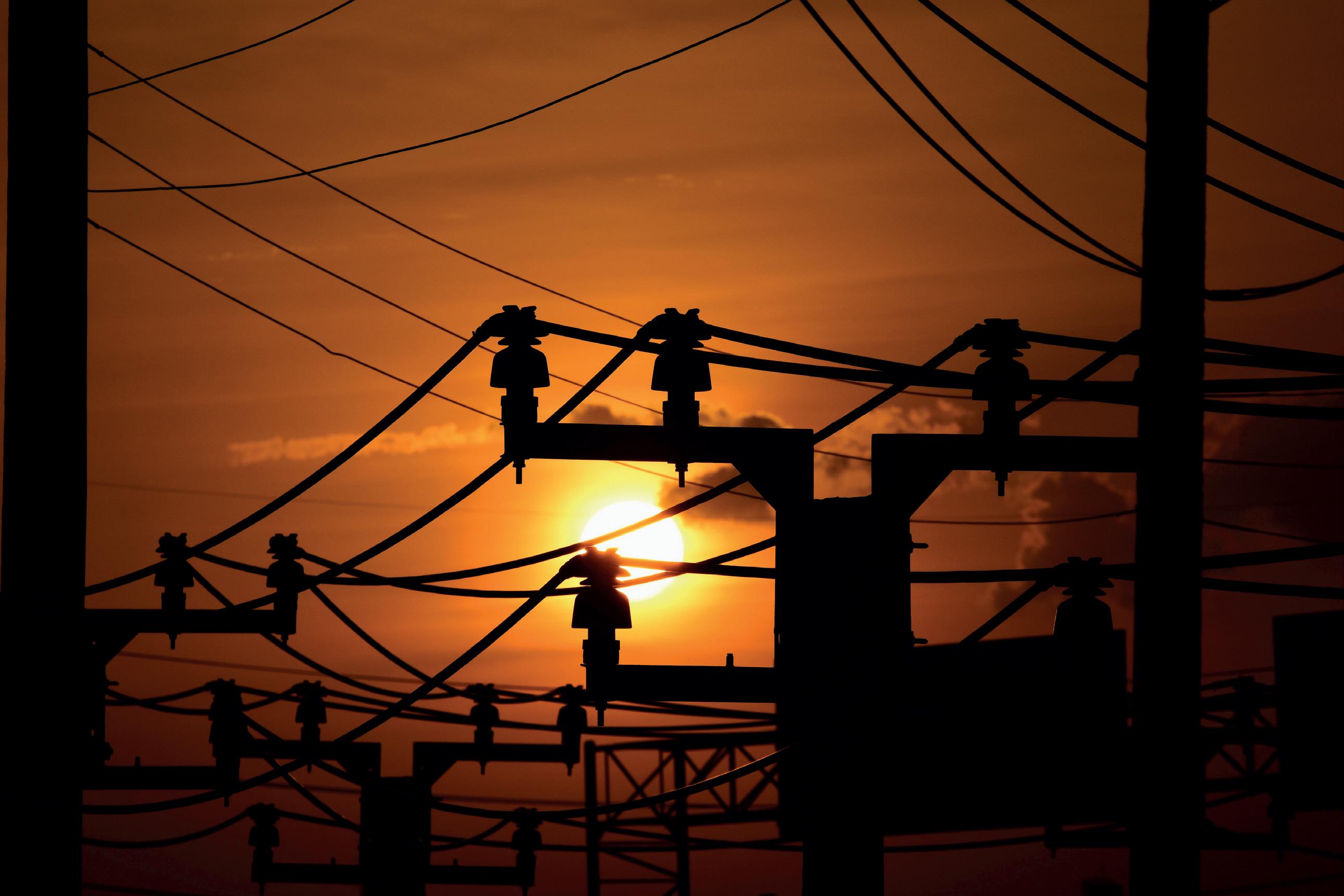
As Australia’s energy system scales up for a net zero future, Autodesk shares key strategies to streamline the sector’s digital transformation.
he transition to renewable energy is well underway, with significant investments being made to scale and renew existing infrastructure.
Energy providers must constantly balance the short-term pressures of network reliability with the longerterm imperative to build capacity for future demand, while also maintaining compliance and grappling with a skills shortage.
Efficiently modernising infrastructure is critical to ensuring reliability for today and building resilience for tomorrow. However, managing multiple large-scale and highly complex capital projects can be slowed by siloed teams and spiralling costs.
Implementing a digital strategy can go a long way in reducing these pressures, helping to minimise inefficiencies, increase project predictability and attract a new generation of skilled and sustainably driven talent.
To drive innovation and long-term resilience, adopting a digital-first approach is essential.
Digitising enables effective collaboration across the organisation and more control over costs and timelines, and provides the data needed for asset optimisation. This ultimately leads to greater operational efficiency and improved talent acquisition and retention.
Focusing on an asset’s entire lifecycle – from creation to operation – and ensuring new projects are digital from day one is key.
Autodesk suggests three strategies to digitally transform energy infrastructure.
A digital approach to asset ideation and creation
The design, engineering and production of assets, such as substations and transformers, can be enhanced with digital design and collaboration tools. This strategy aims to optimise infrastructure projects, innovate greener solutions and improve supply chain management and agility.
Components and systems can be re-engineered at the design stage to minimise environmental impact.
For example, when given specific parameters and desired outcomes, generative design tools can help engineers explore designs that use more sustainable raw materials and minimise waste. Similarly, simulation in a virtual environment allows design teams to optimise products without the waste of physical prototypes.
Streamline capital projects with digital project delivery
Another strategy is taking a digital approach to all capital projects to help optimise costs and schedules.
Ensuring new projects are planned, engineered and delivered digitally from day one provides the data needed to maximise infrastructure performance once operational.
The ability to control project data that typically sits in silos across multiple delivery partners, for example, gives greater visibility over the entire project, facilitating accountability throughout the ecosystem of delivery partners.
A comprehensive digital platform integrates all aspects of the project lifecycle, allowing stakeholders to work in parallel and exchange the right
data at the right time. It also provides valuable insights, with historical data offering an opportunity to identify underlying patterns behind previous successes and failures.
Leverage technology ecosystems for digitised asset operation and maintenance
Optimising the health and performance of assets begins with making use of technology ecosystems to capture and utilise data across all stages of asset management.
Implementing solutions like digital twins, real-time monitoring systems, and internet of things (IoT) sensors creates a holistic, data-driven view of assets. A dynamic digital model provides crucial insights into asset health, usage patterns and potential risks, enabling proactive asset management.
In addition, integrating real-time data with digital models offers predictive capabilities for timely maintenance and rapid response to emerging issues.
Incorporating digitisation into processes helps generate the data to understand what is happening across energy infrastructure, from design and engineering to project delivery and ongoing operation and maintenance.
This approach mitigates compliance risks, meets increasing customer demand and supports the journey to net zero.
As Australia charges ahead with its energy transformation, Autodesk is helping the industry scale its infrastructure and take control of the entire asset lifecycle.
For more information, visit autodesk.com.au


Data is the key to unlock greener, leaner operations that improve profitability and build resilience to fluctuating market forces.
Boost collaboration across the whole project lifecycle with connected data, workflows and teams.
Make better project decisions with real-time access to data and predictive analytics.
Improve operational efficiency while delivering more efficient, agile and sustainable projects.
Accelerate digital transformation to improve productivity and efficiency.

Get started today


boards.autodesk.com/anz-utilities
In an industry increasingly defined by scale, speed and expectations, Genus is rising to the challenge and ripping up the traditional playbook in the process.
Australia’s energy transition isn’t just about renewable technologies and major infrastructure – it’s about new ways of thinking.
The scale of what’s ahead is enormous. Not just in terms of megawatts and gigawatts, but also in the way projects are designed and delivered.
Genus has emerged as a bold and agile challenger, proving that local smarts, values and cutting-edge thinking can outpace even the biggest players in the game.
Energy sat down with Genus founder and Managing Director, David Riches, to learn more about the company’s rapid rise, its unique approach to energy infrastructure, and how it represents a new breed for the modern energy industry.
How is Genus positioning itself to meet the needs of Australia’s transforming energy system?
There’s no doubt the energy landscape is shifting at speed. We’re looking at a future that demands scale, flexibility and smart thinking. The grid is becoming more complex, not less, and the projects that support it need to move faster, with fewer risks and better outcomes. That’s where Genus steps in.
We’ve built Genus from the ground up to be a modern operator, unburdened by legacy systems, agile in our delivery model, and deeply connected to the evolving needs of our clients. Whether it’s transmission, distribution or renewables, we’re at the frontline of building the infrastructure that’s going to power Australia’s future.
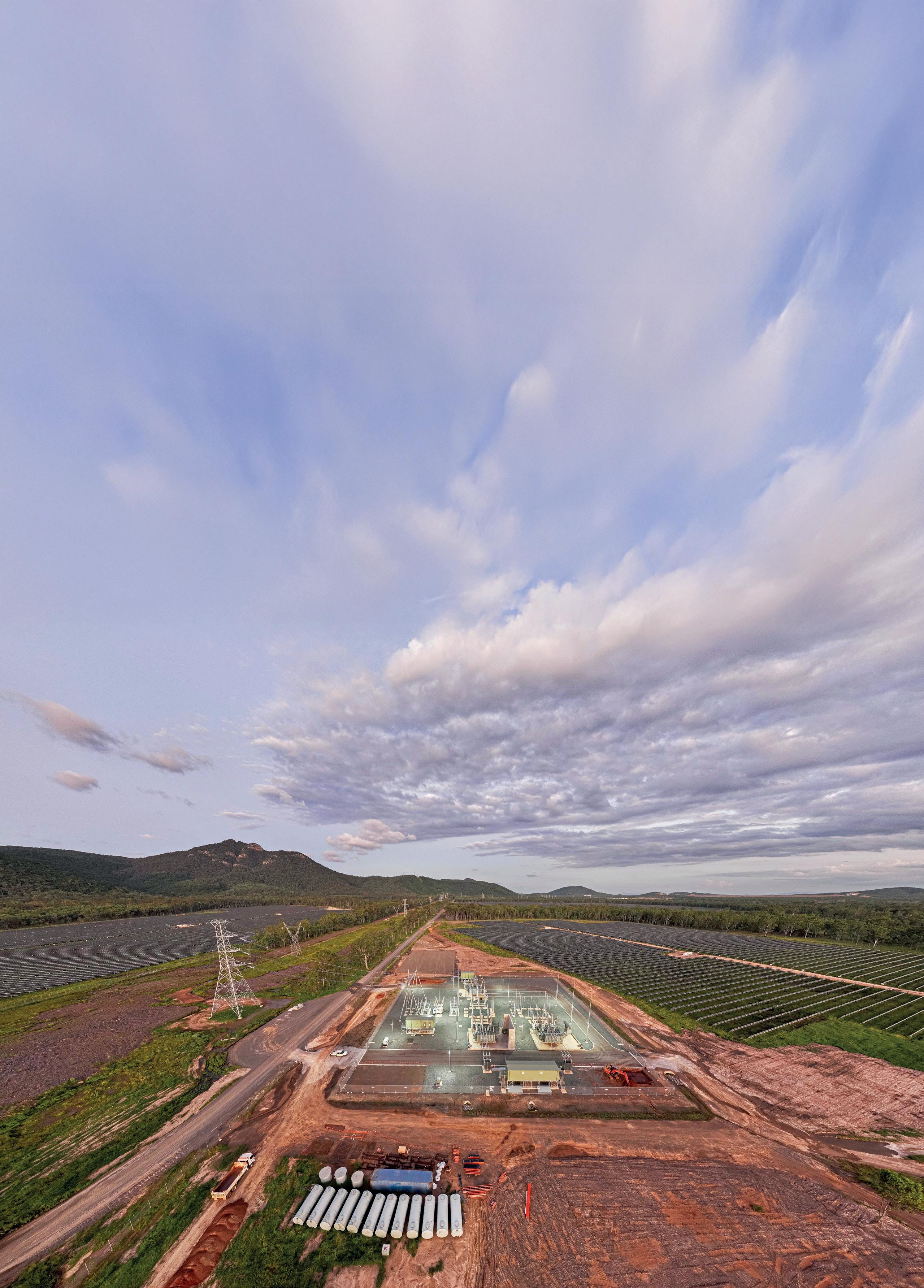
What’s driving the rapid growth
Genus has seen in recent years?
Honestly, it’s a mix of staying true to our values and refusing to do things the way they’ve always been done.
We’re a proudly Australian business that started with a loan I had to pay back in 30 days. From that pressure came purpose. We’re now a $600 million plus business with a $1.5 billion order book, but we still operate with that hungry, hands-on attitude.
We listen, we adapt and we deliver. Our clients know we’re here to solve problems, not create them.
What challenges are you focused on solving?
The industry’s biggest challenge right now is delivery risk.
Projects are getting bigger, timelines are getting tighter, and expectations
are sky high. But legacy players are slow; they’re tied up in red tape and rigid processes.
That’s where we’re different. We de-risk projects by being present, accountable and agile. Our structure is flat, our leadership is hands-on, and our teams are empowered to make decisions.
That’s what clients are crying out for: partners who don’t just promise results, but deliver them.
How does Genus’ approach to project delivery differ?
It’s about alignment and ownership. We work shoulder-to-shoulder with clients and regulators. We’re flexible in our methods but disciplined in our execution.
And because we bring everything under one roof – design, construction, commissioning, and maintenance, and directly employ more than 1400 people – we can guarantee quality, consistency and speed at scale.
How does your brand blend old-school Aussie values with a modern business model?
We’re driven by mateship, integrity and a no-nonsense work ethic, but we combine that with cutting-edge systems, digital tools and a future-focused mindset. It’s not either/or, it’s both.
We’ve built a culture where people care deeply about the job and about each other. That’s what allows us to innovate without losing our grounding.

your business. How do you foster that internally and with clients?
We work as one team. Internally, it’s about open lines of communication – no silos and no egos.
Externally, we see clients as partners. We bring them into the process early, we’re transparent about risks, and we stay engaged from start to finish. That deep collaboration is what de-risks the job and leads to better outcomes across the board.
What standout projects show Genus’ capability?
We’ve been fortunate to work on some truly nation-shaping projects, and they each say something different about what Genus can do.
The HumeLink East Transmission Project is a perfect example. It’s a critical link in Australia’s renewable future, designed to connect solar and wind generation in the Snowy Mountains region with major demand centres.
In Queensland, we’re proud to have completed the Aldoga Solar Farm substation project, a cornerstone in the state’s Central Queensland Renewable Energy Zone.
And back west, in Kwinana, we’ve been delivering key works on KBESS – the region’s battery energy storage infrastructure, enabling more renewables to flow into the grid.
These projects aren’t just big –they’re symbolic. They show that we’re being trusted to take on the jobs that really matter for the future of energy in this country. But to us, it’s not just about these headline projects. We take the same pride in a remote outback job as we do in a tier one city build.
What’s next for Genus?
What’s your long-term vision for the company?
Our vision is to be the contractor of choice – the name clients trust to get the job done, no matter how complex. But, more than that, we want to help build an energy system that works for future generations. That will be my rocking chair moment.
For more information, visit genus.com.au

Artificial intelligence offers a unique opportunity to drive greater efficiency and growth – but in a rapidly evolving landscape, how can companies navigate the complexity and unlock real value?

No longer a fringe concept, artificial intelligence (AI) has evolved from a futuristic idea to an essential modern technology for businesses and individuals alike.
According to Alex Shuttleworth, Head of Data and Analytics, at Brennan, Australia’s largest independently-owned and operated systems integrator, rapid implementation signifies the growing potential of AI as a business tool.
“As adoption continues to grow, so does the extension of AI,” he said.
This is also true for the energy sector, with different applications in both distribution and generation that range from enhancing asset maintenance and streamlining workforce management to optimising spot pricing strategies.
However, the challenge for companies in the energy industry
is not just implementing AI, but understanding how it can be utilised to create the most meaningful impact.
One of the most effective ways to implement AI is through microinnovation – starting small, rapidly ideating, prototyping and testing use cases to prove value quickly.
“Micro-innovations are just small increments on what has already been done,” Shuttleworth said.
One example is using AI to improve data maturity.
“AI makes a difference because it puts different data points together in ways you may not have considered,” Shuttleworth said.
The more information, the better. This is particularly true in the energy industry, where real-time data can enhance decision-making and enable
smarter grid management. But collating all this information can be a challenge.
“That’s one of the innovations we’re seeing through AI – bringing a range of data from different sources together into one learning tool,” Shuttleworth said.
The potential applications are just about limitless – from chatbots to improved customer service to predictive maintenance and demand forecasting, AI micro-innovations can create measurable improvements across operations without the need for large-scale transformation.
Taking this approach allows utilities and energy companies to take that first step into the AI world, making small, targeted improvements that can lead to broader organisational change over time.

through the hype
Once the decision has been made to pursue AI solutions, energy companies are often forced to wade through a confusing landscape of constant change, competing technologies and shifting priorities. With the continuous release of new tools and features, many organisations can be hesitant to commit, concerned their chosen solution could become obsolete before they see any benefit.
Indeed, a 2024 survey from ADAPT revealed that 77 per cent of Chief Financial Officer respondents deemed their organisations as ineffective at generating value from AI.
Concerns around privacy, compliance and accuracy only add to the uncertainty. While it’s essential to be aware of the risks, it’s equally important to not let fear stall progress. That’s why finding the right partner is critical – it
The secret to unlocking the benefits of AI in the energy sector lies in micro-innovation. Image: Andrey Popov/stock.adobe.com
makes navigating the complexity simpler and helps businesses move forward with confidence.
Shuttleworth said Brennan helps companies take the complexity out of AI in two important ways.
The first is the company’s approach to identifying use cases.
While there’s no shortage of opportunities for AI, to deliver value they must be aligned with the business strategy and have clear outcomes and measurable metrics.
To achieve this balance, Brennan rapidly ideates and validates the use cases, mapping each back to its intended value before distilling them into achievable projects that can be delivered within a short timeframe.
“That’s our key framework for reducing the complexity down to a bite-sized chunk and then driving it forward,” Shuttleworth said.
The second way Brennan removes complexity is via its suite of accelerators to activate AI machines in a range of environments, including Microsoft Copilot Studio and Microsoft Copilot Office 365.
This ensures that AI only accesses the specific information it needs, safeguarding sensitive business data and maintaining compliance with regulatory standards.
As an Australian-based company with close to three decades of experience in the IT sector, and a team of more than 50 data and AI specialists, Brennan is uniquely positioned to bridge the gap between AI’s potential and its real-world execution in the energy sector.
The company’s scalable and trusted platform supports experimentation and model management, bringing genuine insight and proven experience to clients wanting to implement AI solutions in their business.
“We’ve got that real-world implementation experience,” Shuttleworth said.
Because of this experience, Brennan understands that although technology plays a critical role in AI success, it’s equally important to empower the people who will be using the tools.
“We have two levels of training,” Shuttleworth explained.
The first focuses on building basic AI literacy, ensuring all employees have the skills and knowledge needed to make the most of AI technologies.
“We come back a little later after people have had time to use and understand the tools, and we train some of the champions up to an intermediate level so they can expand their capabilities even further,” Shuttleworth said.
“It’s not just the technology, but also that human side that we offer.”
More than just a technology provider, Brennan is a trusted partner to its customers in the energy industry, helping them cut through complexity, build confidence and achieve meaningful outcomes.
With a combination of technical excellence, industry knowledge and a people-first approach, Brennan is helping the energy sector harness the real power of AI – one micro-innovation at a time.
For more information, visit brennanit.com.au
As rooftop solar and battery installation accelerate across the country, GloBird Energy is evolving its offerings to meet the demands of a changing grid.
With some of the best solar resources in the world, it’s no surprise that Australia takes the cake for the highest solar photovoltaic installations per capita. The solar boom over the last 15 years has transformed how energy is generated, but not necessarily how it’s used.
As millions of homes and businesses pump power into the grid from their rooftop solar systems during sunny midday hours, grid demand dips. In the evening, solar output reduces as the sun sets, but households ramp up their energy use, causing demand to surge.
This mismatch in supply and demand, known as the duck curve, is a significant challenge for stability and efficiency in the electricity network. One way to ease pressure on the grid is through batteries, storing solar when it’s in high supply and then exporting it to the grid when it’s needed most.
GloBird Energy developed its ZEROHERO energy plan to help customers align their household solar and battery capacity with broader network needs and reward them in the process.
ZEROHERO integrates individual home batteries into a virtual power plant (VPP), offering incentives for
The energy retailer said the plan benefits solar battery customers in three key ways.
Free power between 11.00am –2.00pm, enabling households to charge their battery directly from the grid – even when solar generation is low due to poor weather.
Customers can earn $1 every day if they draw less than 0.03 kilowatt hours (kWh) per day from the grid during the evening peak, helping to offset their daily supply charge and allowing them to earn up to $365 per year.
Higher feed-in tariffs apply to the first 10kWh of energy exported to the grid during the evening peak each day –rewarding customers who discharge their battery with increased returns for their energy. These are designed to help customers unlock the full potential of their solar battery system, rewarding them for storing solar when it’s abundant, reducing energy use during peak times and exporting it during high-demand periods.
GloBird Energy said ZEROHERO
for customers; it’s about creating a collective energy solution. To do this, the company consolidates the energy of those who join the plan to create a VPP. As more households join, their collective energy becomes more valuable, and it can be monitored, managed and dispatched with greater precision and to greater effect.
GloBird believes effective coordination always delivers better results than individuals acting on their own. The same principle applies for the VPP.
By pooling it all together, GloBird Energy achieves what it calls a critical mass of valuable energy, enabling it to export the critical mass to the grid during peak demand, when prices are higher.
The result is a win for all involved. GloBird Energy benefits from the flexibility and efficiency of a solar battery network, while customers can enjoy lower electricity bills and a higher return on solar and storage investments. The grid benefits from a better-balanced supply.
The duck curve won’t disappear overnight, but with solutions like GloBird Energy’s ZEROHERO, it can be ironed out one rooftop at a time.
For more information, visit
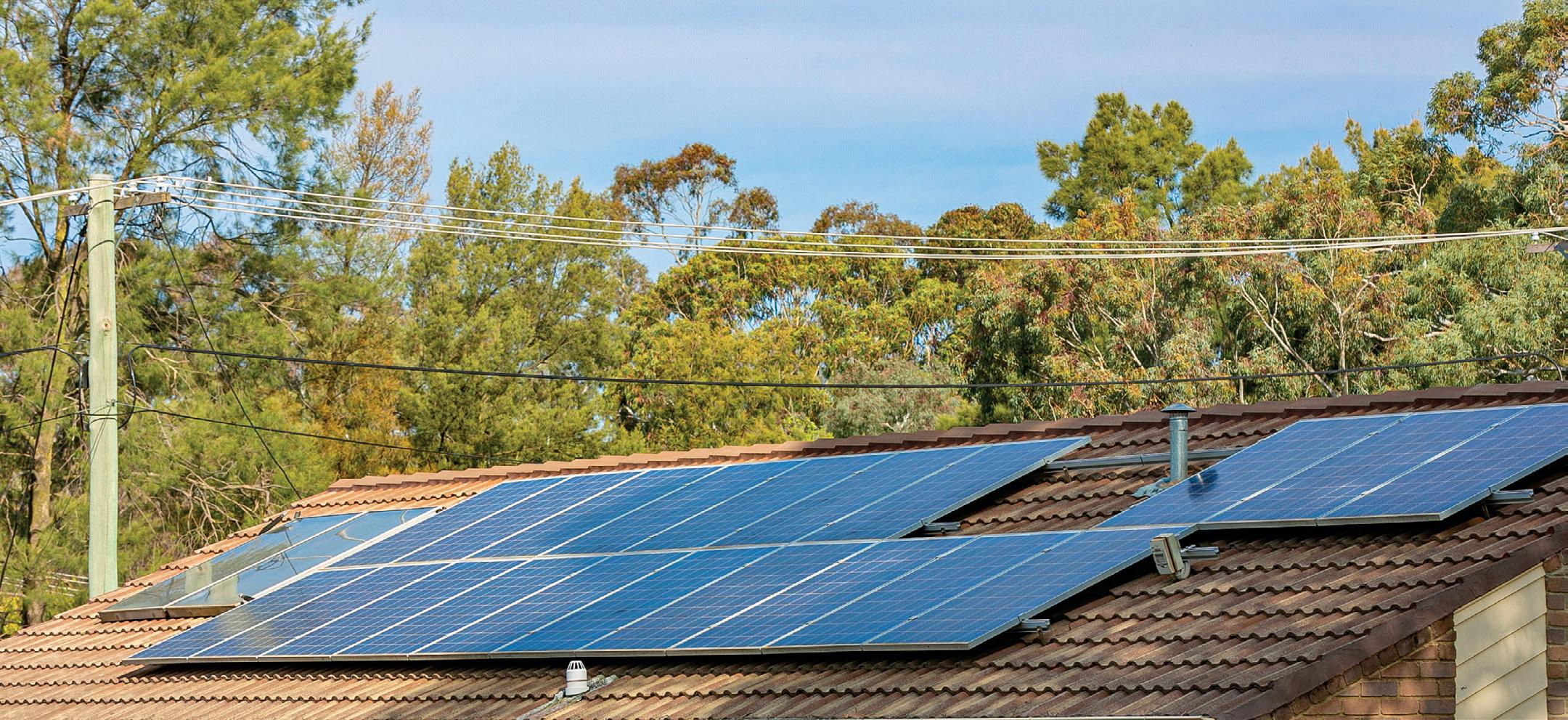
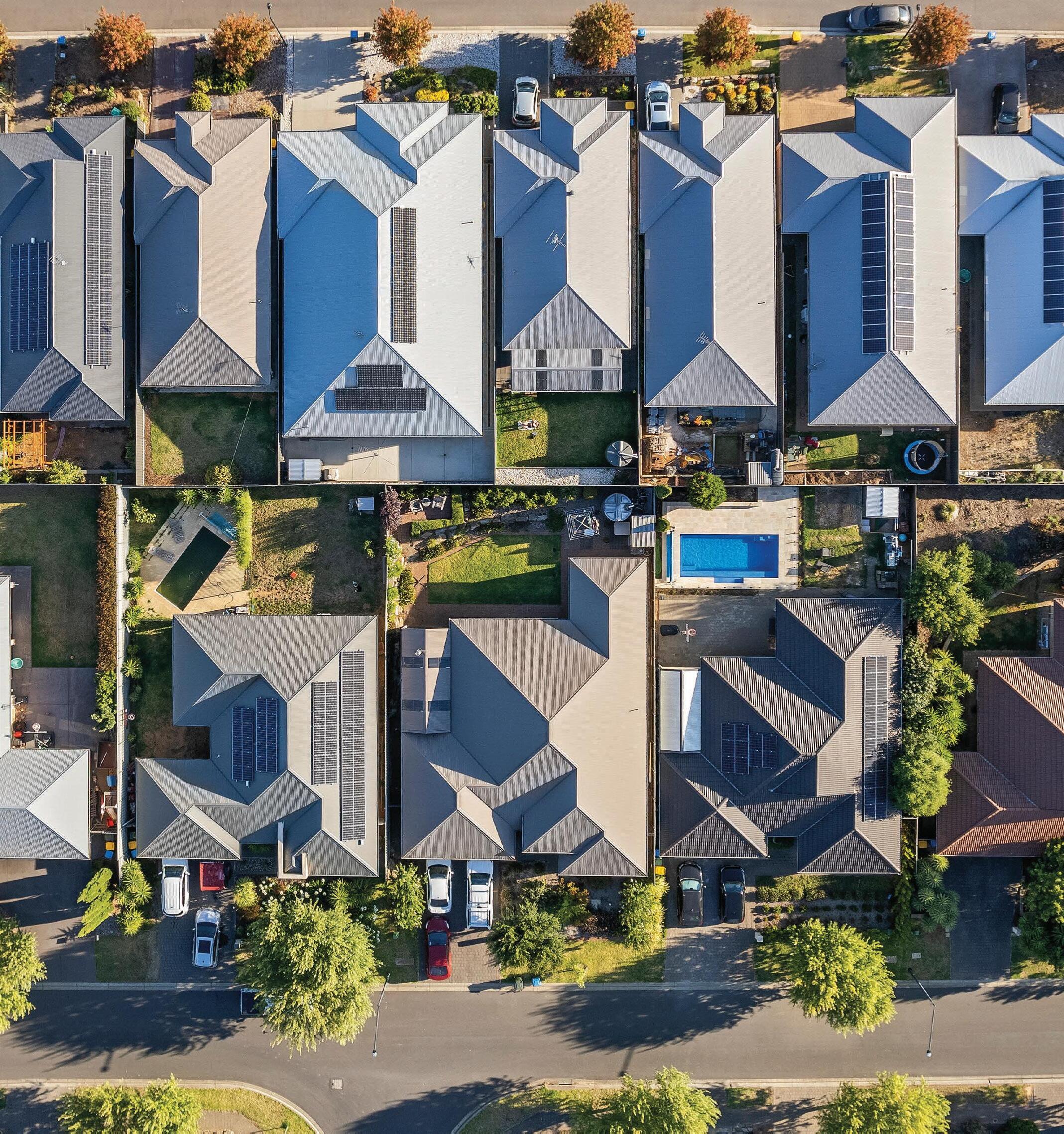

By Energy Consumers Australia CEO, Dr Brendan French
With the path to electrification now clear, proactive planning will be key to ensuring consumers have the tools they need to make the move away from gas.
As the energy transformation continues, many organisations, including Energy Consumers Australia (ECA), have called for supports to help consumers electrify and realise the projected cost-savings this could mean for them.
Seeing these supports come to fruition in the next term of government will be crucial for households and small businesses.
In any transition, you are embracing something new and exciting – in this case, electrification – but you are also leaving something behind. And for most small businesses and retail customers, that’s the gas network. Failing to plan and manage that transition off gas effectively risks the social licence for the whole process.
Our 2023 ‘Stepping up’ report, which incorporated detailed modelling from CSIRO, found that without interventions to prevent consumers propping up the gas network, network prices alone on household gas bills could more than quadruple to $1170 in 2050.
This is because as households leave the network, the costs of maintaining and operating it will be shared by a decreasing pool of customers. These are likely to be those least able to electrify, such as low-income households or renters.
So how do we plan for responsibly winding down the gas network while ensuring those left using gas for longer do not face unaffordable bills?
ECA recently submitted four proposed rule changes to the Australian Energy Market Commission (AEMC) to adjust the National Gas Rules to do just that, and to help plan the future gas network with consumers’ needs in mind.
The first requires those connecting to the gas network for the first time to pay the full upfront connection cost. It might sound strange that as consumer advocates, we’re arguing in favour of this process, as subsidising developers to connect new properties to the gas network reduces the cost to the consumer. However, this subsidy is eventually paid off by all customers.
We find that, in practice, this often means that new property owners end up with an increasingly uneconomic gas connection, while the rest of the customer base has paid for an asset that may strand.
Our proposal means consumers would see the real cost of a gas connection and could make the best decision for their circumstances which, in most cases, would be to electrify.
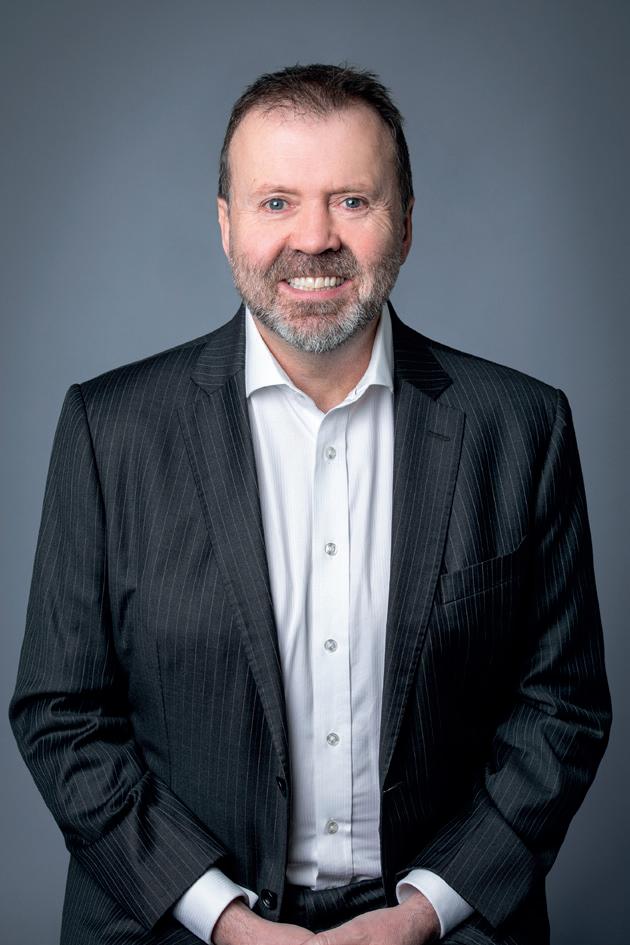
ECA’s second proposal would amend the criteria for approving new capital expenditure, helping ensure any new spending is necessary in the context of a declining network.
Our report with Dynamic Analysis, ‘Turning down the gas’, found that one of the most impactful things we can do now to minimise the risks posed by stranded assets is to stop unnecessary spending on the gas network.
The third proposed rule change would require gas distribution networks to make long-term plans about their network, including identifying areas where many disconnections are happening now and are likely to happen in the future, and where new spending might be required longer-term. Such information can help governments, community leaders and electricity networks identify opportunities for ‘strategic decommissioning’ of the gas network.
The final rule change would address the process of accelerated depreciation, which allows distribution networks to increase costs to consumers for the gas distribution network to reduce the losses network investors may face in the future. Our proposal would mean stronger conditions around networks’ ability to accelerate the depreciation of stranded assets, helping to ensure consumers aren’t picking up the tab to sustain these assets in a declining network.
These rule changes, developed with comprehensive engagement with the AEMC, Australian Energy Market Operator (AEMO), the Australian Energy Regulator (AER), federal and jurisdictional departments, industry, consumer advocates, and others, will
require gas distribution networks to proactively plan for the future and make decisions that will minimise further non-critical investment.
They also aim to increase the tools and regulation that crucial stakeholders – including regulators, councils, governments and networks – have available to start actively planning for the transition away from gas.
ECA believes these are no-regrets proposals that will ensure a fairer, more affordable transition for Australians. If you do too, I’m asking for your support to back them in.
We have recently seen positive steps taken by the ACT and Victorian governments, which have implemented policies to support consumers to access the benefits of electrification.
Our research shows that these clear policy signals are resulting in a shift in consumer intentions; in December 2024, two in three homeowner households in the ACT told us they were planning to get off gas in the next 10 years. This shows that when consumers receive clear signals that the transition involves leaving gas behind, they start to make plans to do so.
But further work is needed to ensure all consumers can access the benefits. We believe our gas rule changes will go some way in helping to minimise costs to consumers and ensure the transition is well-planned and well-managed. However, federal, state and territory governments also have a clear role in planning and funding this future.
A household’s ability to transition off gas in an orderly manner should depend on its postcode. Most jurisdictions still currently allow consumers to connect to the gas network, which could put them at risk of rising gas prices and add to the overall cost of the network.
All state governments have a role in limiting new gas connections and ensuring Australia is working towards a future that supports electrification. But we also need fully articulated national plans for this transition, and a definitively communicated narrative that considers how to transition off the gas network in a fair and orderly way.
We believe this is a real chance for the Federal Government to provide clear guidance on what this looks like.
The energy sector has a unique and exciting opportunity to be bold on behalf of all Australians now to ensure that the net zero transition is fair for households and small businesses –and that’s what we’re advocating for.
Will you join us?
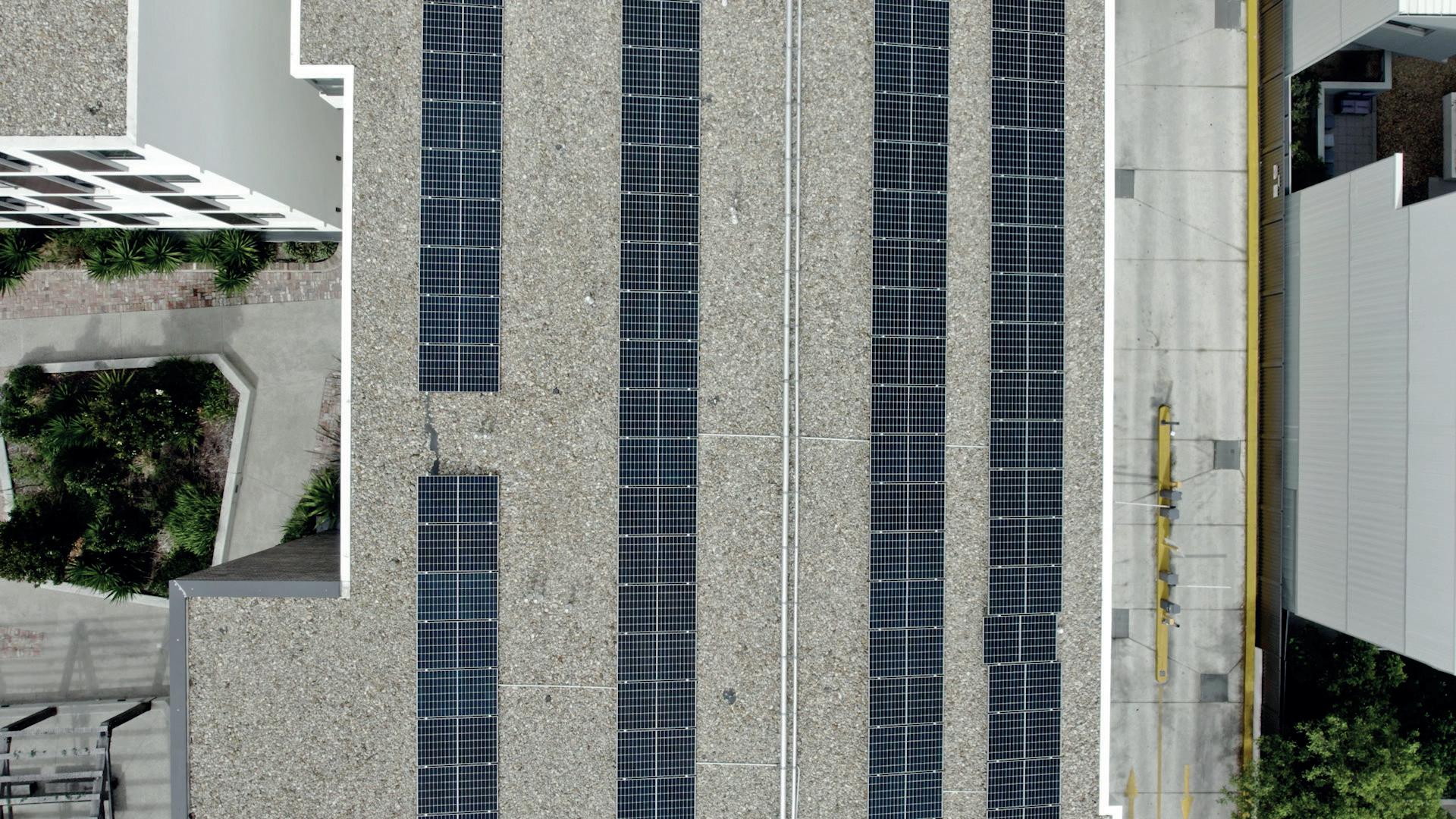
Rooftop solar is booming, but how can the industry ensure apartments dwellers are not being left behind?
Australia has long been a global leader in rooftop solar adoption, with 30 per cent of the nation’s homeowners now harnessing the power of the sun.
However, while millions of Australians enjoy the financial and environmental benefits of renewable energy, a significant portion of the population has been left out: people living in apartment buildings.
With approximately 2.5 million
Australians calling apartments home, the disparity is striking – less than three per cent of apartment owners have access to rooftop solar. Standalone homes have led the charge, enjoying reduced energy bills and a smaller carbon footprint.
But it doesn’t have to be that way.
Research from the University of New South Wales estimates that up to 3.3GW of solar photovoltaic (PV) could be installed on apartment
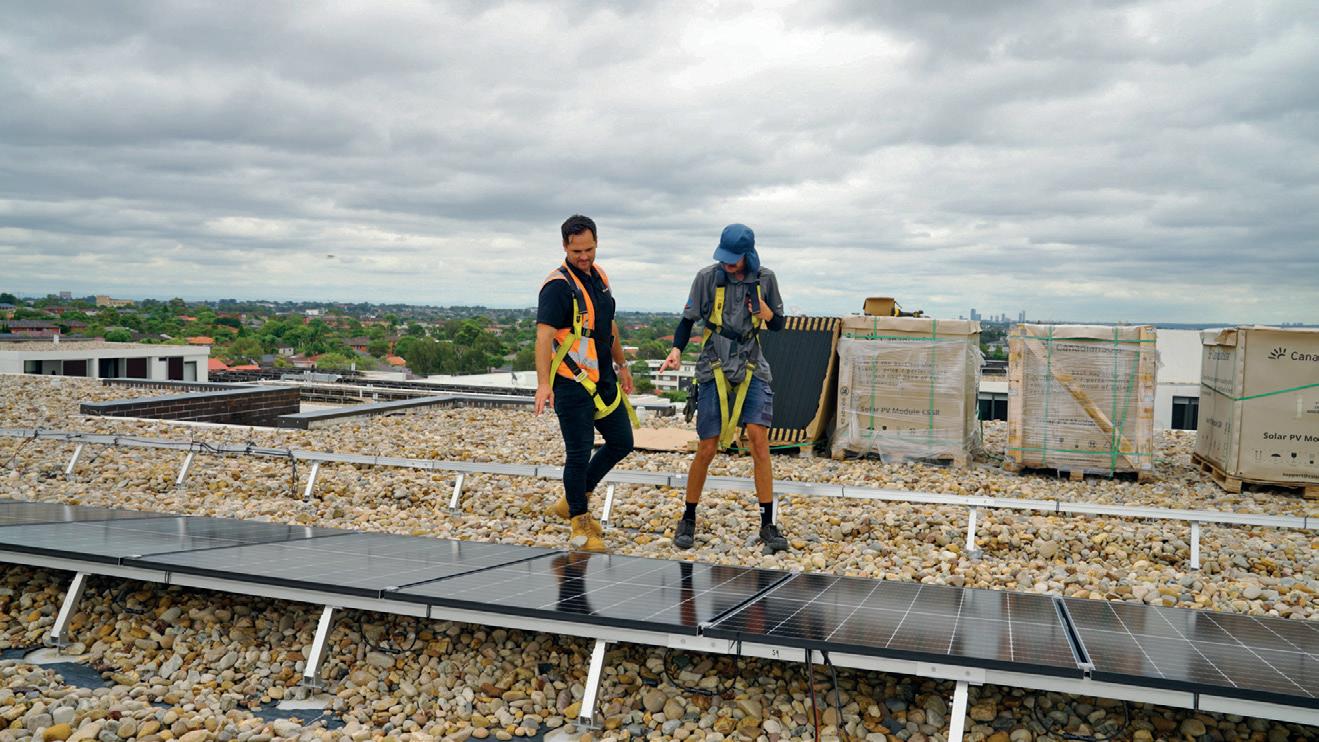
rooftops across the country, providing renewable energy access to the 16 per cent of Australians living in strata schemes.
Why do apartments lag behind?
The road to clean energy adoption for apartment buildings has not been an easy one, and there are additional challenges to installing rooftop solar on multi-tenant buildings. Shared ownership of buildings means such a system often requires sign-off from multiple parties, and there can be conflicting opinions on how the asset should be installed, operated and maintained.
In addition, installing and maintaining large-scale distributed energy resource (DER) solutions such as solar panels, battery storage and electric vehicle (EV) chargers requires significant upfront investment, technical expertise and ongoing maintenance.
Energy Locals CEO, Adrian Merrick, said developers, owners’ corporations and strata committees have historically struggled with the cost required, as well as the technical
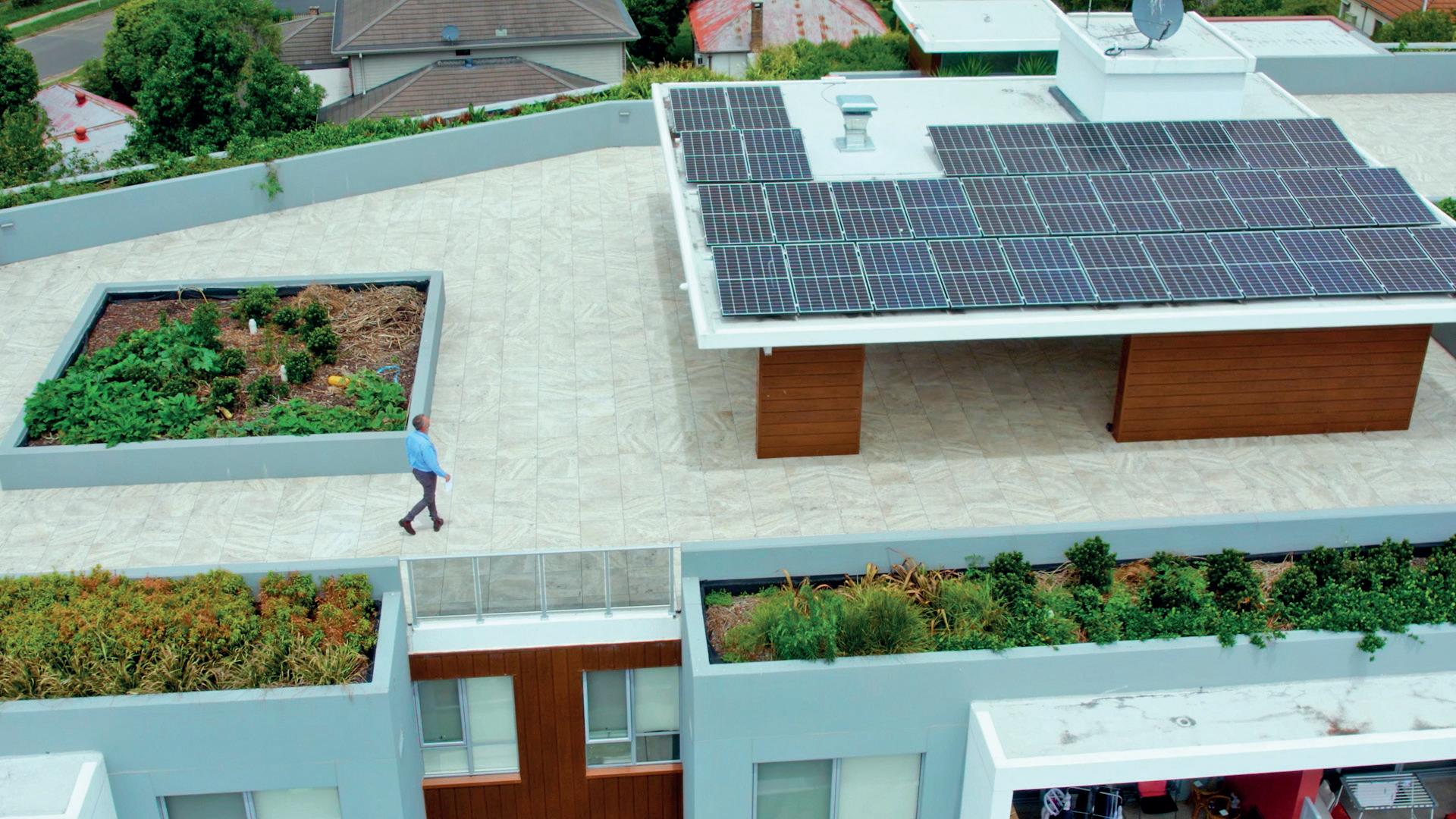
The challenges are especially pronounced in high-rise apartment buildings, where up to 60 per cent of energy consumption comes from common areas and shared services such as elevators, lighting and airconditioning, with approximately 25 per cent of strata levies spent on energy bills alone, according to a study from NABERS (National Australian Built Environment Rating System).
“We’ve found that most decisionmakers don’t need convincing of the environmental benefits – they already know sustainability is becoming a priority for buyers and renters,” Merrick said.
“What they want to avoid are the additional costs and hassles.”
There are now a range of options available to help overcome these barriers and allow apartment residents to access renewable technologies.
Government initiatives such as the Solar for Apartments pilot program in Victoria and the Federal Government’s Community Solar Banks program aim to reduce upfront costs and encourage uptake in multi-tenant buildings.
The Clean Energy Finance Corporation (CEFC) has also signed a memorandum of understanding with Lannock Strata Finance to develop a green strata loan product that would make it cheaper and easier for owners corporations to install rooftop solar.
However, these options still require often-significant upfront investment for strata committees, and other models are emerging to help close the gap.
Energy Locals provides one such model with an integrated solution
renewable energy solutions to which apartment buildings may not otherwise have access, taking on the upfront costs of the infrastructure as well as ongoing maintenance and management. By acting as the asset owner and operator, Energy Locals aims to remove the traditional financial and administrative burdens on owners’ corporations that restrict tenants from accessing the benefits of rooftop solar. The model includes a number of benefits:
• Zero upfront cost – Energy Locals covers the costs, from funding to installation and maintenance
• Ongoing management – as the asset owner and operator, it’s in Energy Locals’ best interest to ensure optimal performance
• Energy prices – access to the wholesale market enables the retailer to provide competitive energy prices to residents
• Seamless project management – every project is overseen by a dedicated project manager to ensure a smooth and hassle-free process Energy Locals can help developers when marketing their properties, with clean energy infrastructure increasingly sought by buyers and renters.
“Additionally, owners corporations and residents enjoy competitive rates and the satisfaction of contributing to a sustainable future,” Merrick said.
To meet the growing demand for sustainability, Energy Locals offers a suite of clean energy technologies tailored to apartment living: Solar PV Solar panels are at the heart of the
grid and significantly lower energy costs
Excess solar energy generated during the day can be stored in batteries for use at night or during peak demand periods. This technology optimises energy consumption, provides back-up power during blackouts and supports load management, creating a more resilient energy system.
EV chargers
As EV adoption accelerates, so too does the need for accessible charging infrastructure. Providing EV chargers not only meets regulations but helps to future-proof apartment buildings, enhancing their appeal to eco-conscious buyers and renters.
Electric hot water
Switching to electric hot water systems eliminates the need for gas, reducing emissions and energy costs. This is particularly impactful for buildings looking to phase out fossil fuels.
Energy Locals’ solutions are already making a difference. The energy retailer has implemented clean energy systems at more than 135 sites nationwide, demonstrating the scalability and effectiveness of its model.
In 2024 alone, Energy Locals’ solar installations generated more than 5.8GWh of renewable energy.
This output is equivalent to powering the average Australian household for 420 years; streaming Netflix continuously for 42,000 years; or fully charging a Tesla Model 346,000 times (enough to drive 6000 laps around Australia).
But the benefits extend beyond the environmental. These installations have also saved residents and owners corporations tens of thousands of
dollars in energy costs, making clean energy a win–win solution.

The clean energy revolution for apartment buildings is gaining momentum, thanks in part to a $25 million investment by the CEFC, supported by Palisade Impact.
CEFC CEO, Ian Learmonth, said the funding has transformative potential for apartment buildings in Australia.
“This investment will help put more renewable energy into the hands of
community which has previously struggled to share in the benefits of renewable energy generation and storage, empowering them to lower their carbon emissions and energy use.”
CEFC Head of Impact Capital, Malcolm Thornton, said eliminating the barriers to renewable adoption makes it easier for multi-tenant buildings and retirement villages to enjoy the advantages of shared
renewable energy technologies, more green electricity can be delivered to hundreds of apartments and thousands of tenants who would not otherwise be able to participate fully in the energy transition,” he said.
“This is a great opportunity to speed up the deployment of renewable energy infrastructure at scale and power up renewables for more Australians.”
The case for renewable energy in apartment buildings, according to Energy Locals, has never
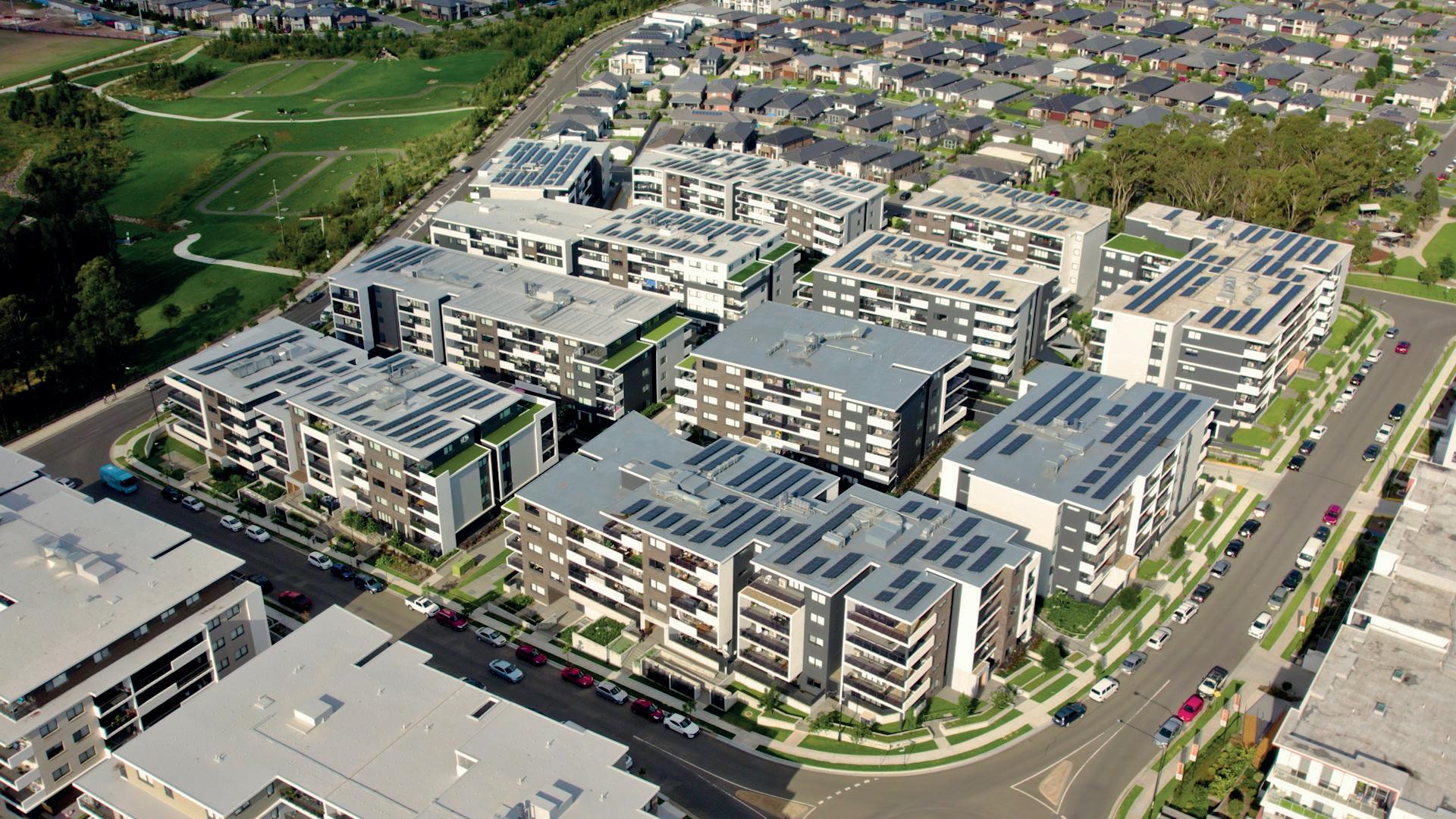
Beyond the clear financial and environmental benefits, there’s growing pressure from buyers, renters and governments to prioritise sustainability.
“Installing DER is no longer a consideration – it’s a must,” Merrick said.
“It’s what more Australians want and expect, so there’s really no excuse.”
By making clean energy accessible and affordable, Energy Locals is helping to close the gap between standalone homes and apartment buildings.
Energy Locals’ innovative approach helps to ensure that all Australians – regardless of where they live –can participate in the clean
For more information, visit energylocals.com.au/developments


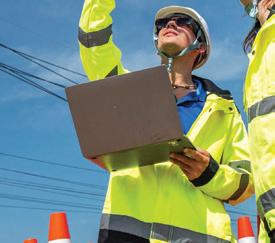

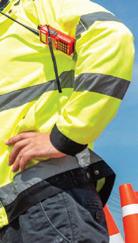









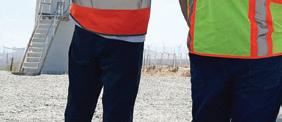
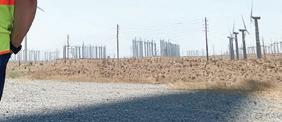









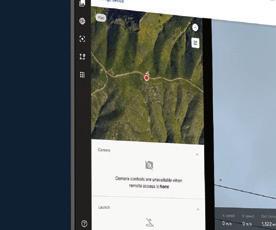





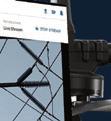
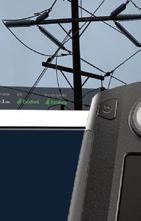
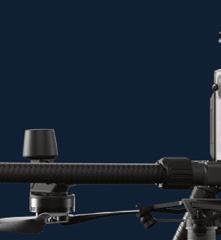







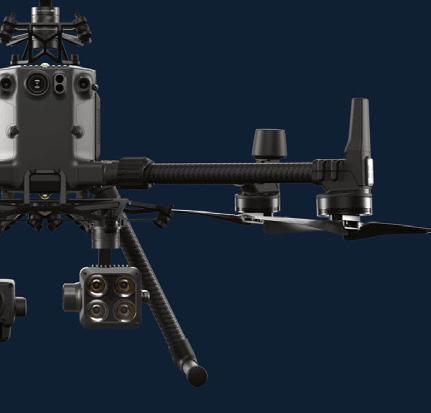

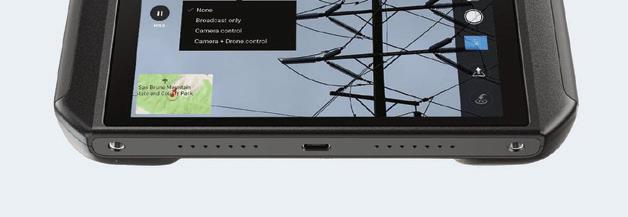
From
The Australian Energy Market Operator (AEMO) announced two changes to its executive leadership team, effective from late August.
AEMO Executive General Manager (EGM) System Design, Merryn York, will retire from her executive roles, with AEMO interim EGM Western Australia, Nicola Falcon, to step in, ensuring a smooth transition for the team and continuity in this critical role.
The market operator also welcomed Kirsten Rose, currently Deputy Chief Executive at CSIRO, who will join AEMO as EGM Western Australia and Strategy.
AEMO congratulated Falcon and Rose on their appointments and said it looks forward to the leadership and impact they will bring. It also thanked York for her significant contribution, leadership and dedication to AEMO and the energy sector over her career so far.
ACEREZ appointed Steve Masters as its new Chief Executive Officer (CEO) to deliver the Central-West Orana Renewable Energy Zone (REZ).
Following the resignation of outgoing ACEREZ CEO, Trevor Armstrong, Masters will take up the torch, leading
Image: Boykowit/stock.adobe.com
the joint venture between Endeavour Energy, Acciona and COBRA as it delivers the nation-critical project.
APA Group appointed Rob Evans as the company’s new Group Executive, Infrastructure Delivery to help the company play a leading role in Australia’s energy transition.
Evans will take the reins from Kevin Lester, who retires after almost four decades in the energy industry.
The Federal Government has appointed a new member and reappointed two existing members of the Australian Renewable Energy Agency (ARENA) Board.
Marianna O’Gorman has been re-appointed to the board and will assume the newly created position of Deputy Chair.
Stephen McIntosh has also been re-appointed as a board member, while Angela Karl joins the board for her first term.
After more than a decade at the helm, Clean Energy Council (CEC) Chief Executive, Kane Thornton, will step down from the role on 1 August.
Having dedicated more than a decade and a half to the CEC and to the broader sector, Thornton is expected to take a career break to spend time with family and friends and in the outdoors.
The Board of the CEC has commenced a national search for a new Chief Executive to lead the organisation into its next phase.
Shannon Hyde has been appointed CEO of ENGIE Australia and New Zealand (ANZ). He takes over from Rik De Buyserie, who departs Australia to take up the role of Country Manager for ENGIE North Africa.
ENGIE ANZ Chief Operating Officer for Generation, Graeme York, retired in May after more than 30 years in the energy industry.
The company will also farewell Chief Development Officer for Net Zero Energy Solutions, Anna Quillinan, who will leaving ENGIE after nearly six years.
Finally, ENGIE ANZ welcomed Frederik Baerts as the new Managing Director of Generation
To stay up to date, visit energymagazine.com.au

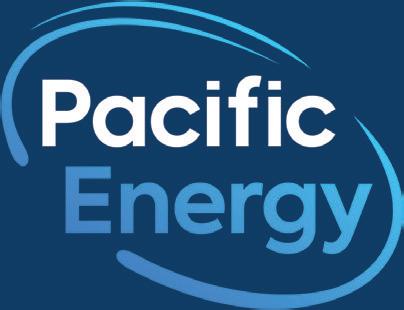
As leaders in sustainable distributed energy, we provide end-to-end solutions to our diverse clients Australia-wide. We manage design, construction, and operation of scalable energy assets ensuring optimal outcomes for our clients’ energy and decarbonisation goals.
Our in-house capability and experience
Hybrid systems | Wind | Solar | Gas | Stand alone power systems | Integrated battery storage | LNG storage | Green hydrogen | Hydrogen refuelling stations | Diesel | Hydroelectric


Battery Systems

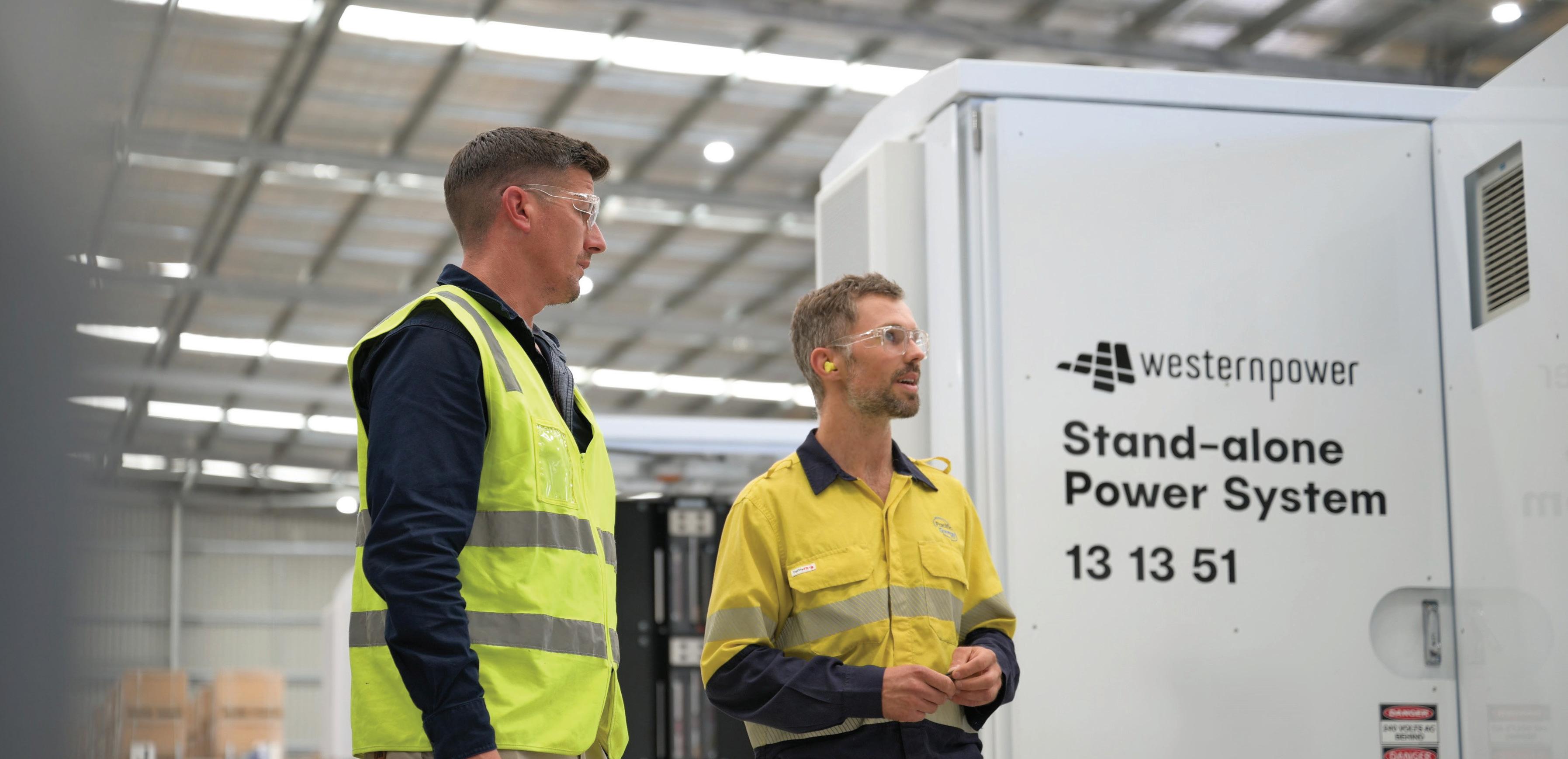
Pacific Energy is Australia’s only independent power provider with in-country manufacturing.













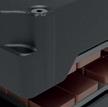




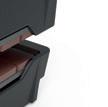






With over 40 years of pioneering excellence, Regal Rexnord has set the standard in delivering cutting-edge products to over 200,000 wind turbines worldwide. Our deep domain expertise empowers wind farms to achieve peak performance.
Trust Regal Rexnord for quick delivery of genuine spare parts for your up-tower power transmission and safety components. Our innovative tools, advanced brake pad formulations, and onsite eld service ensure you have the aftermarket solutions you need to keep your turbines spinning ef ciently.

Contact: info.ANZ@regalrexnord.com Phone: 1300 258 726
